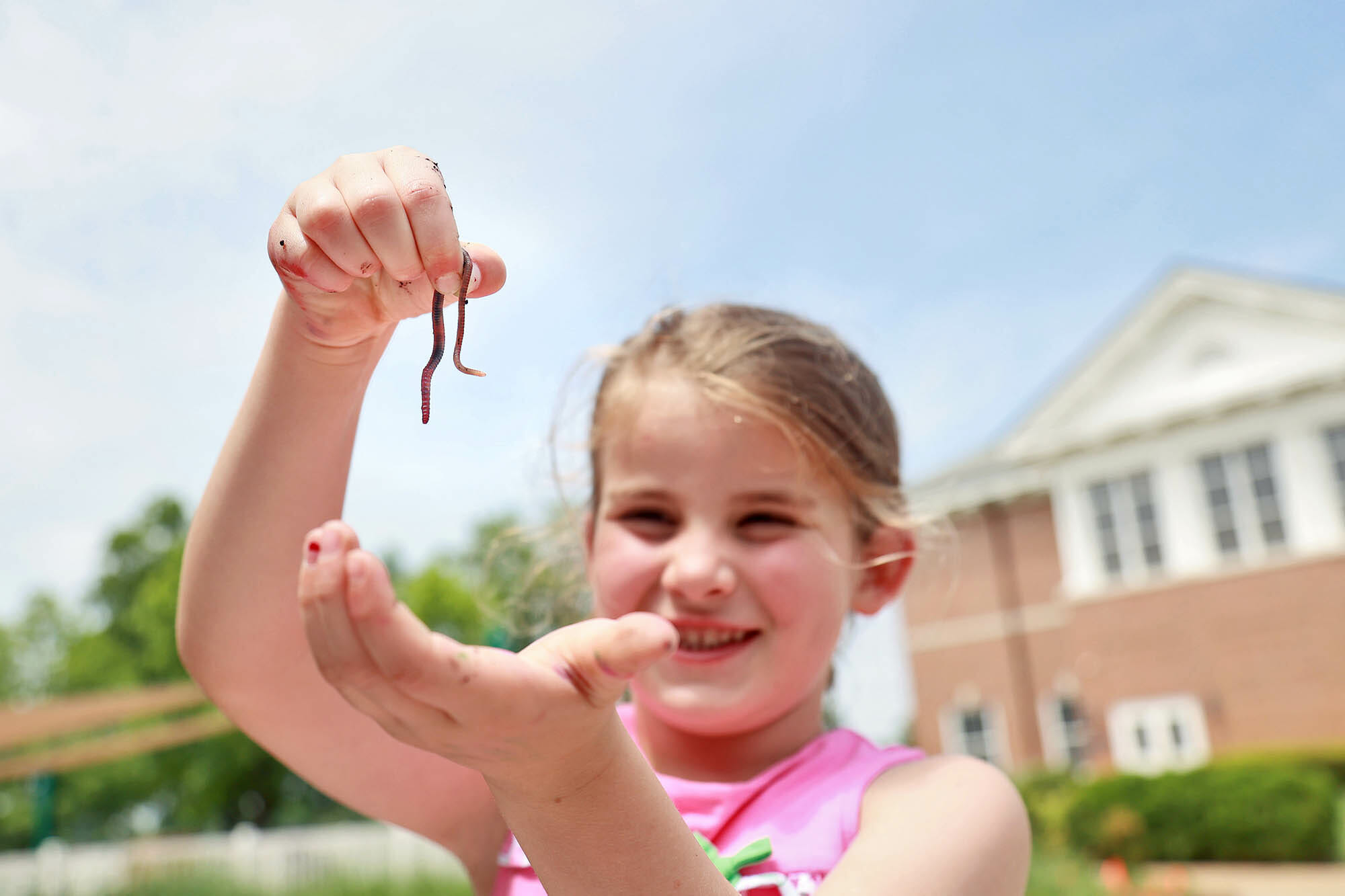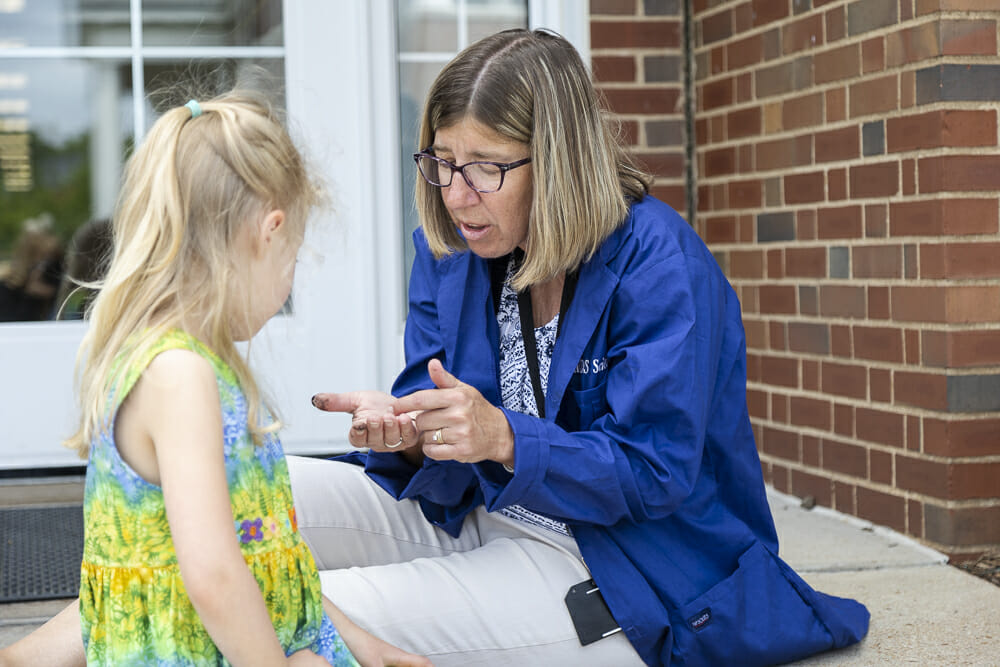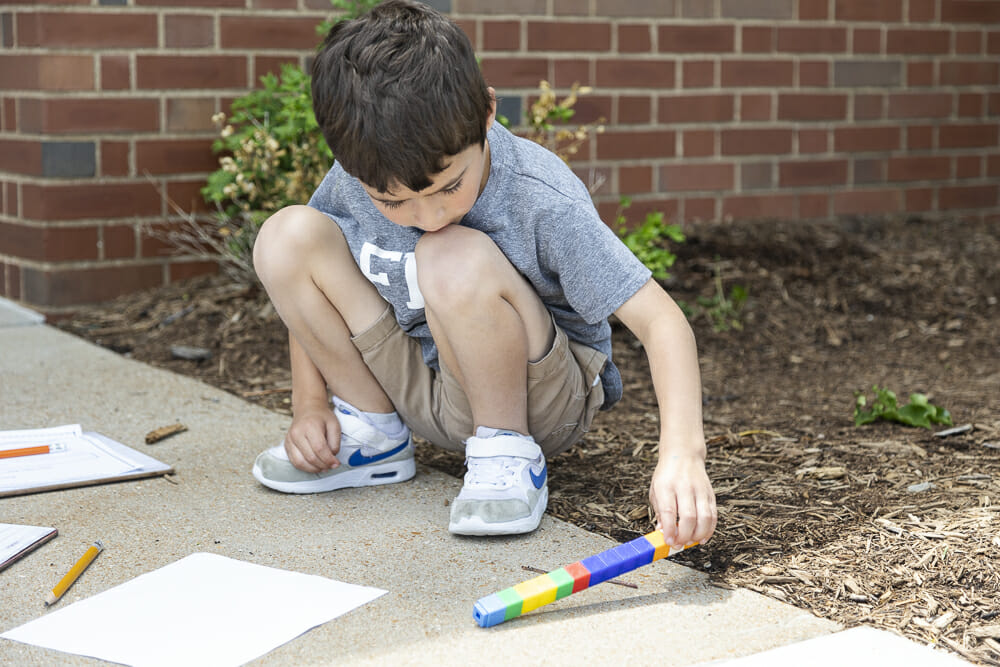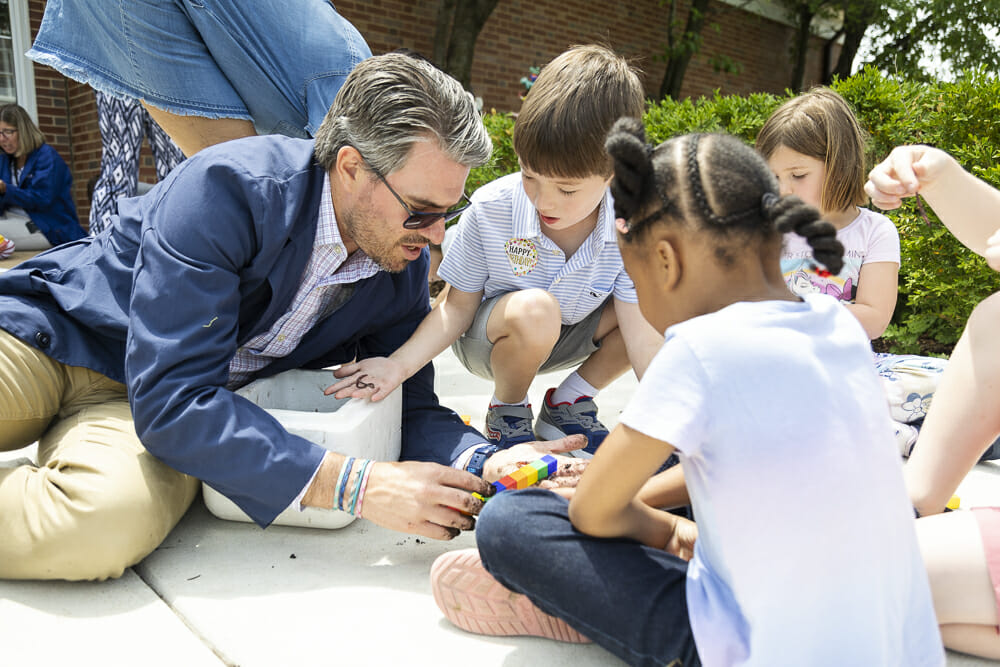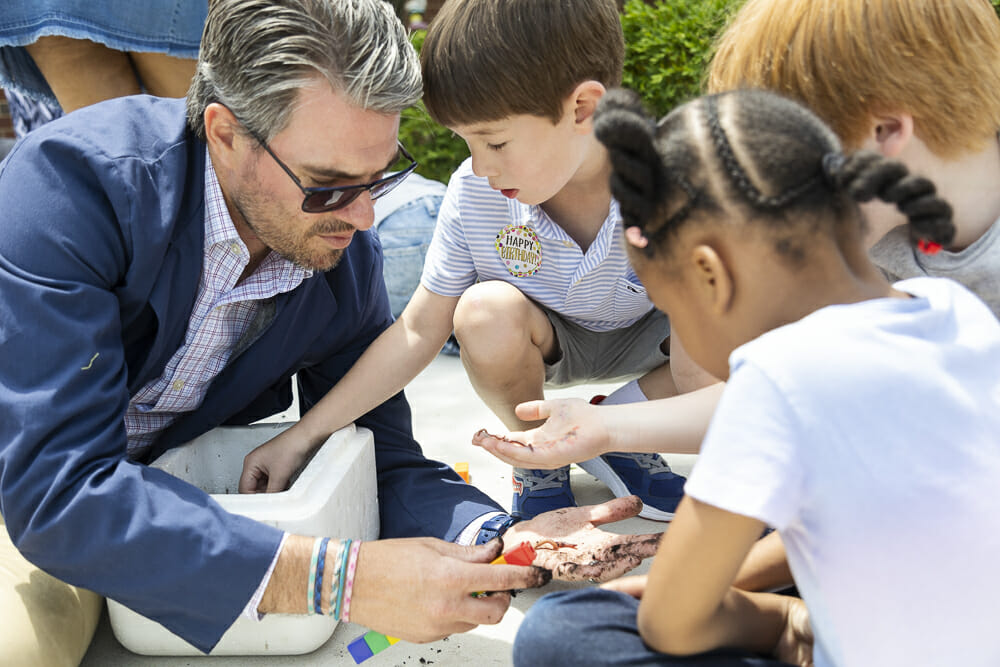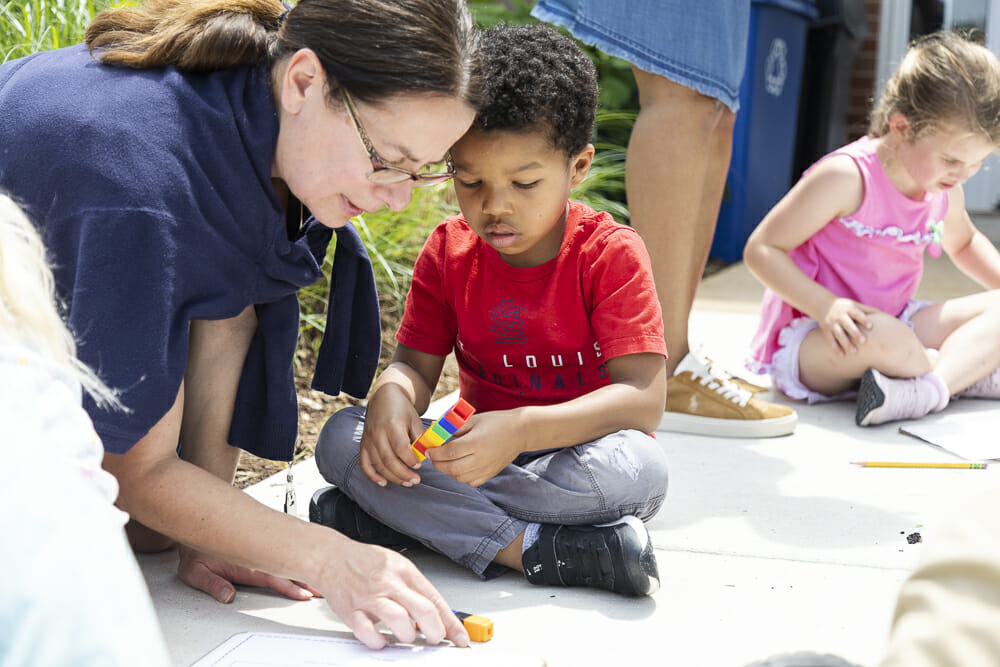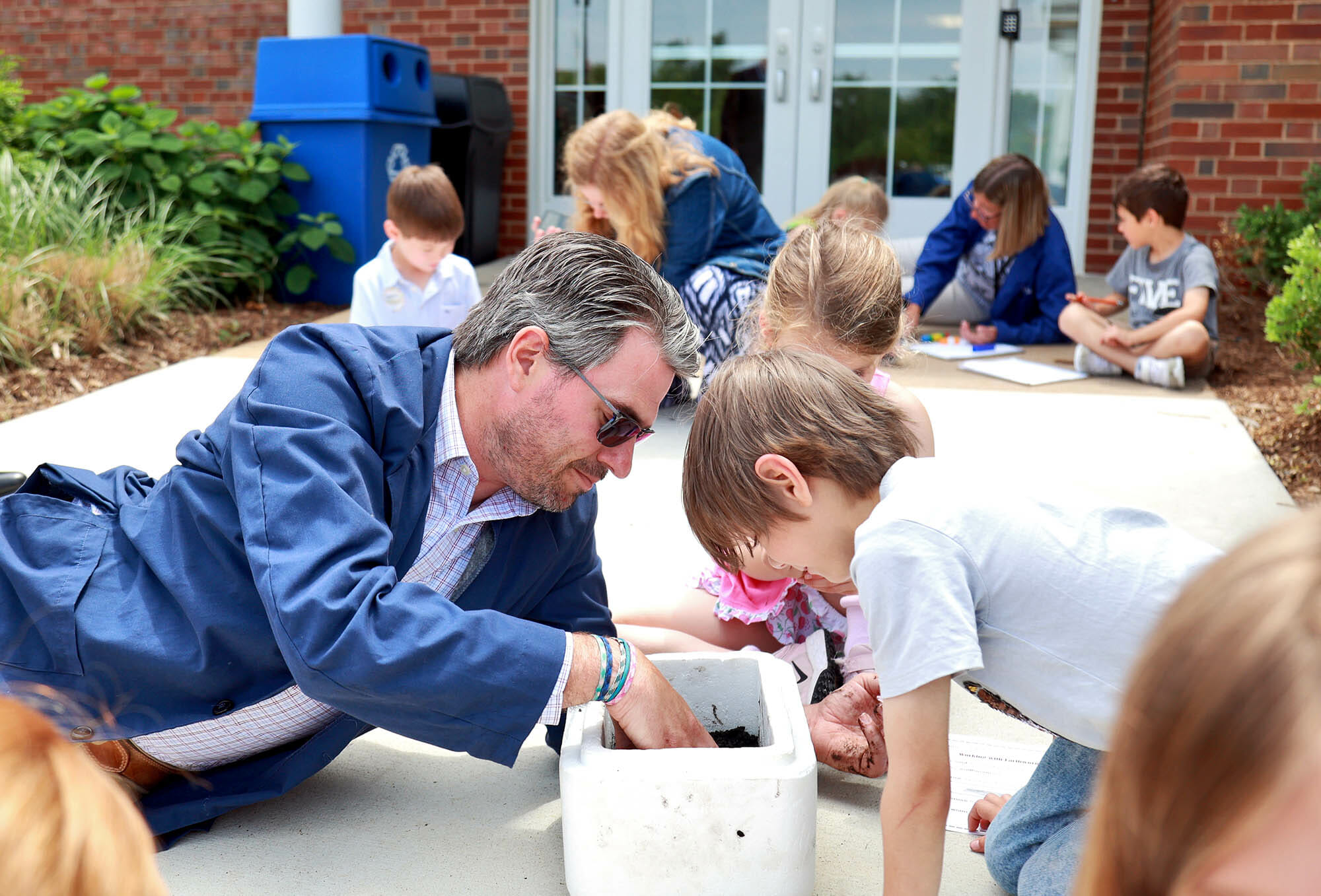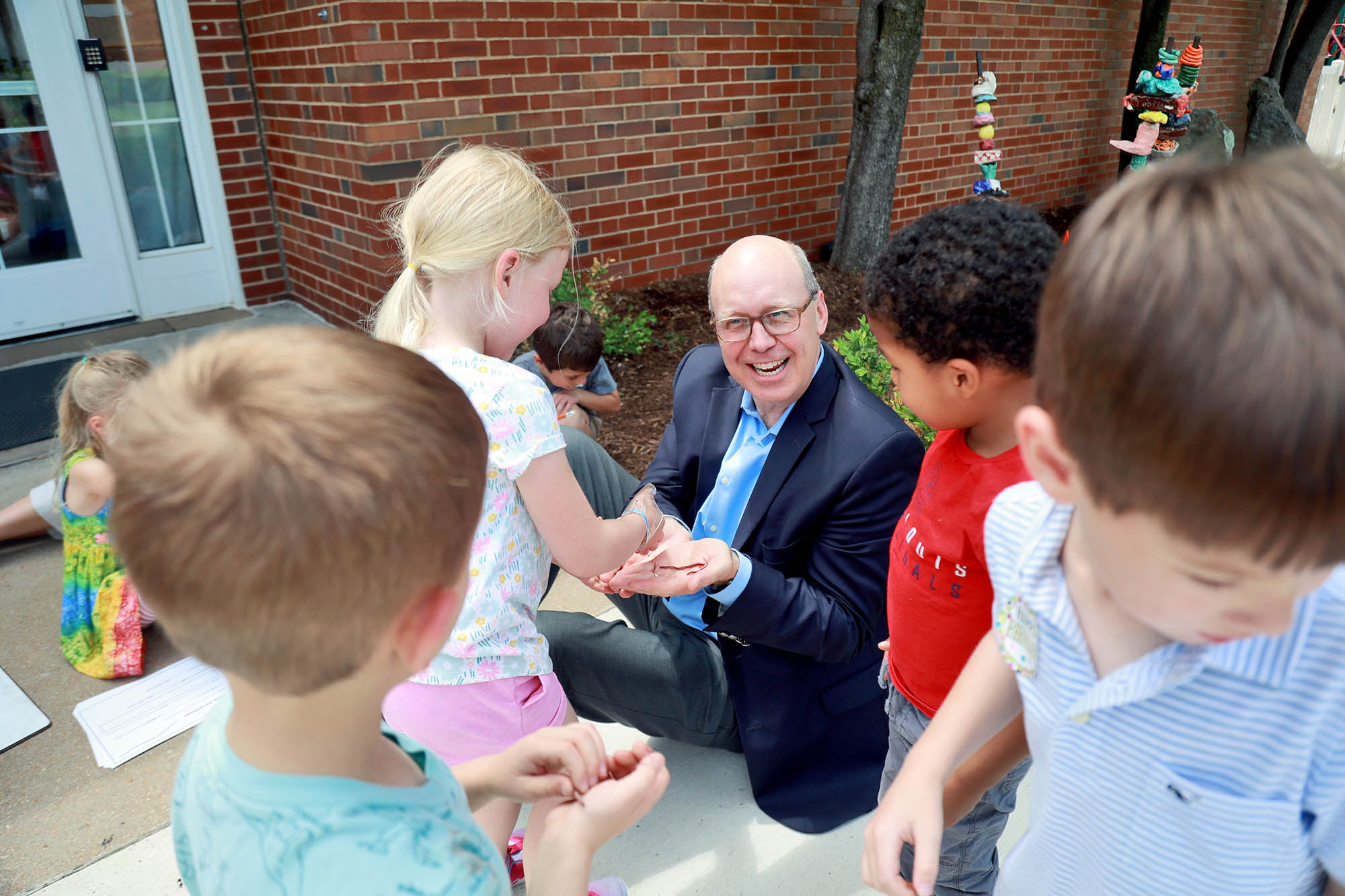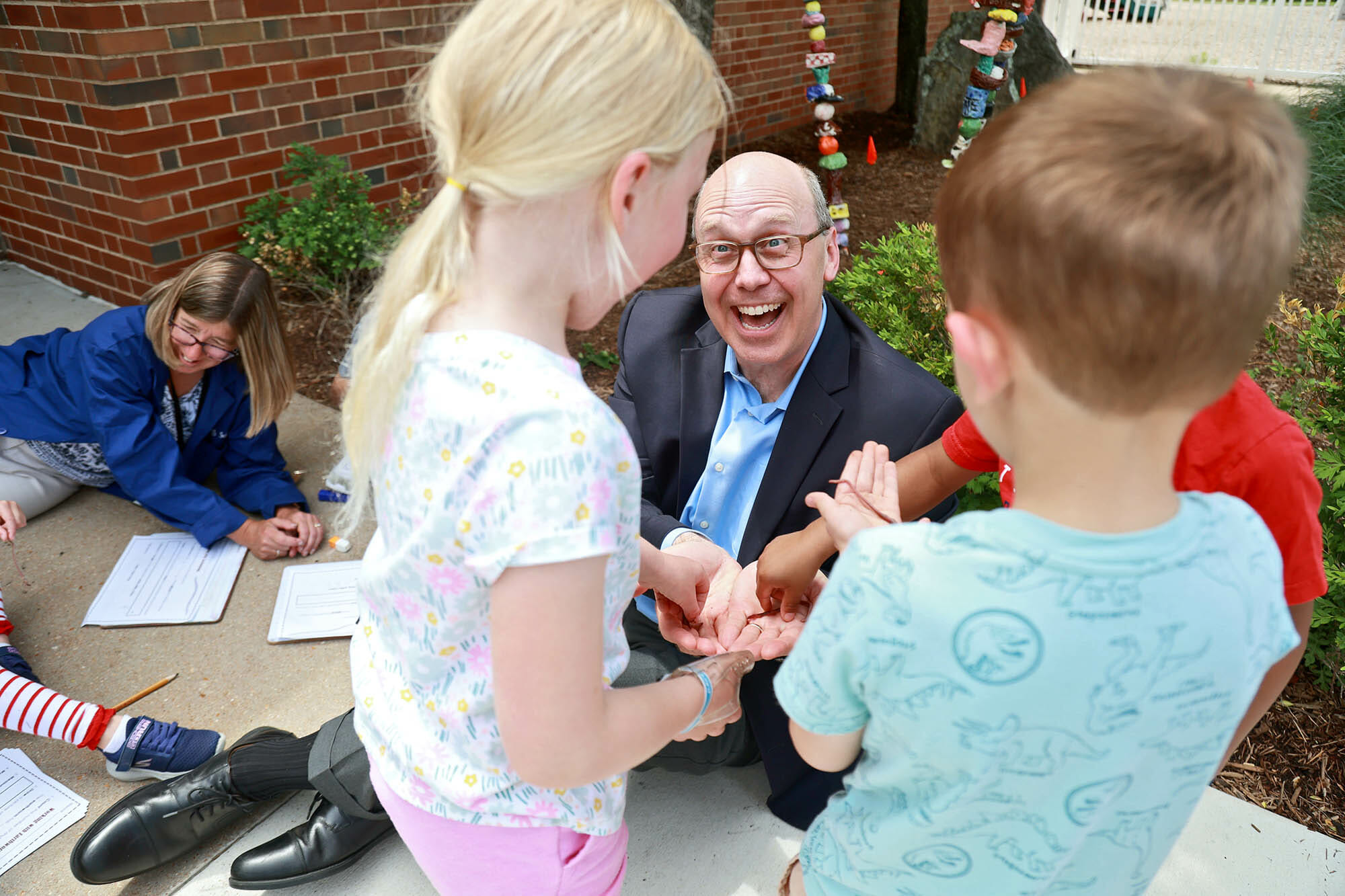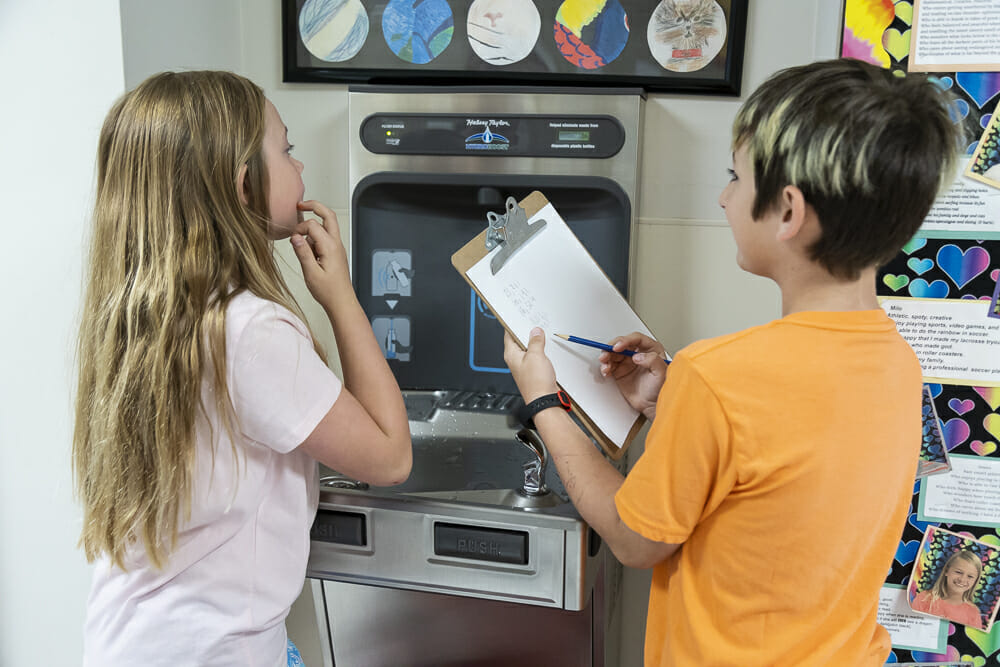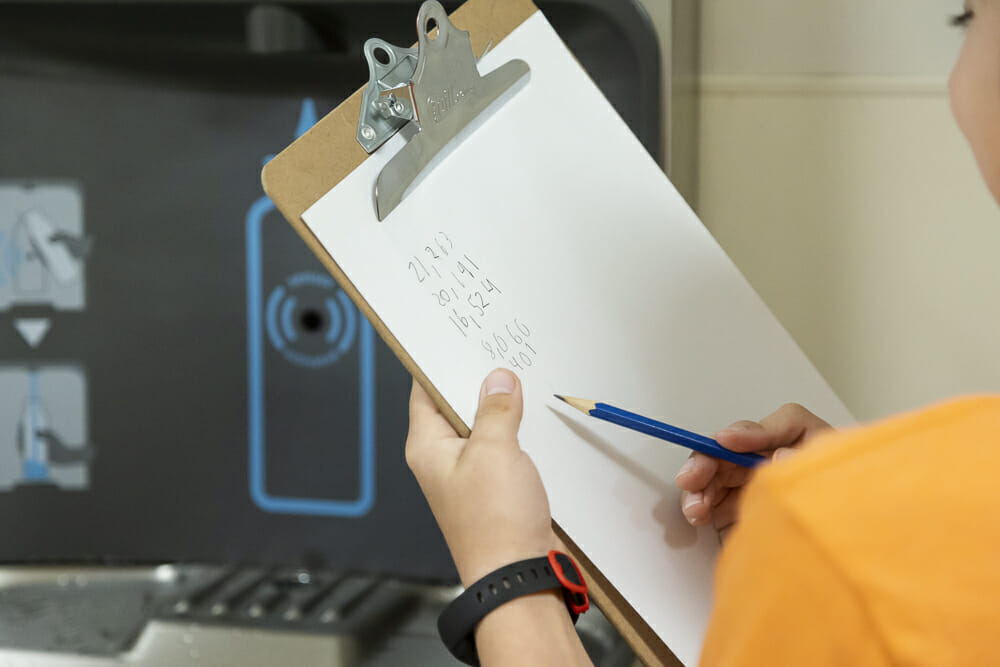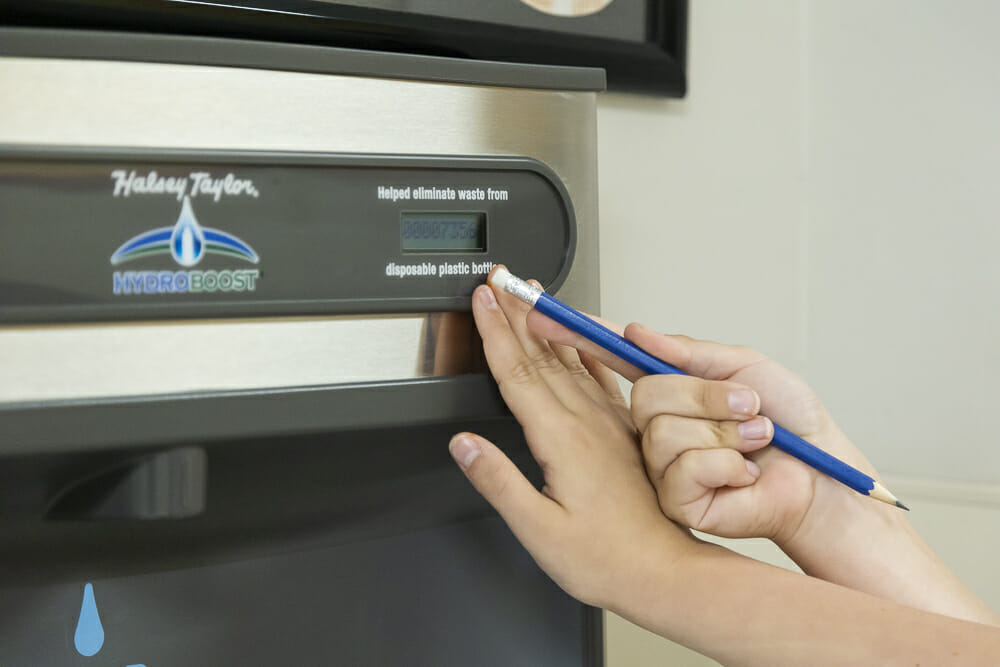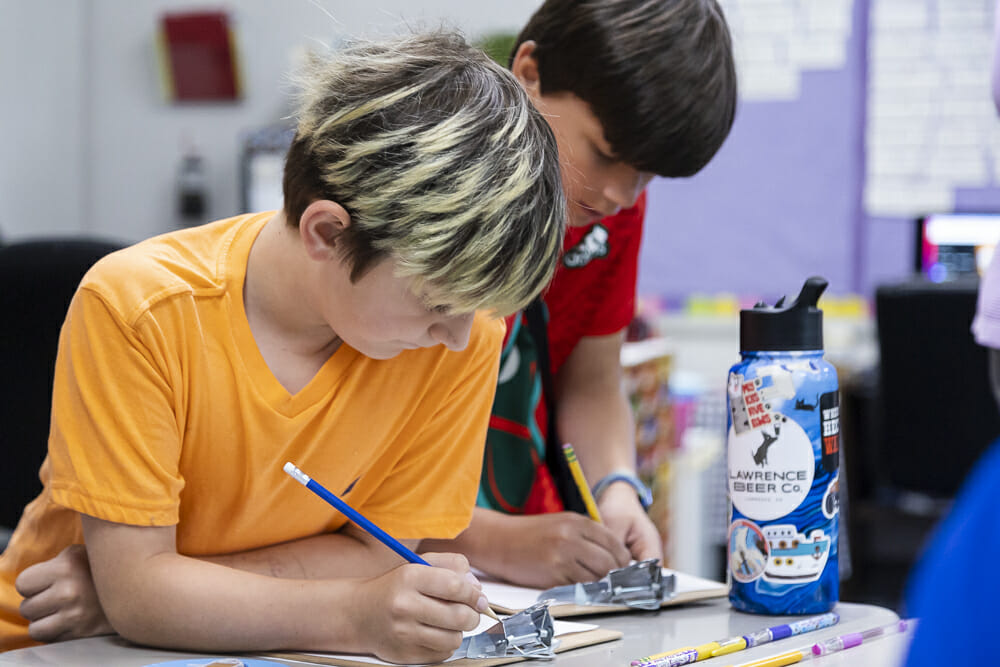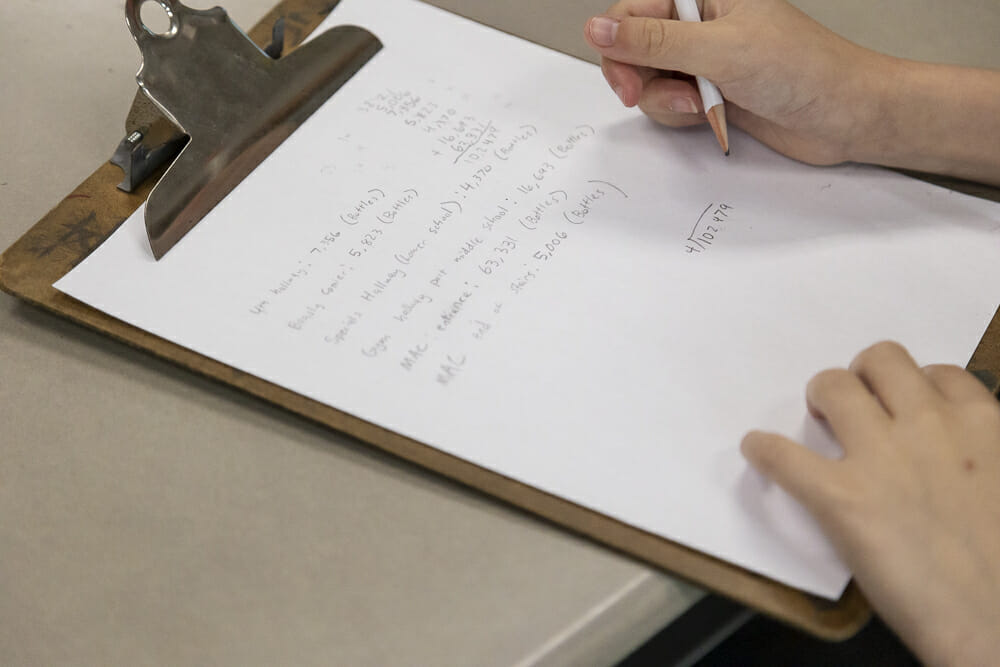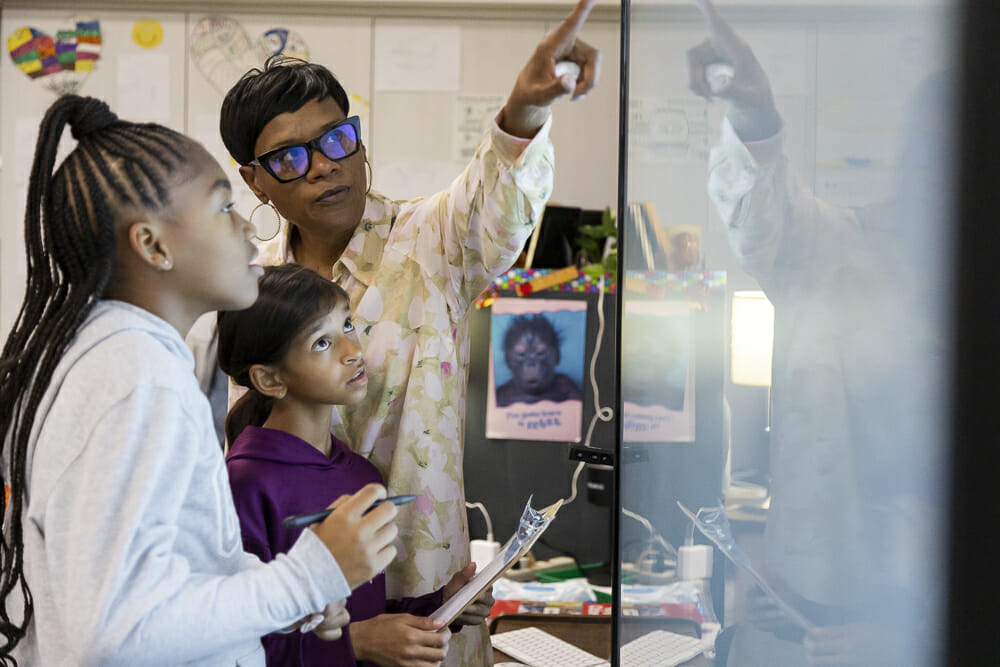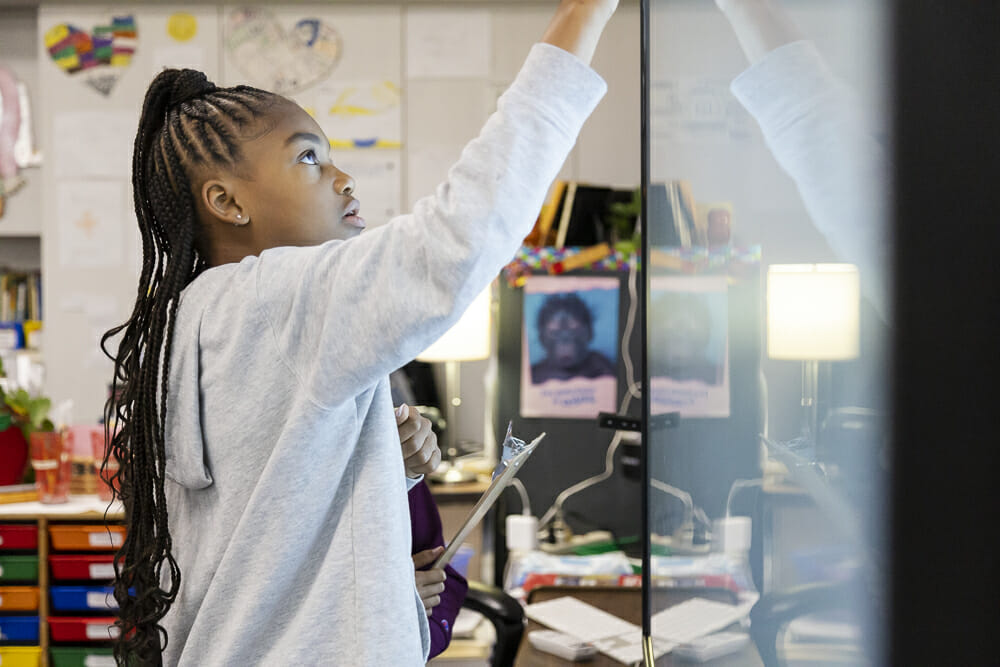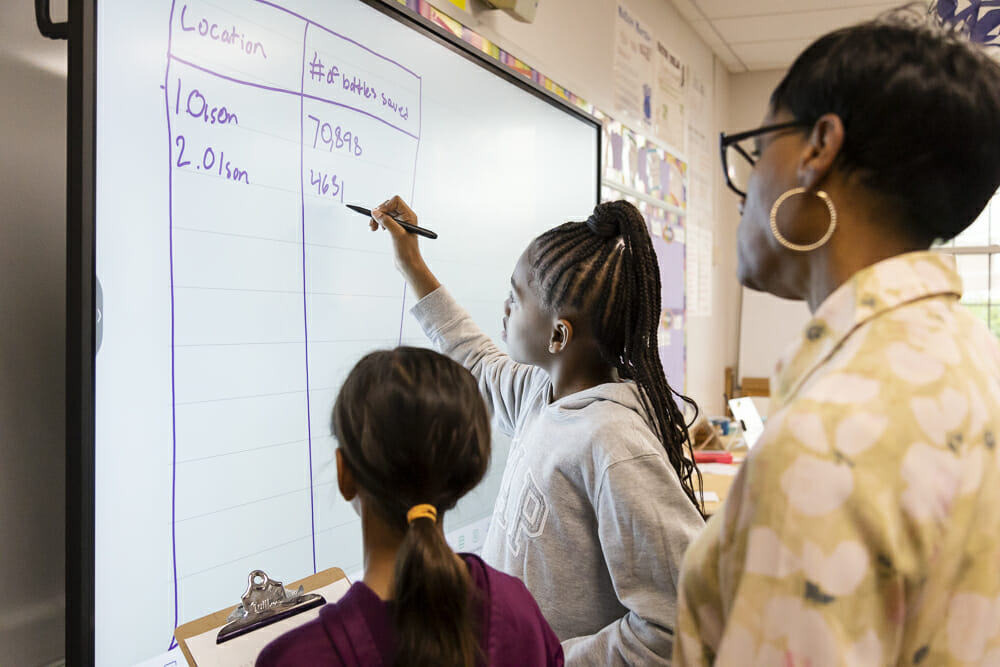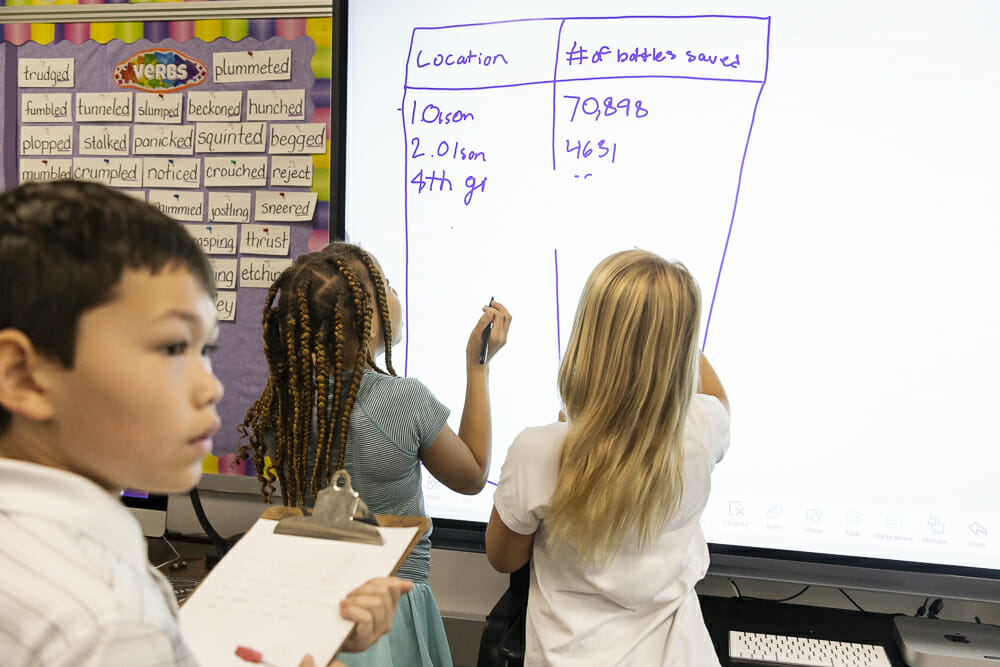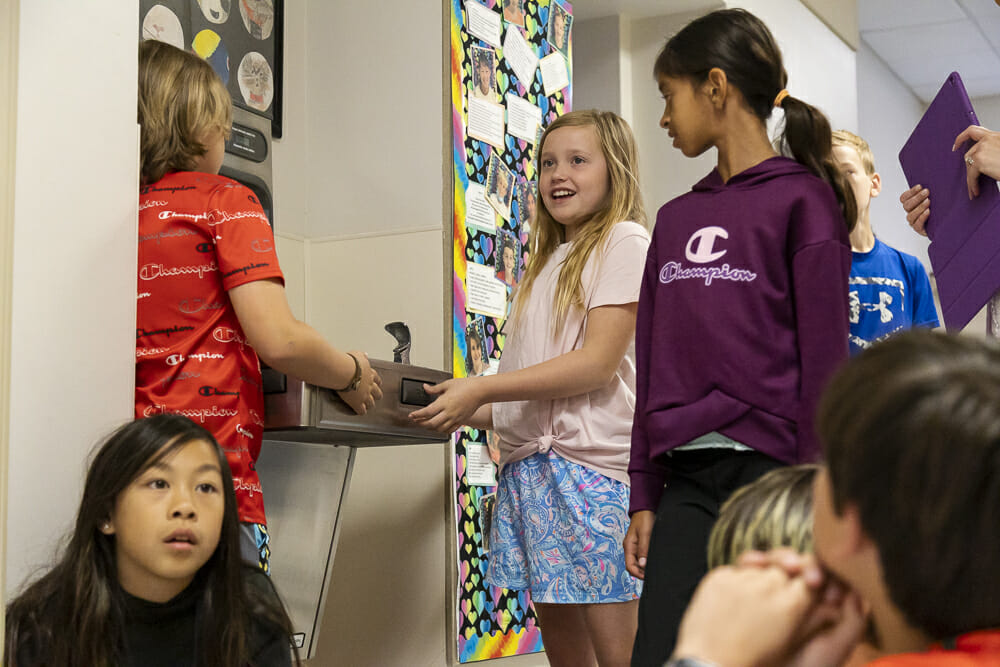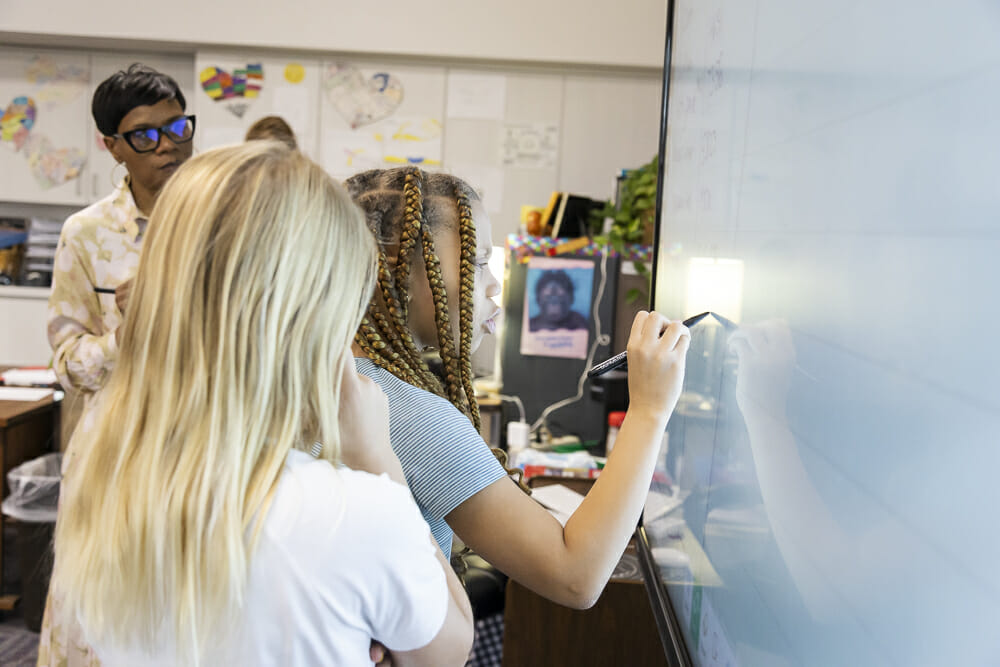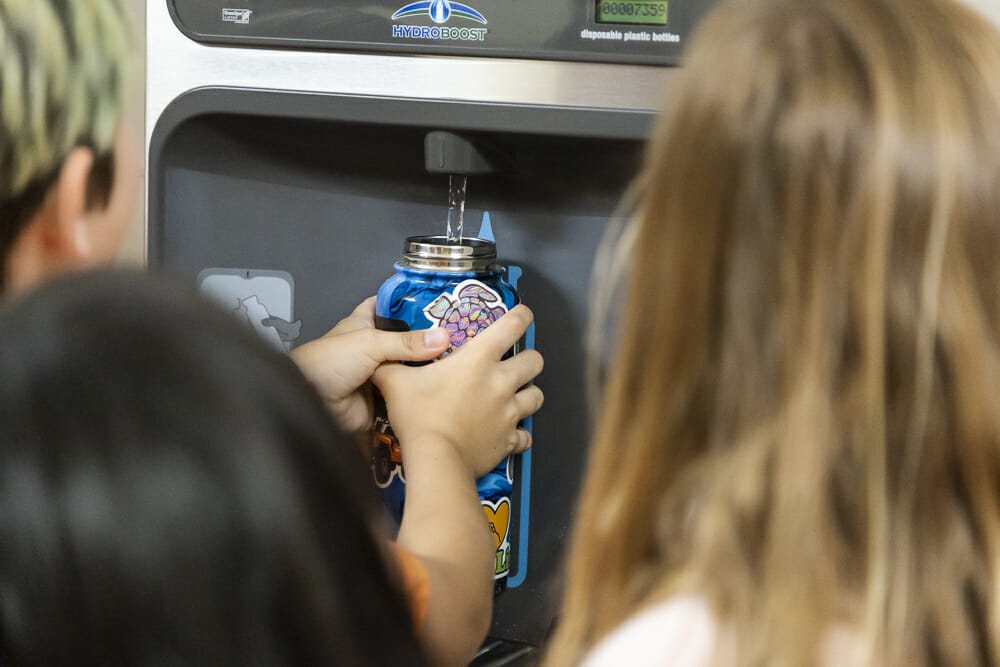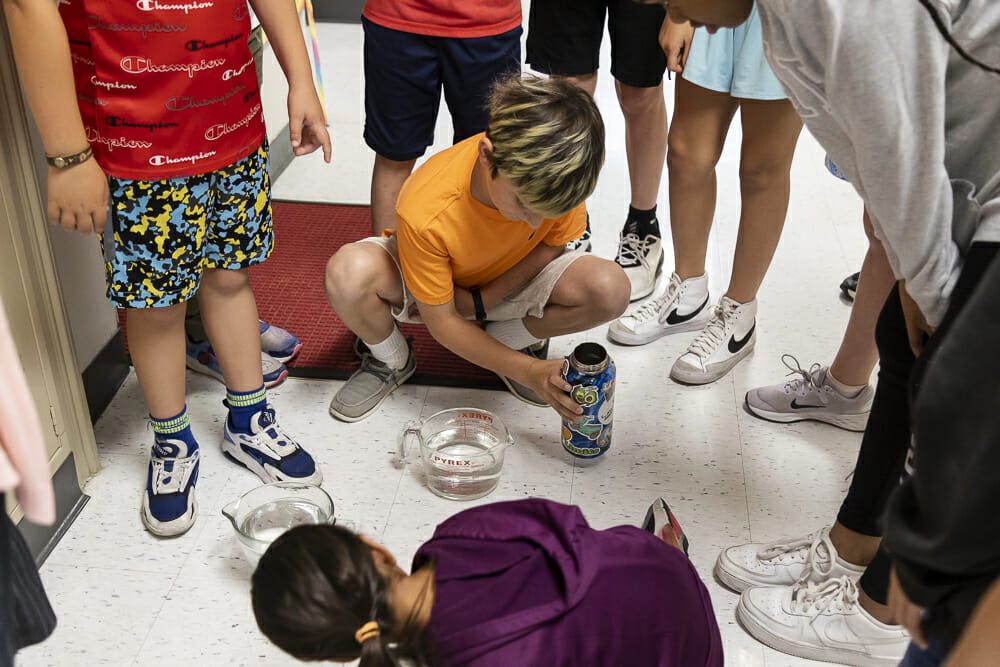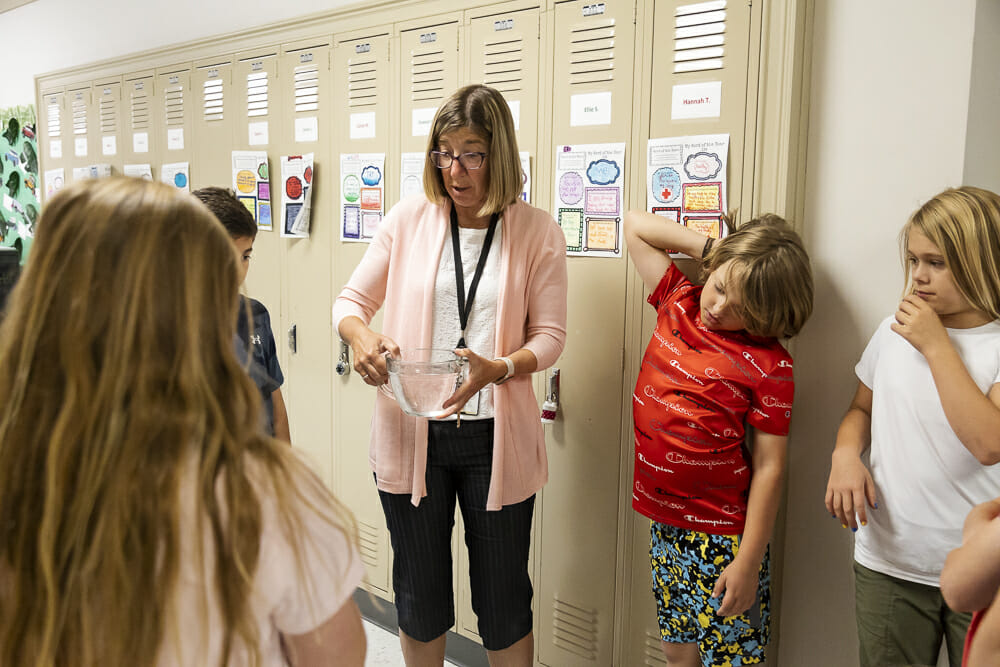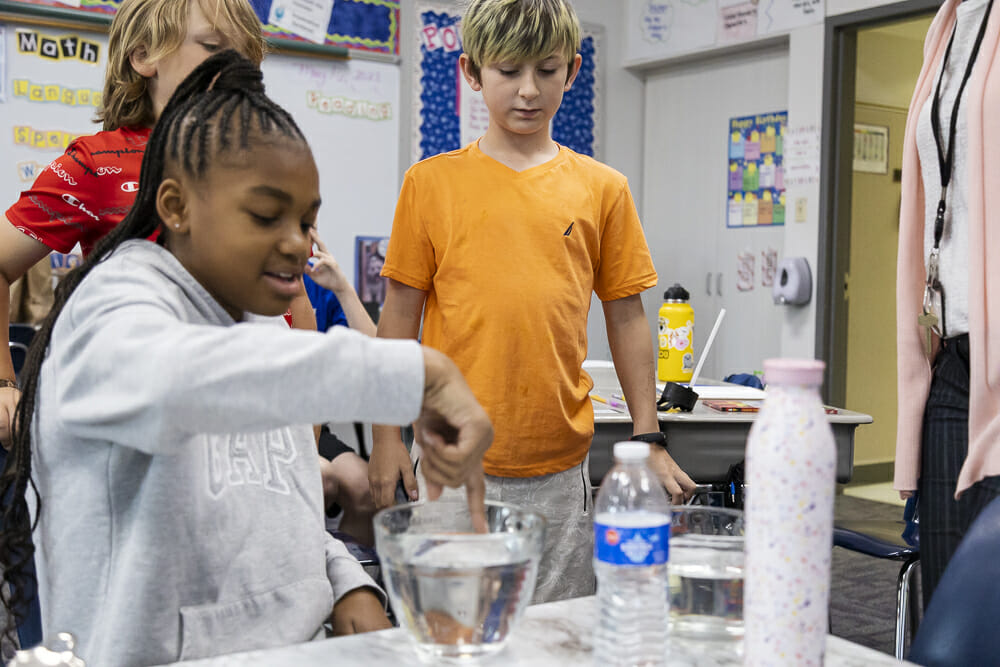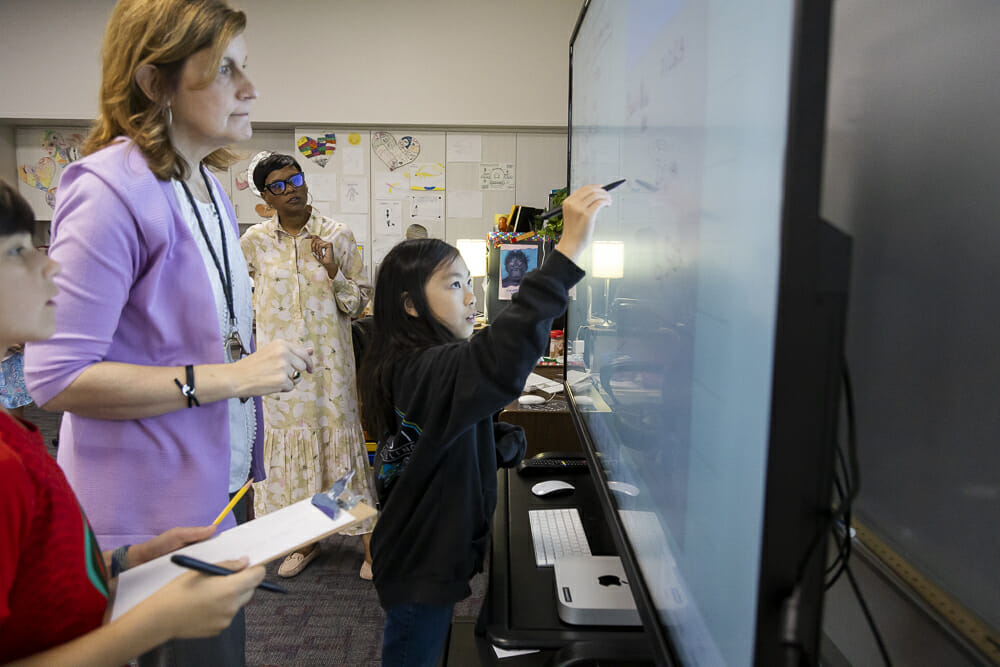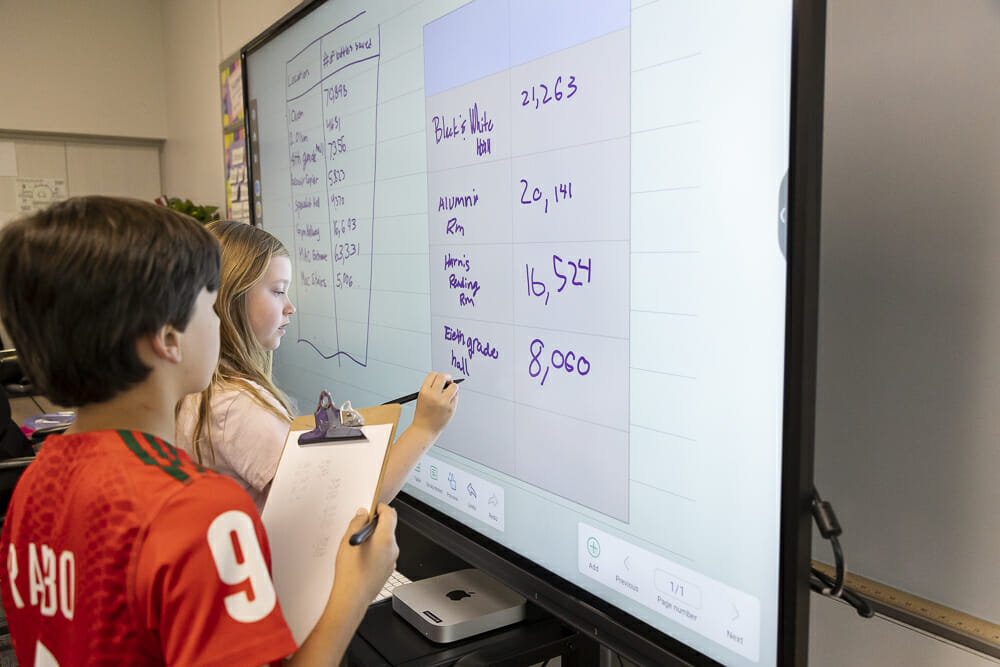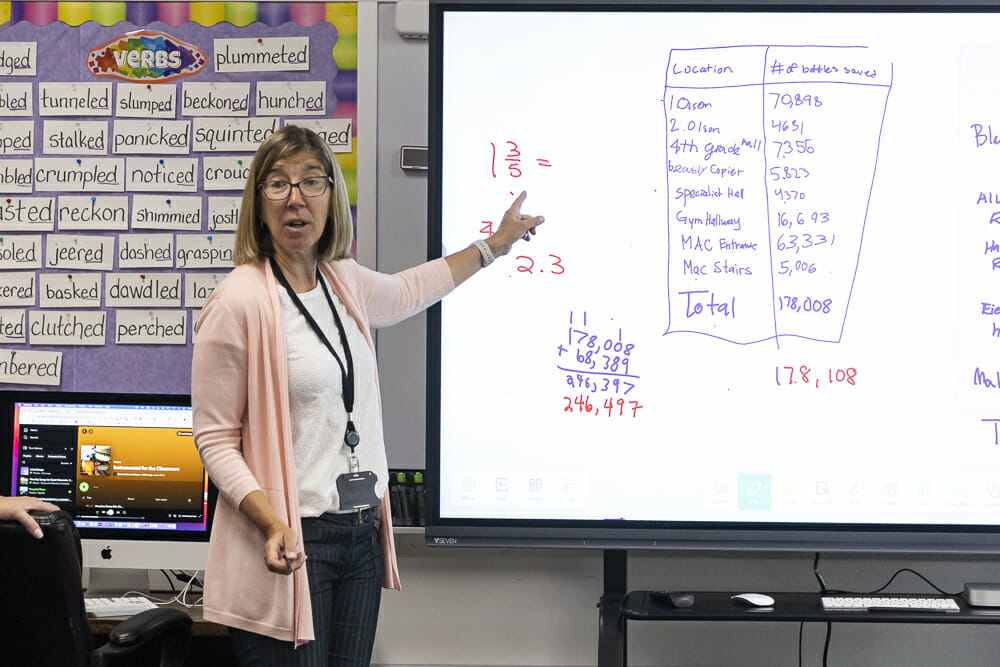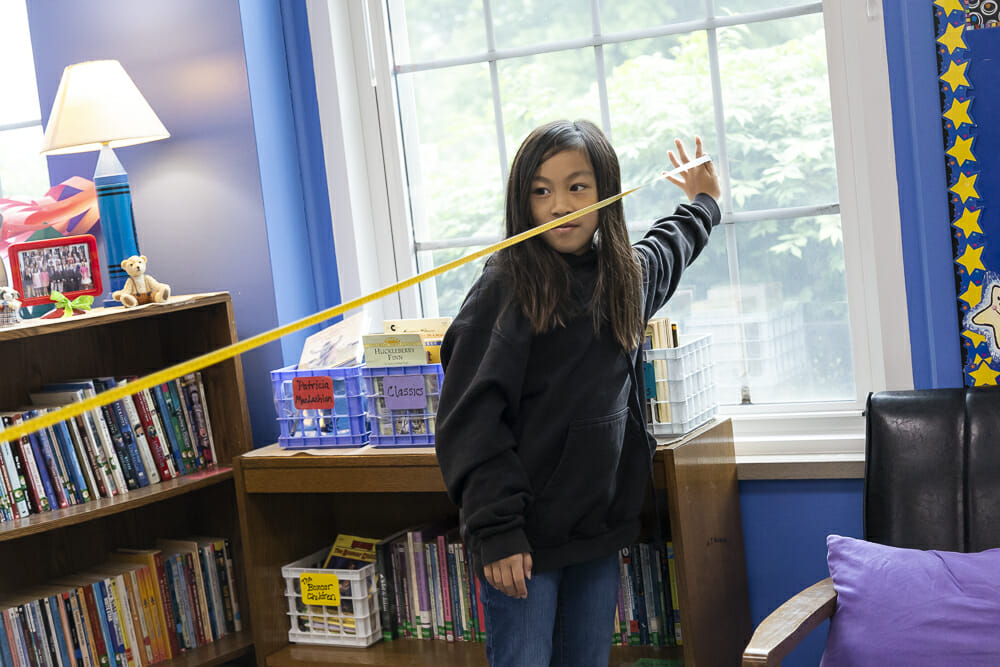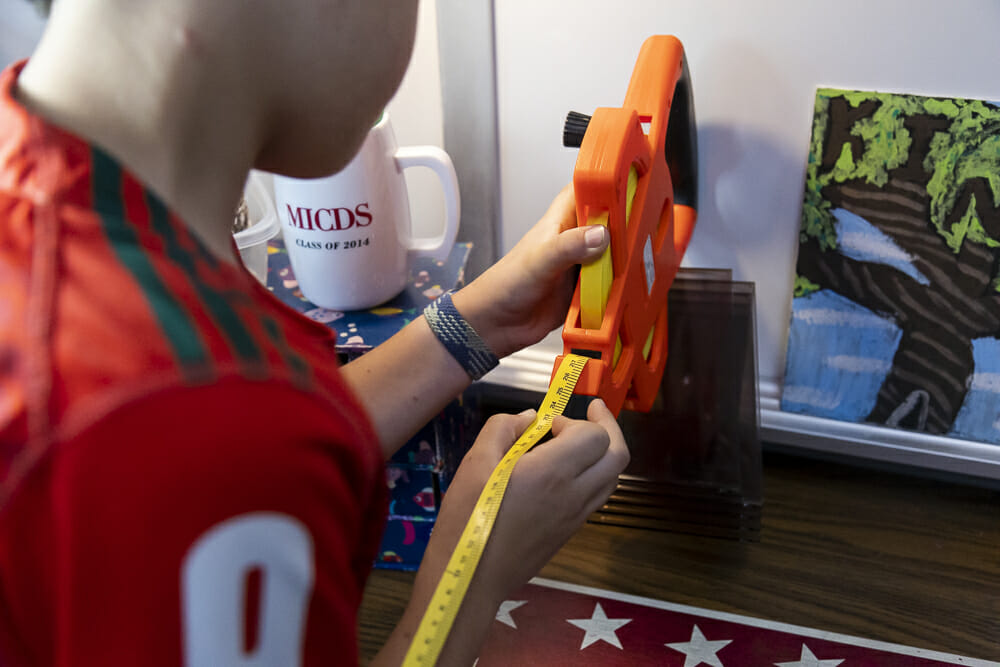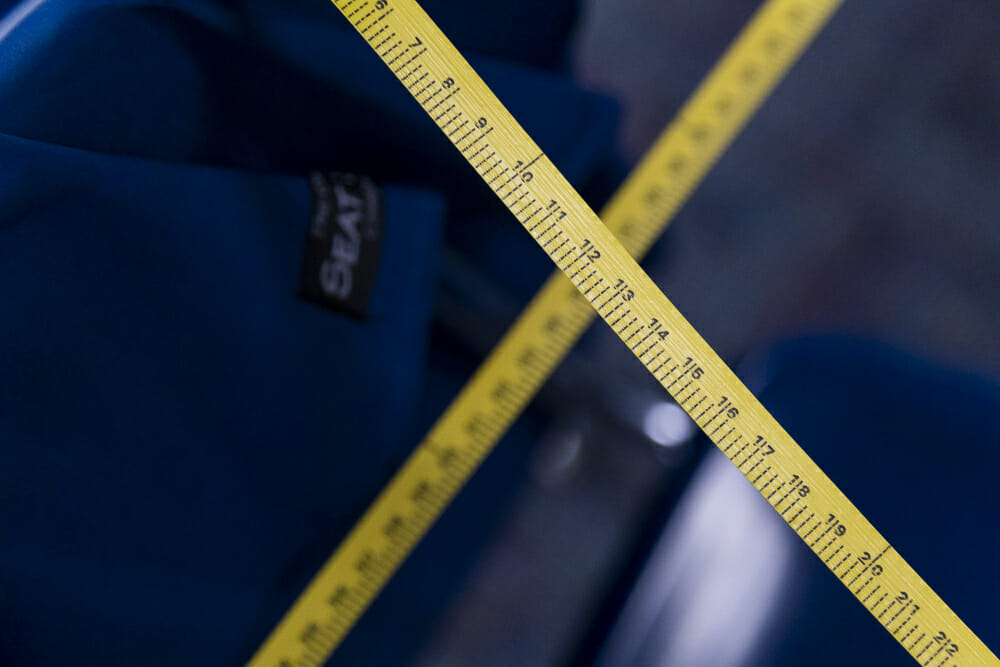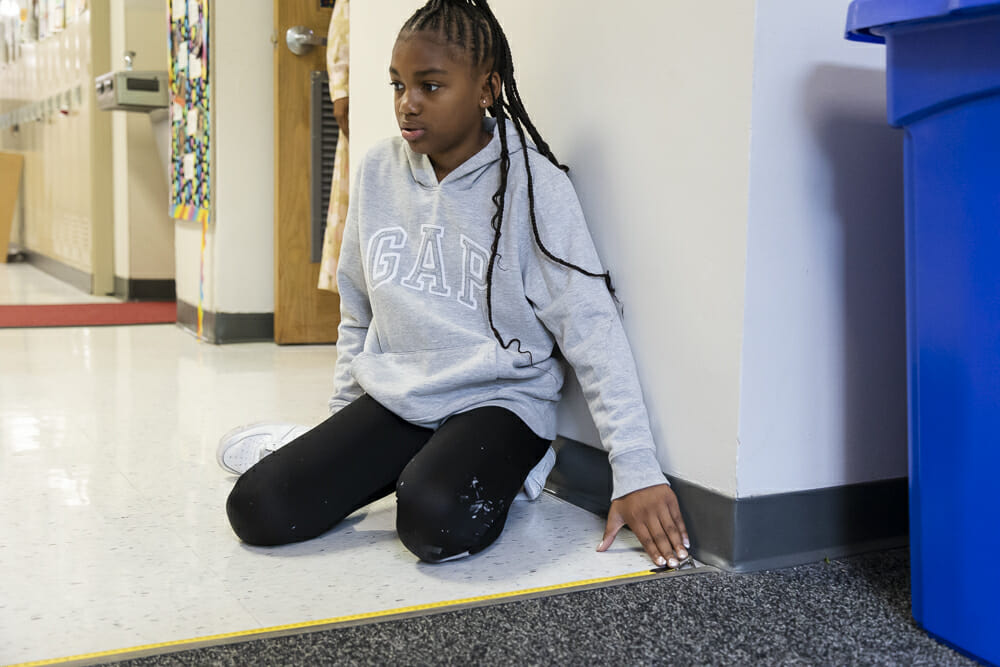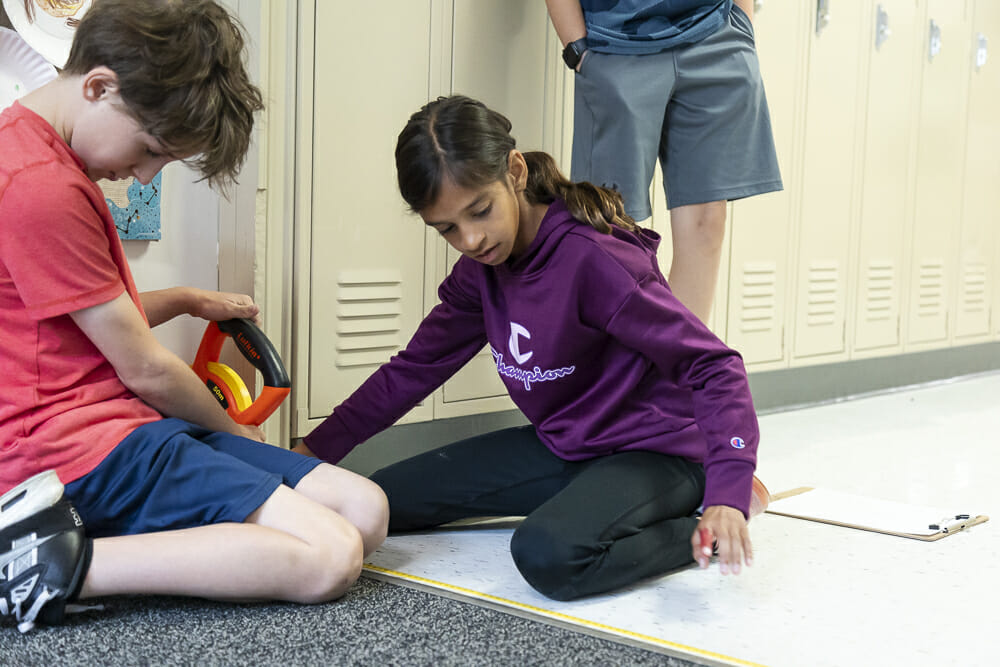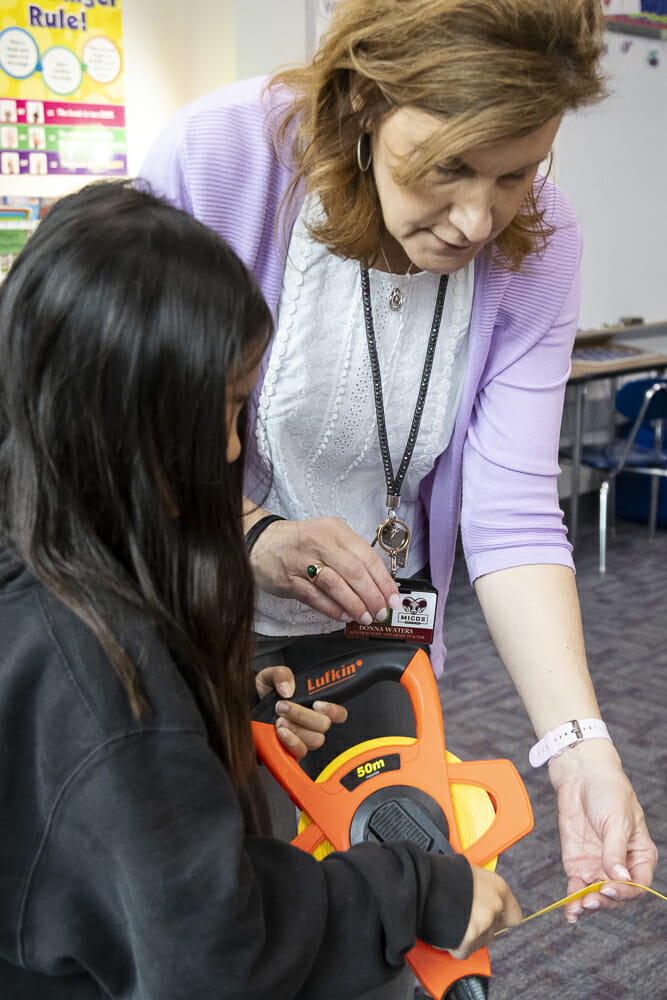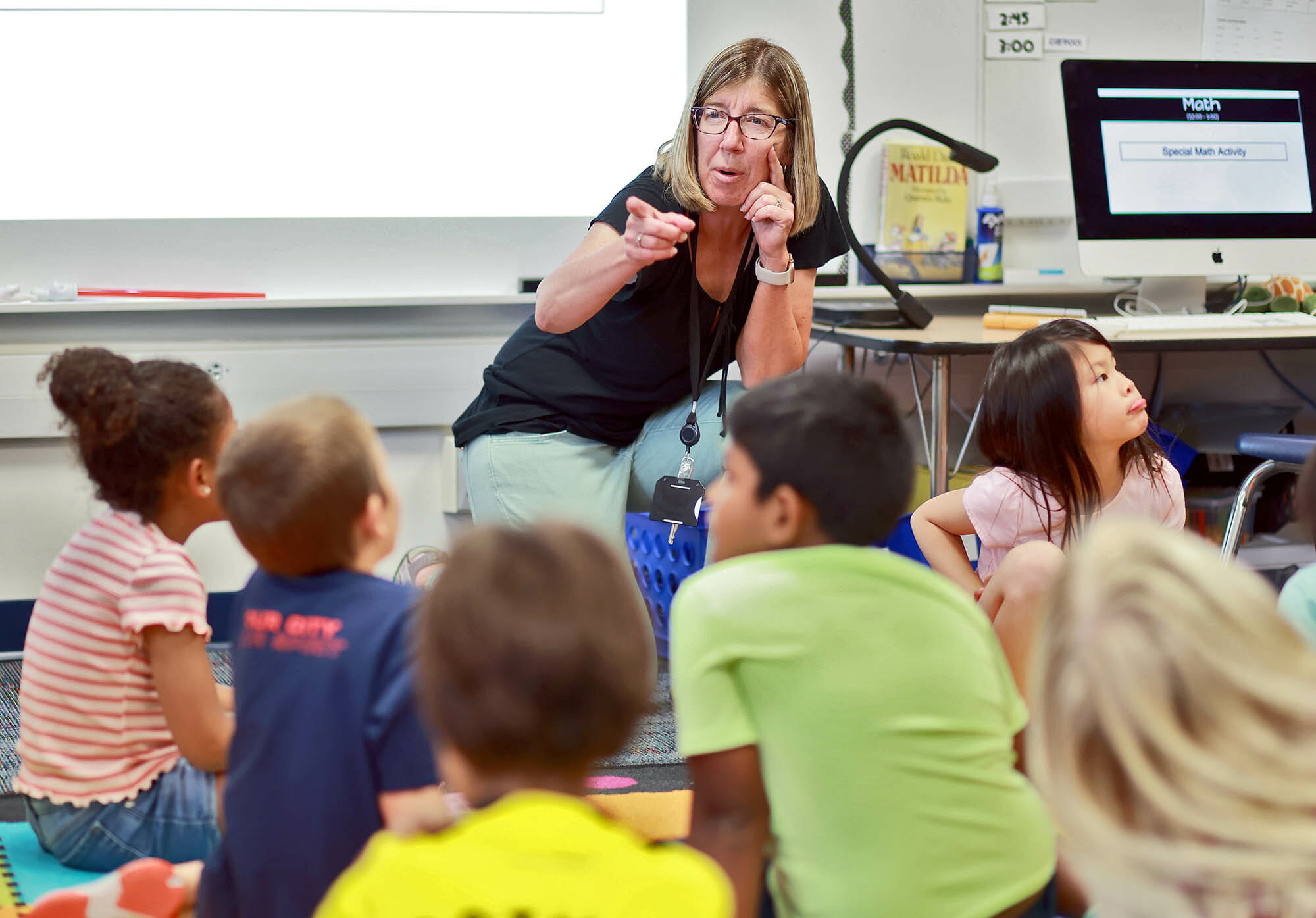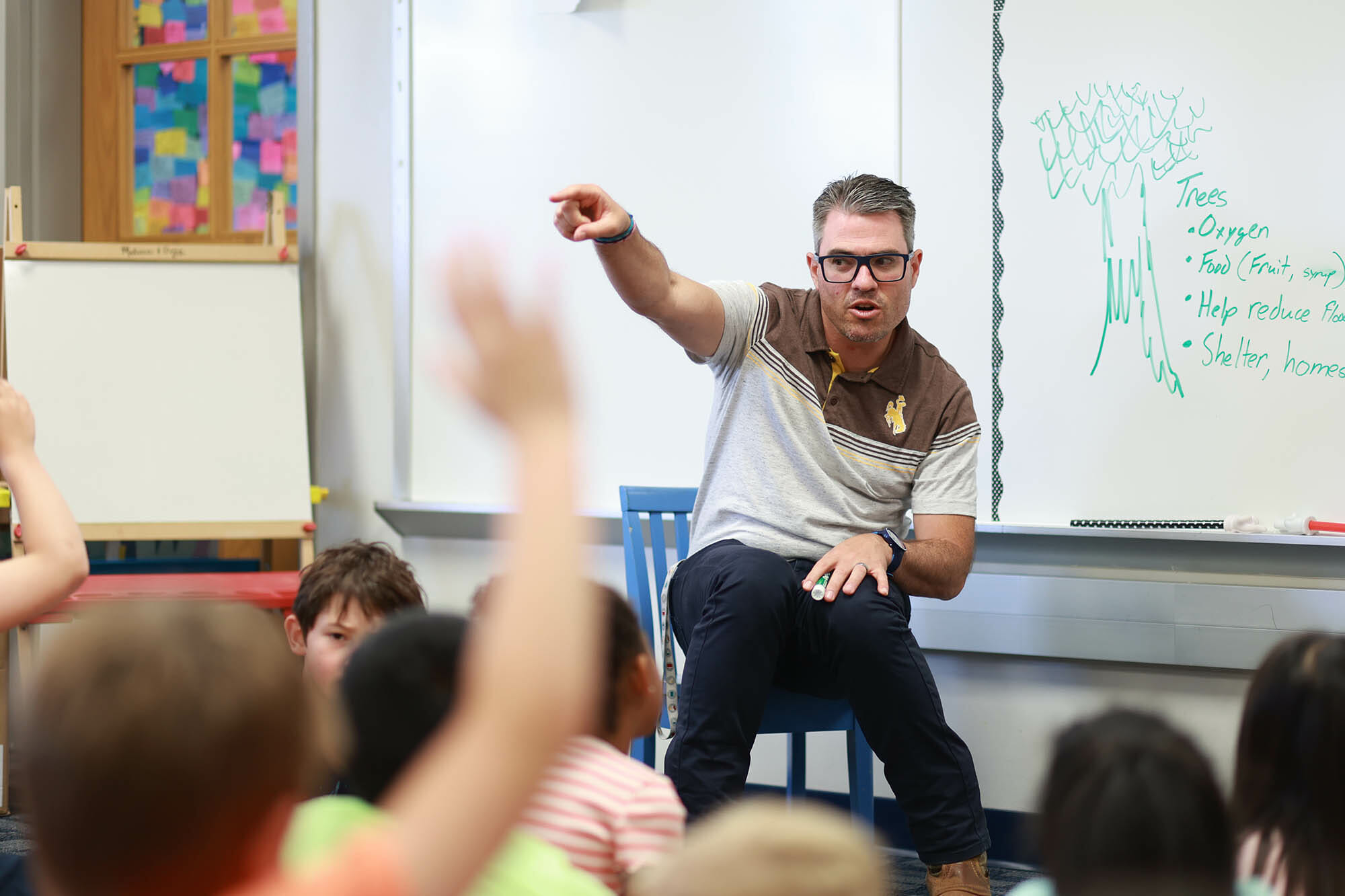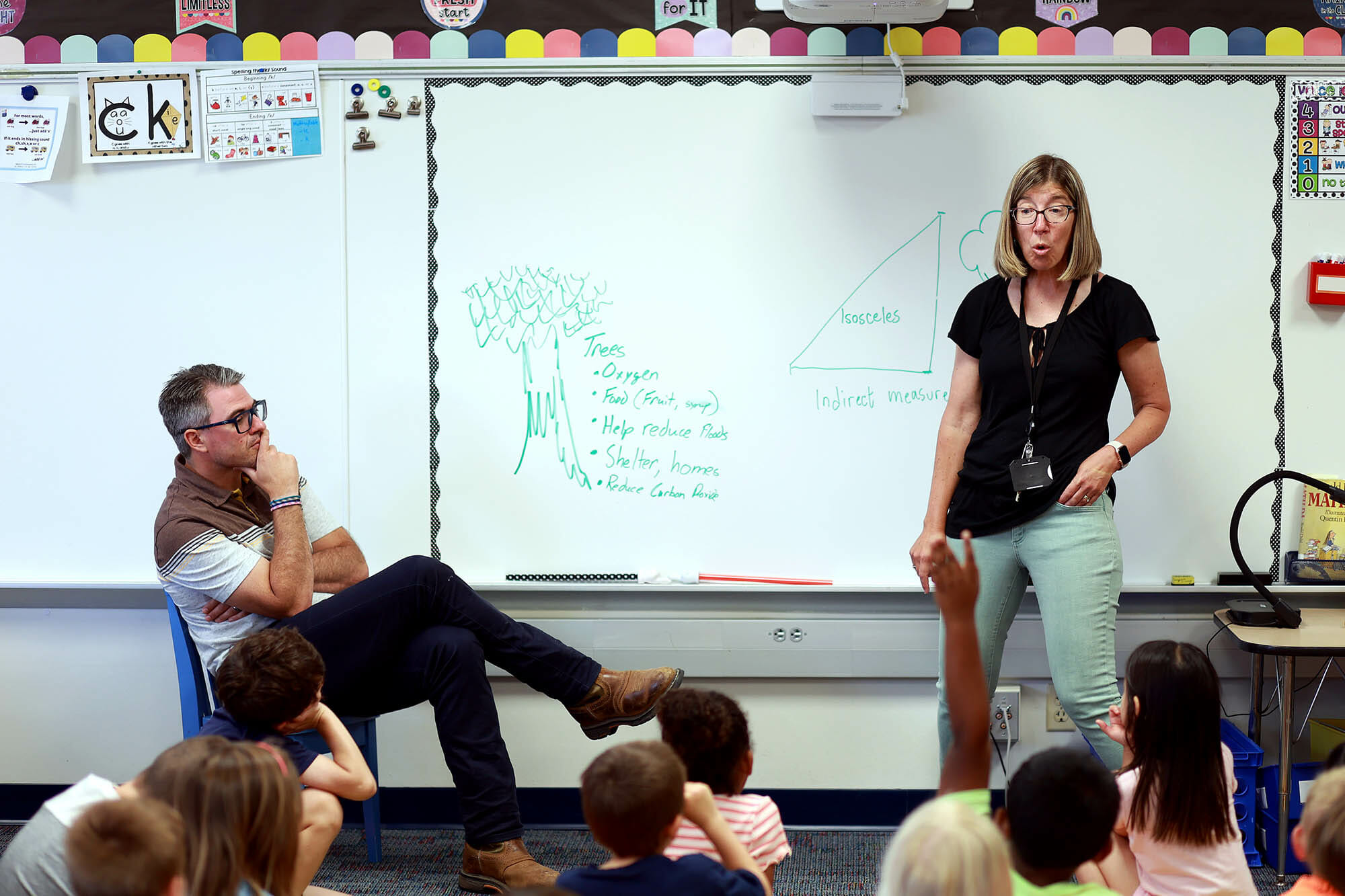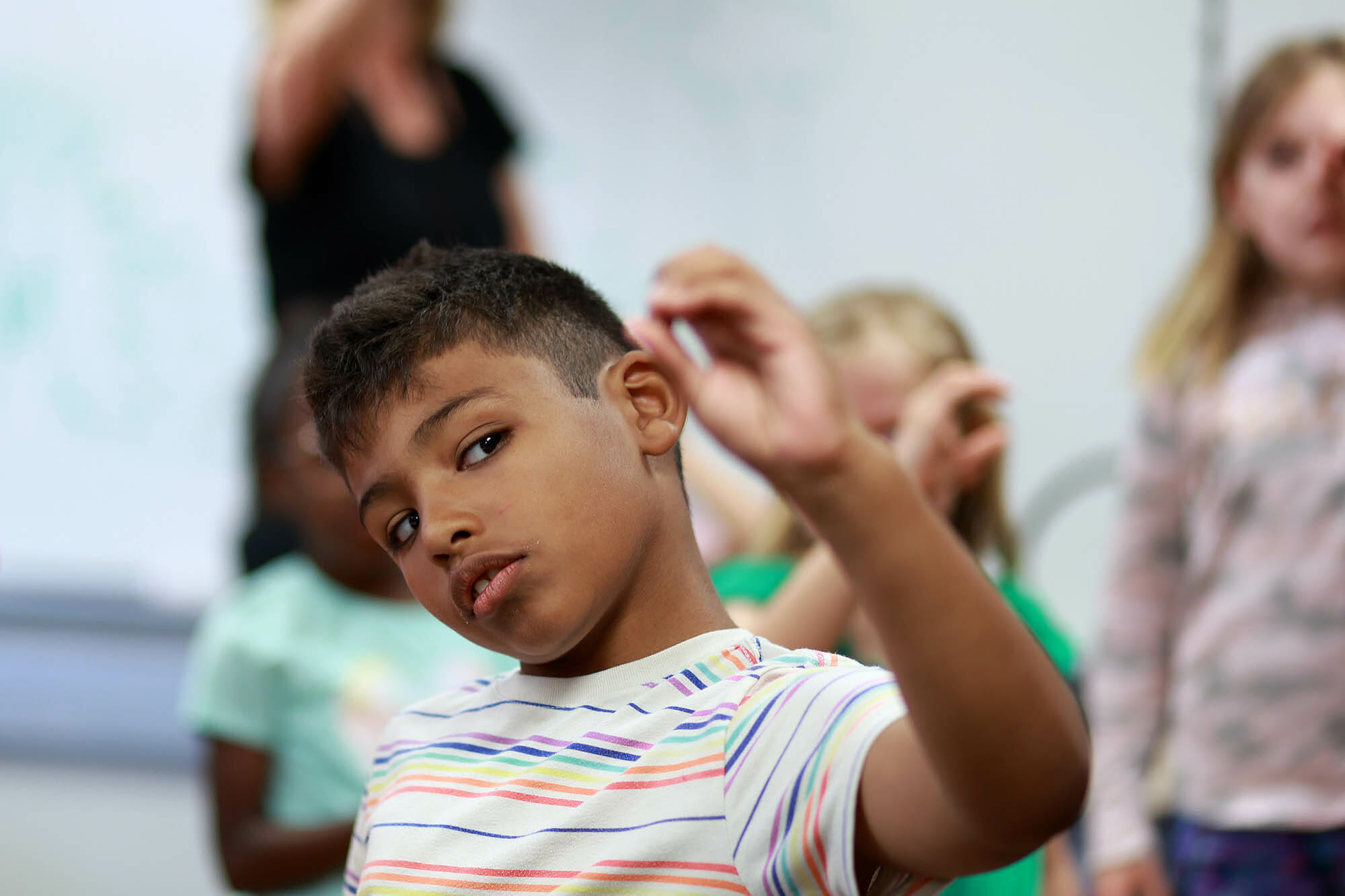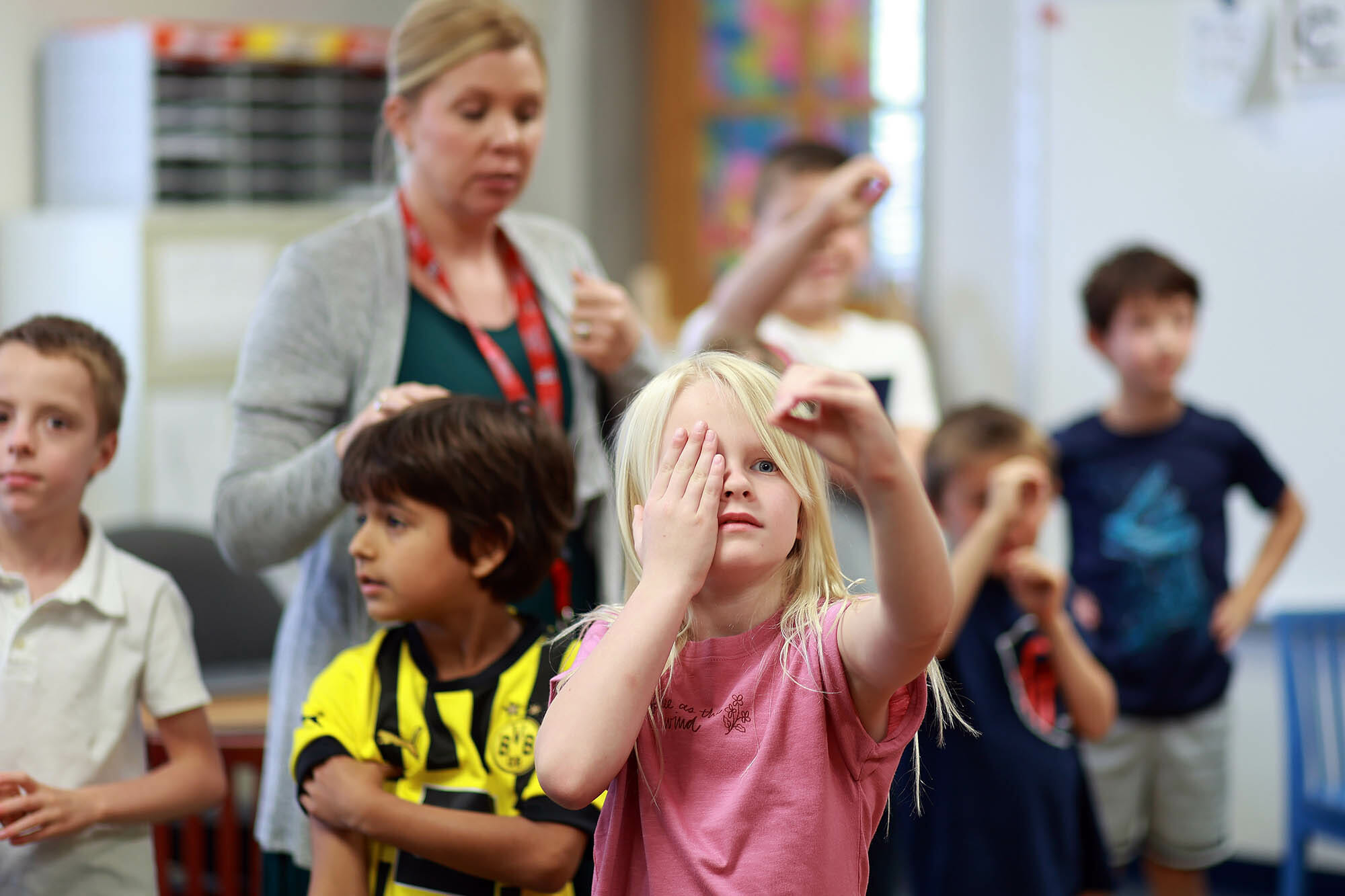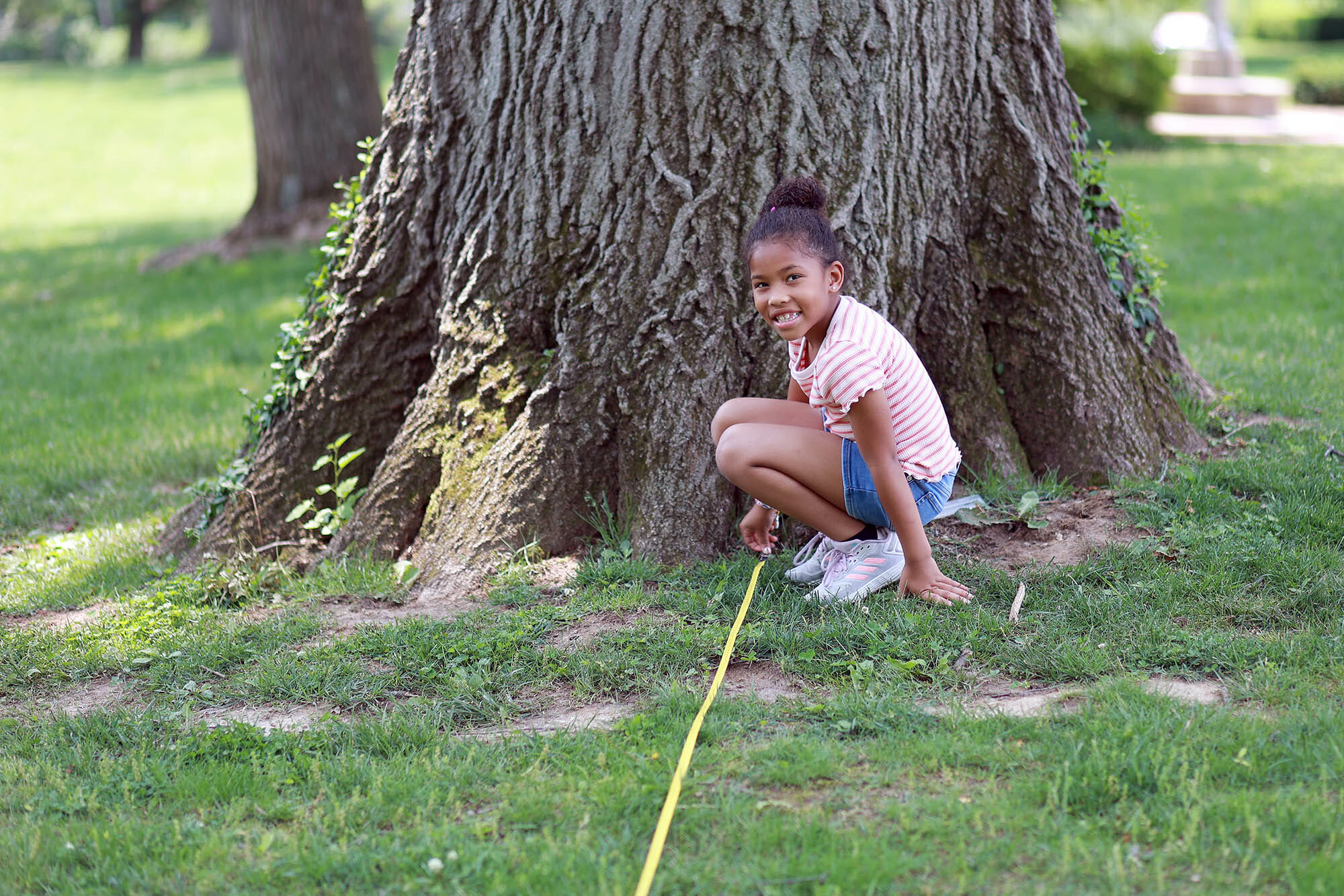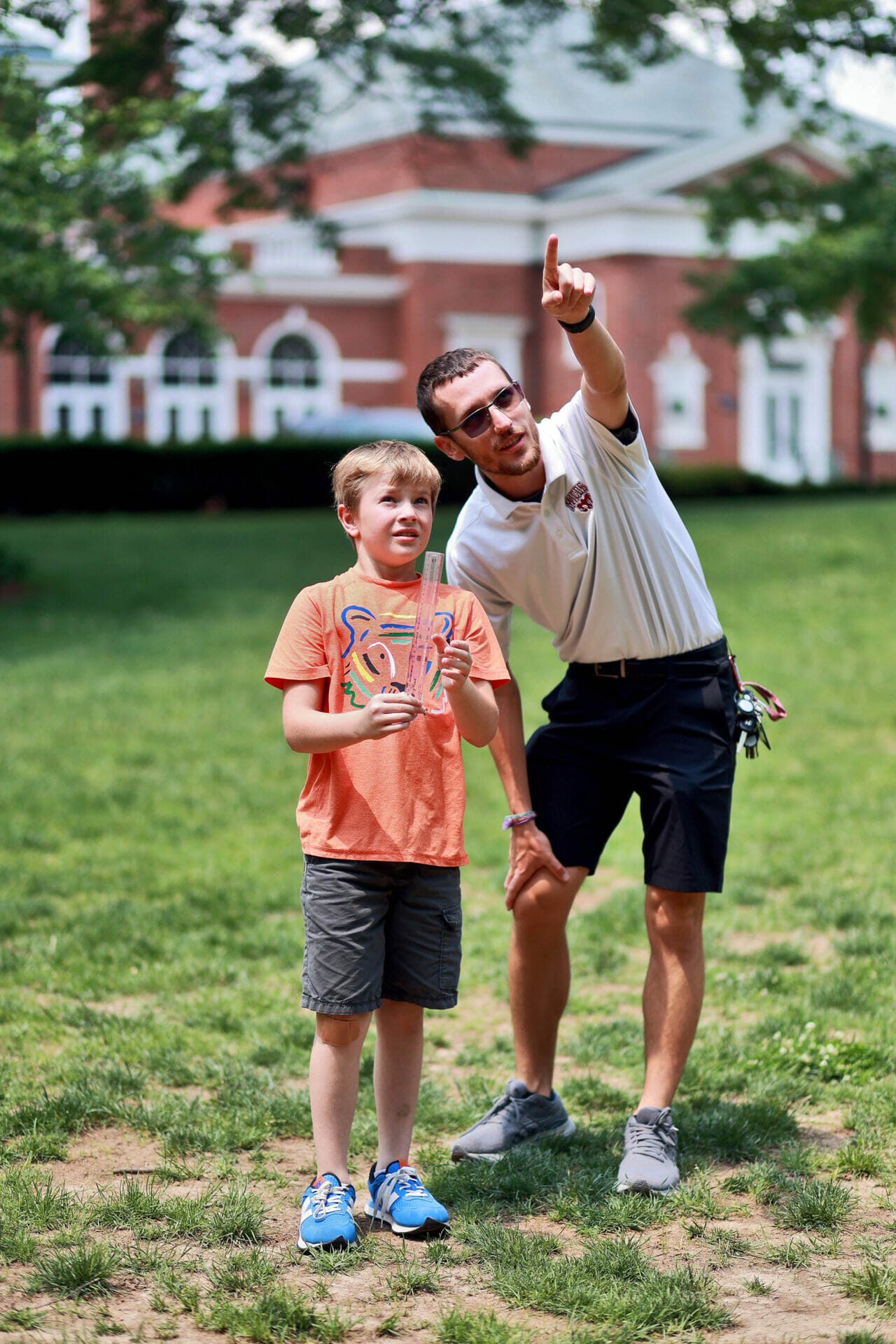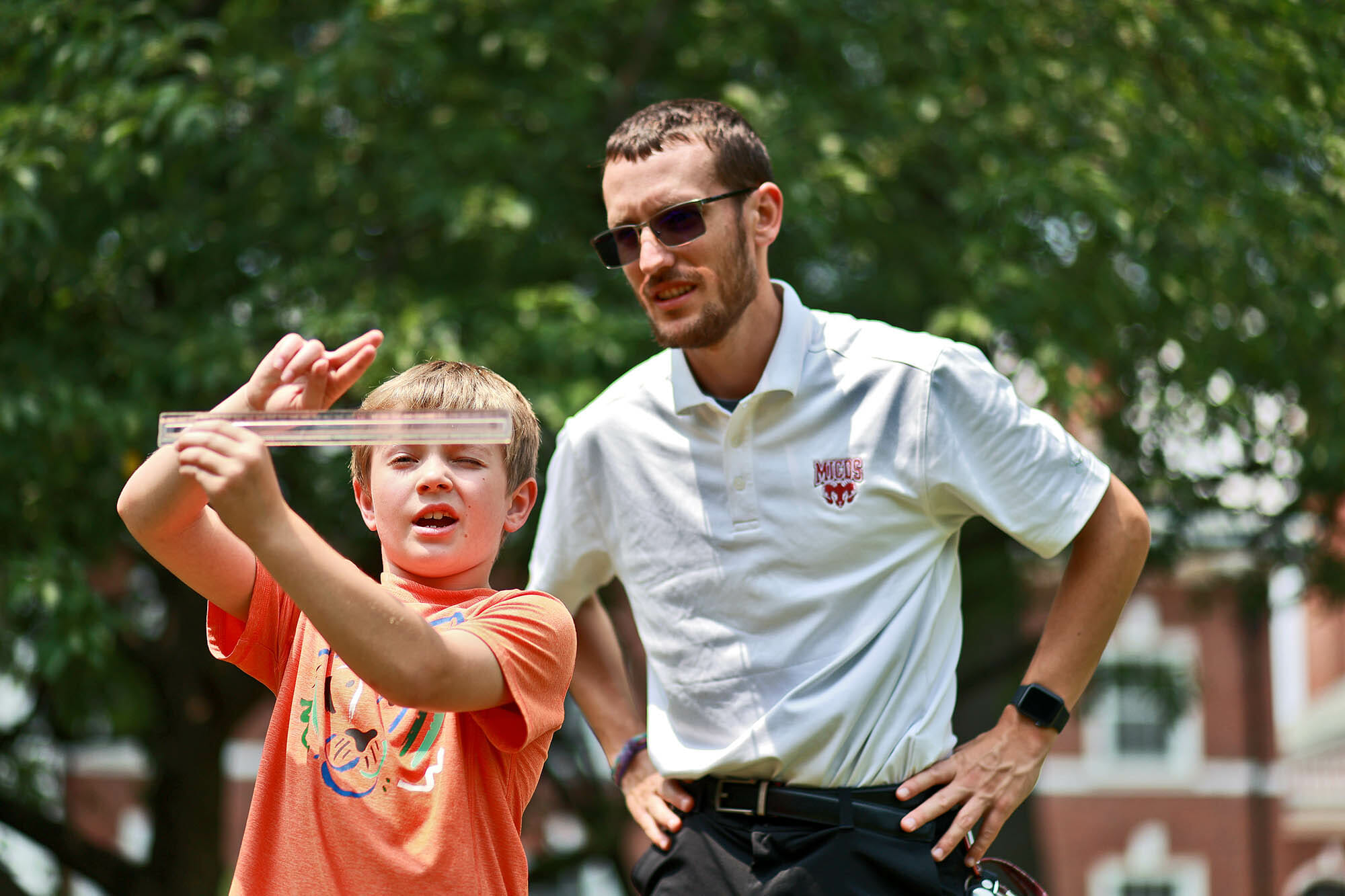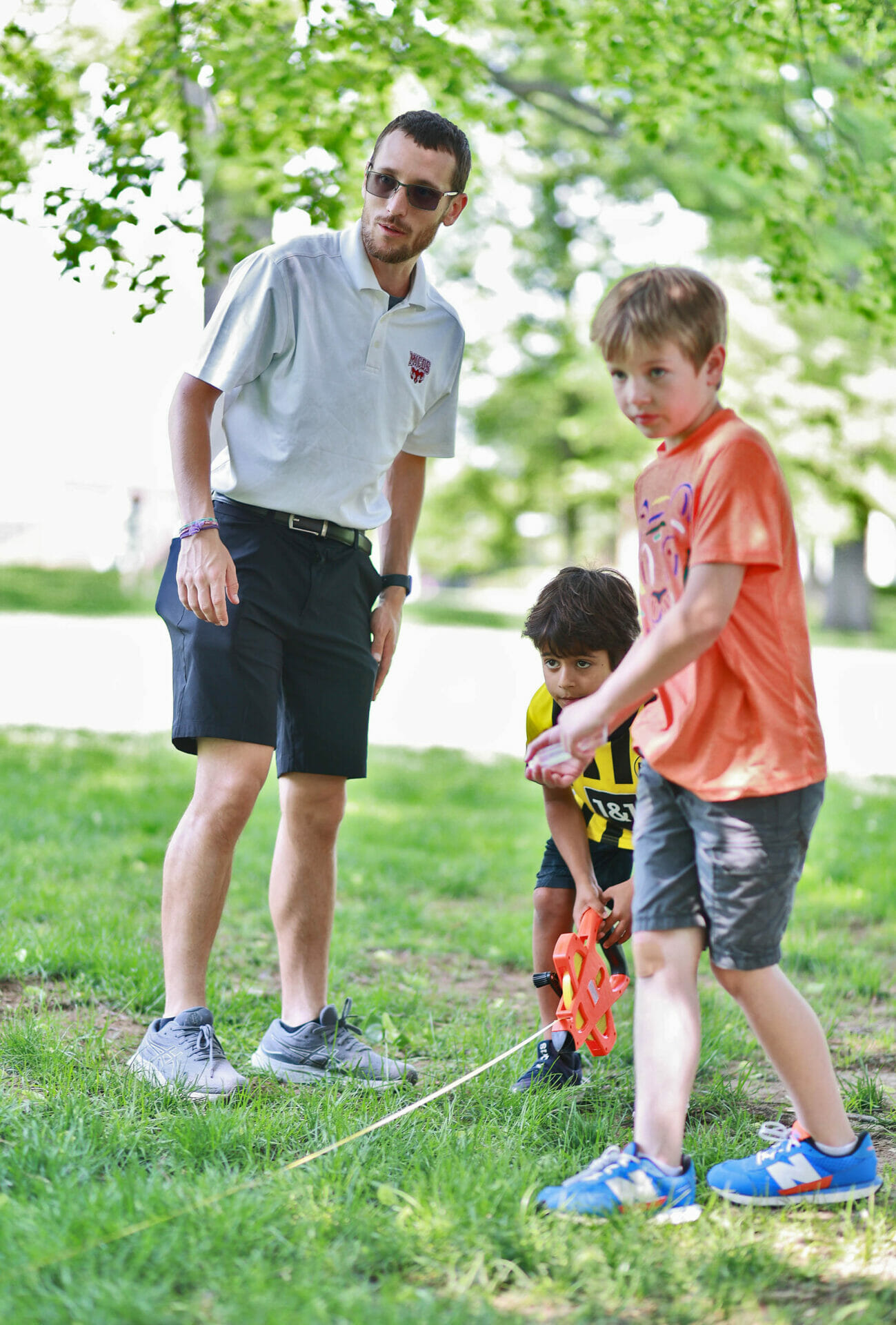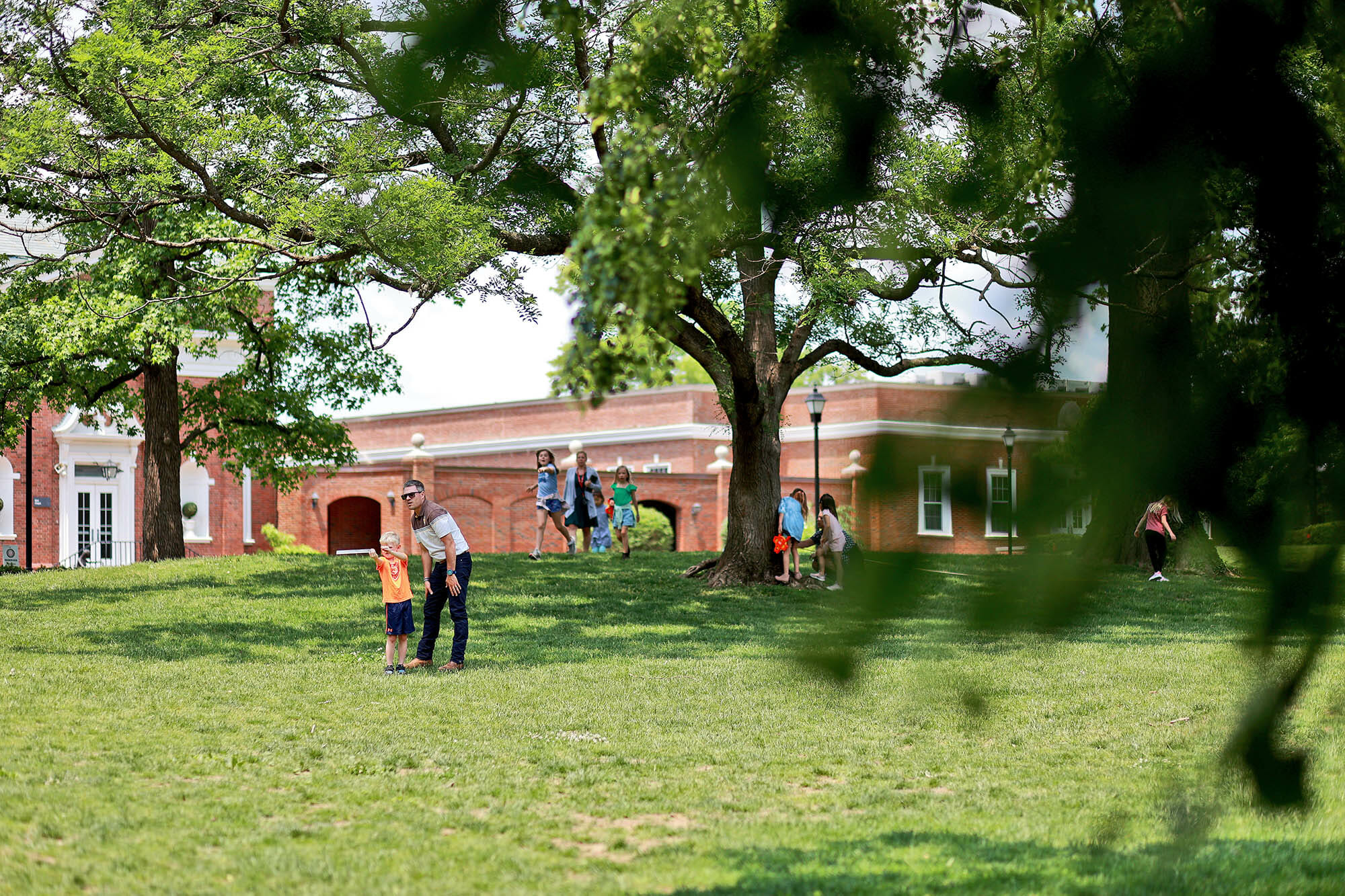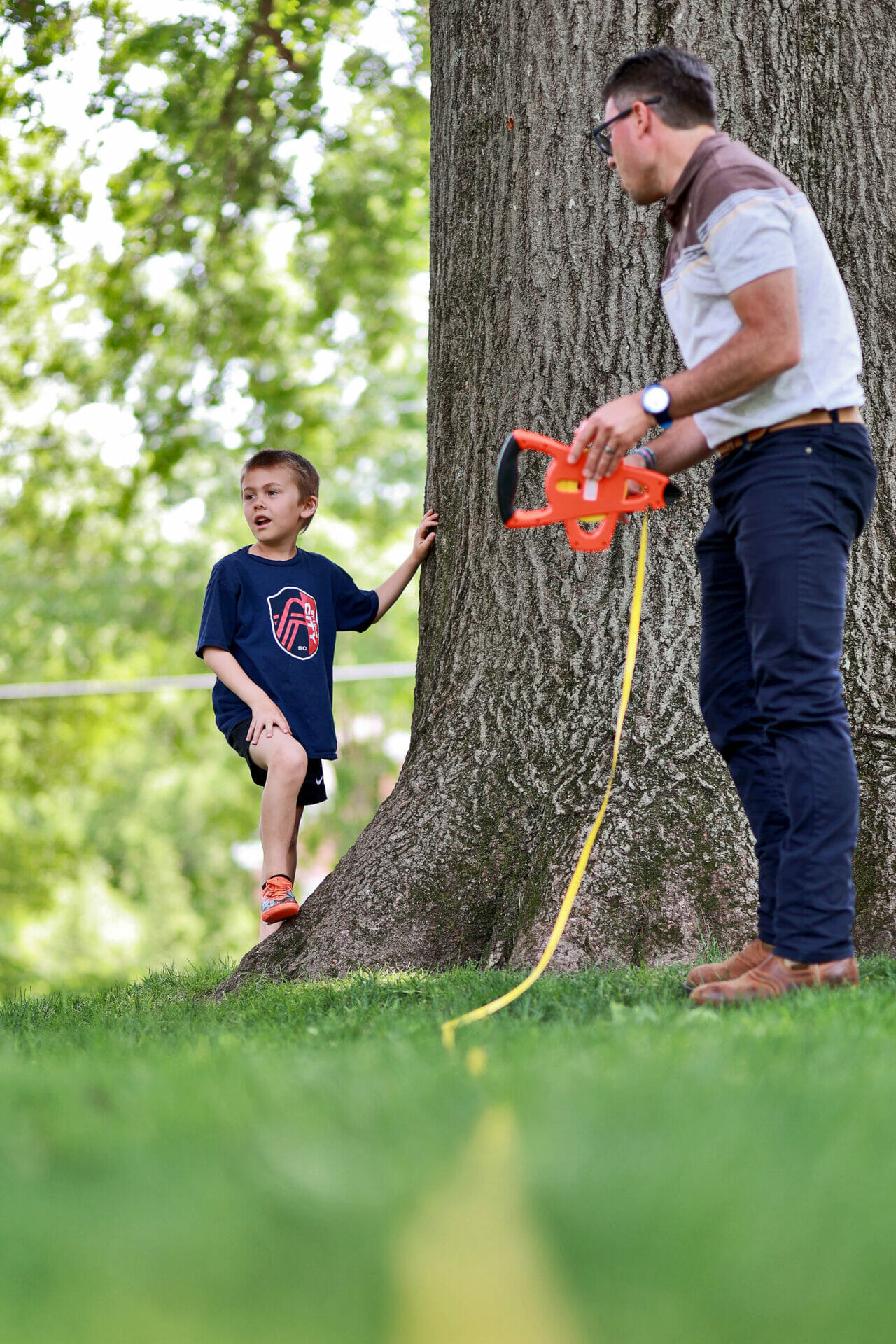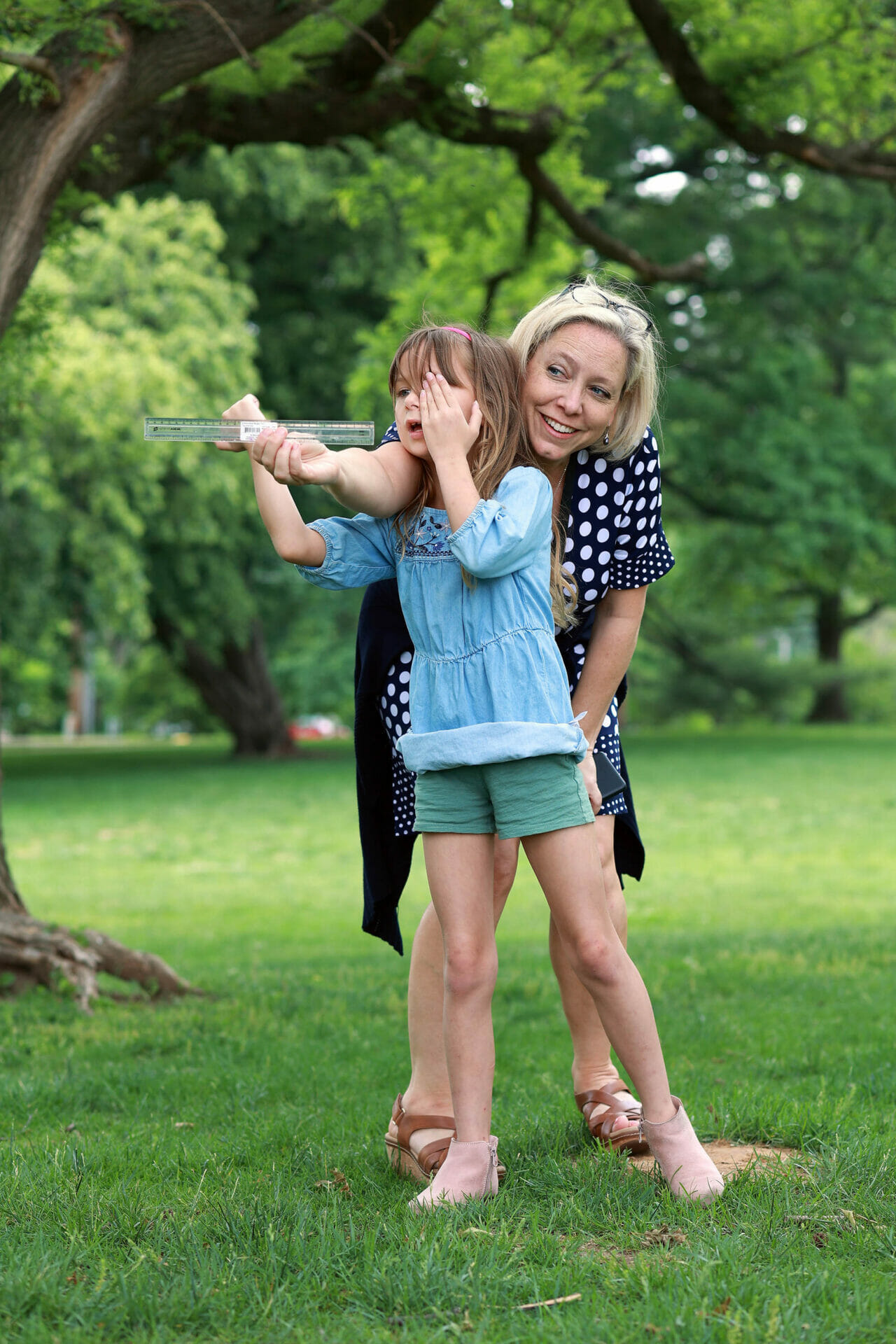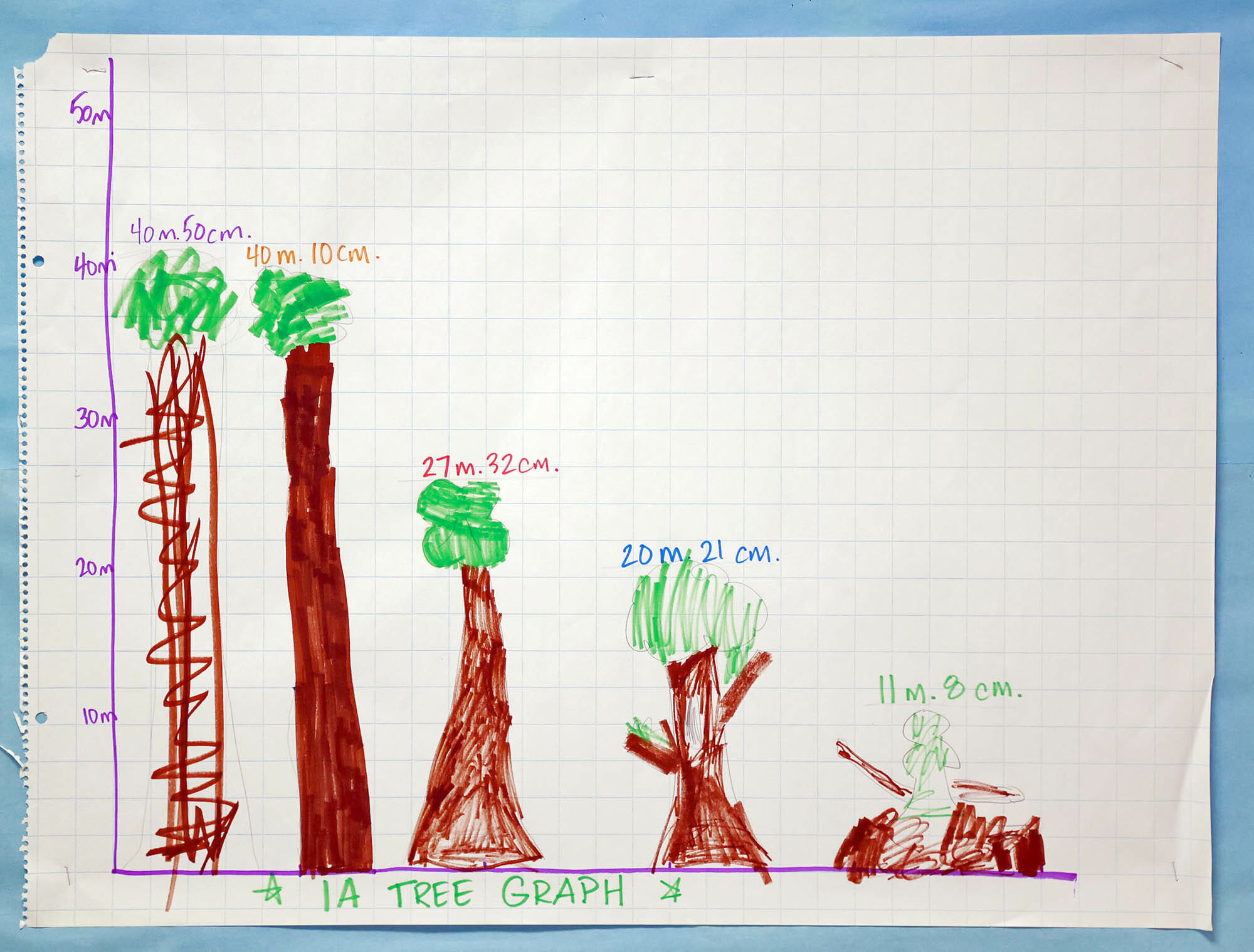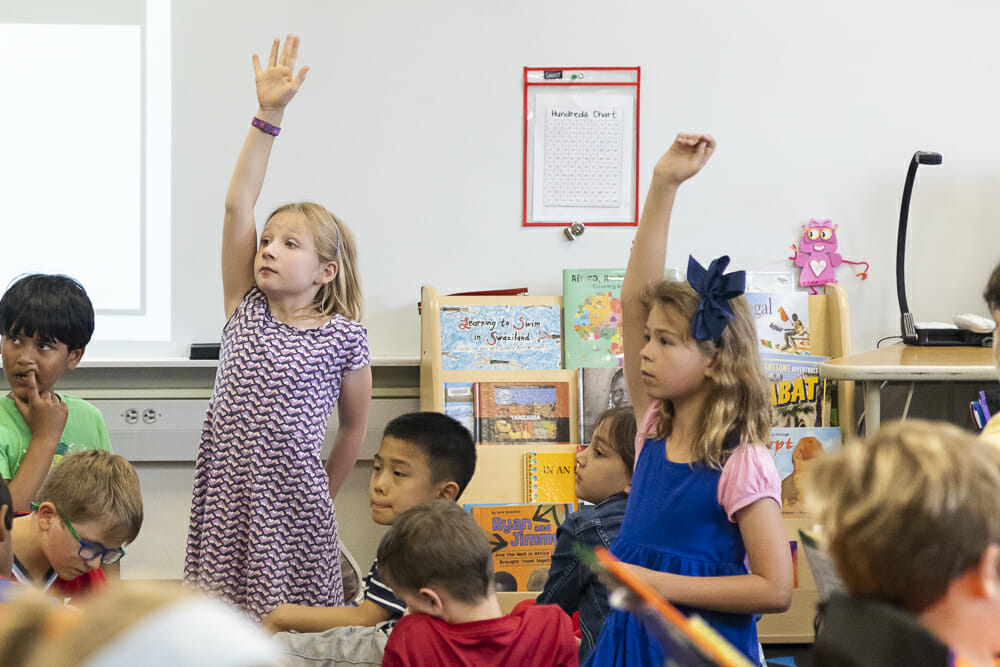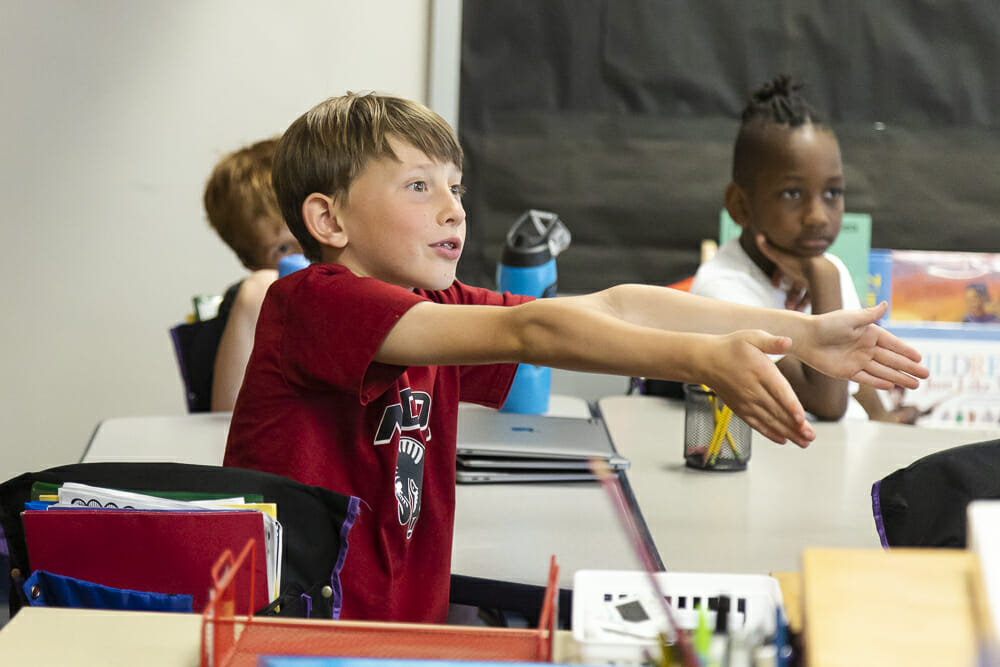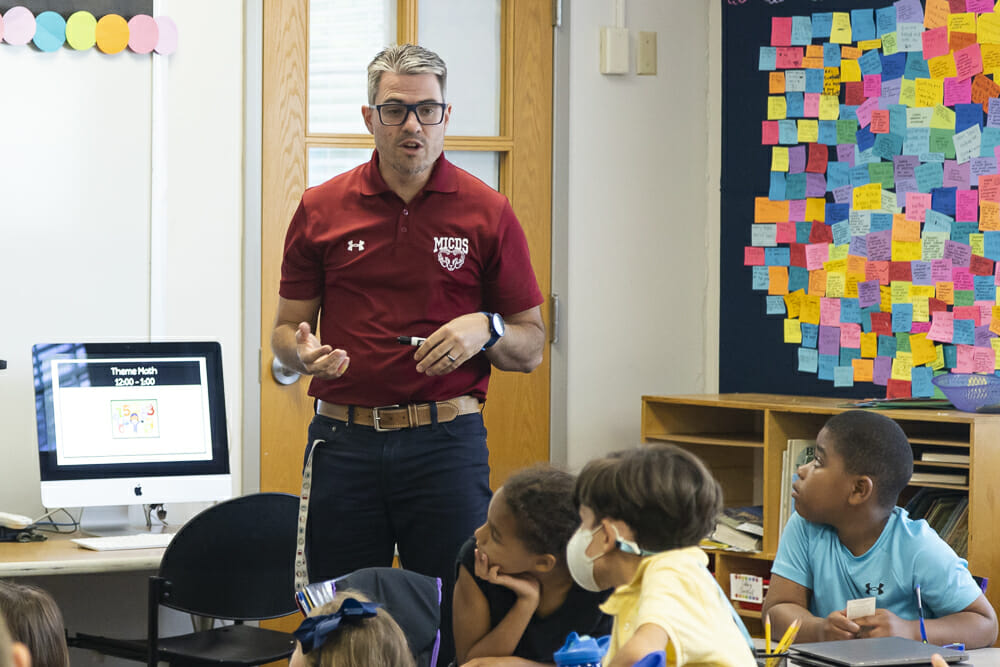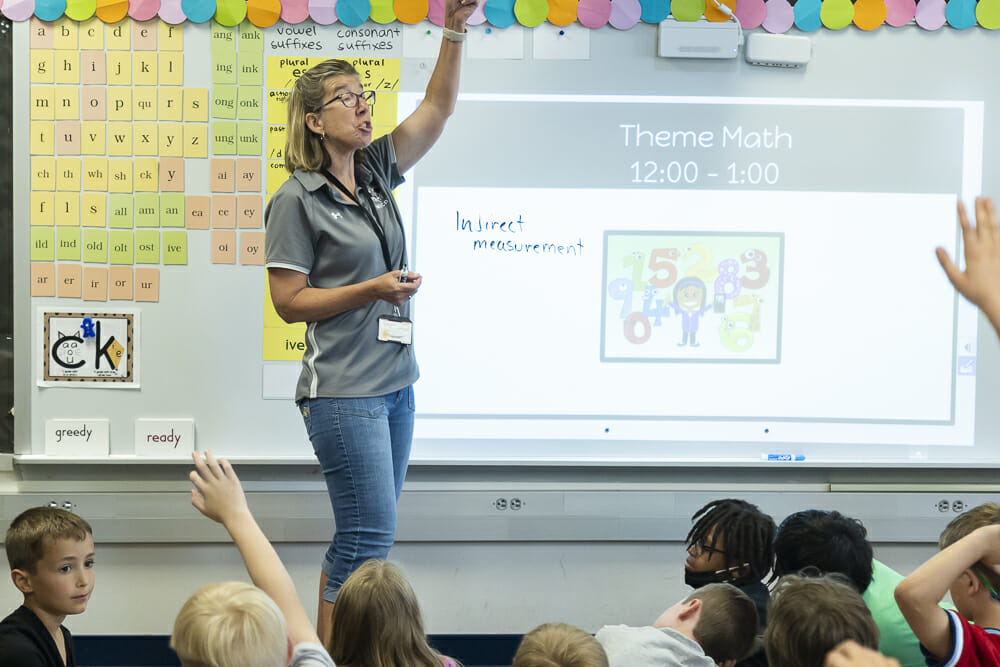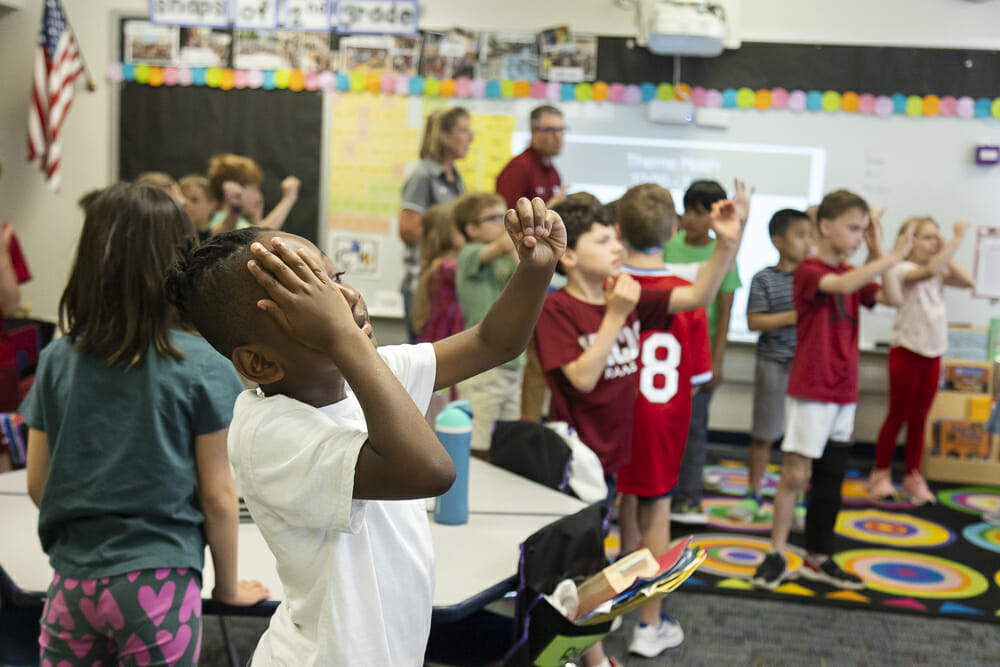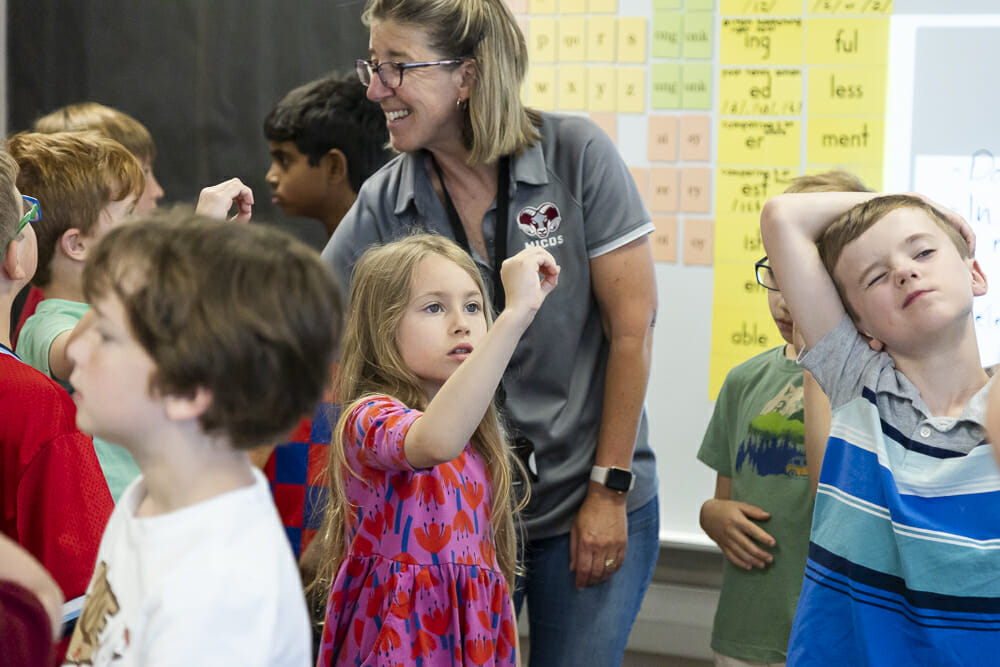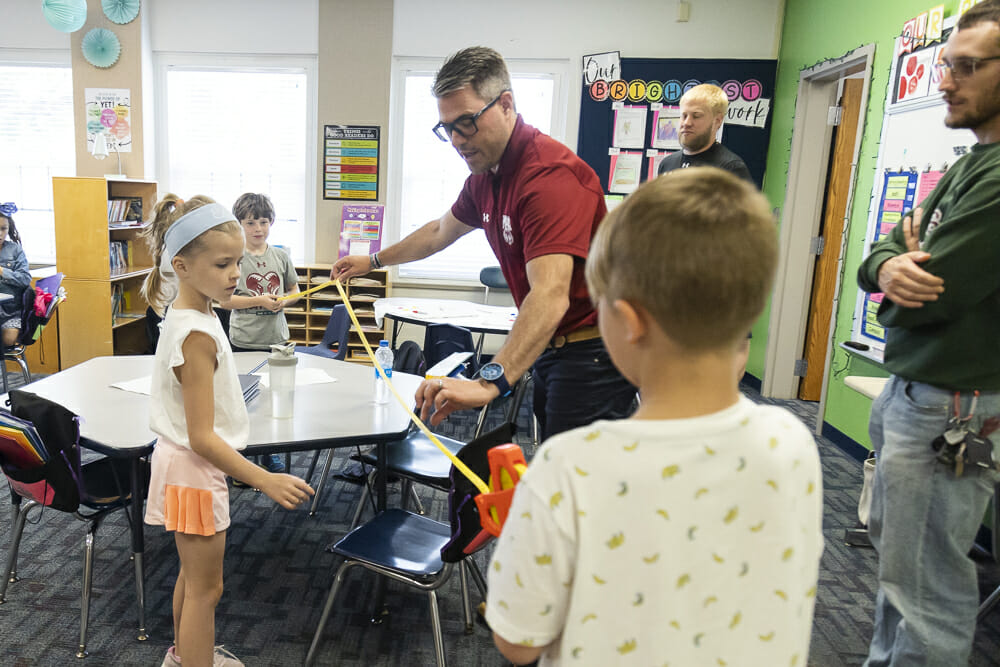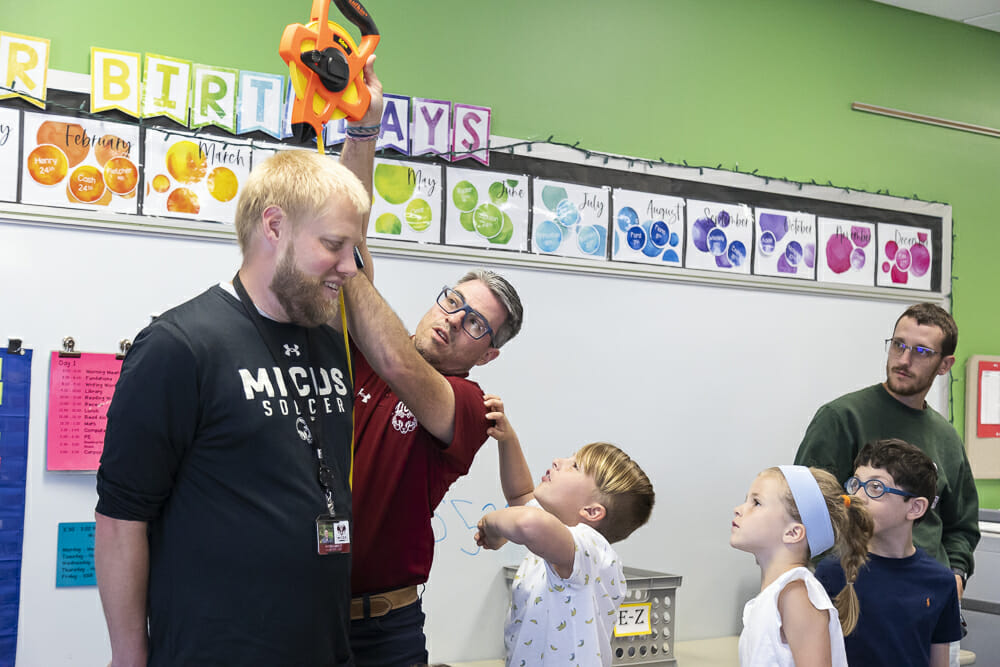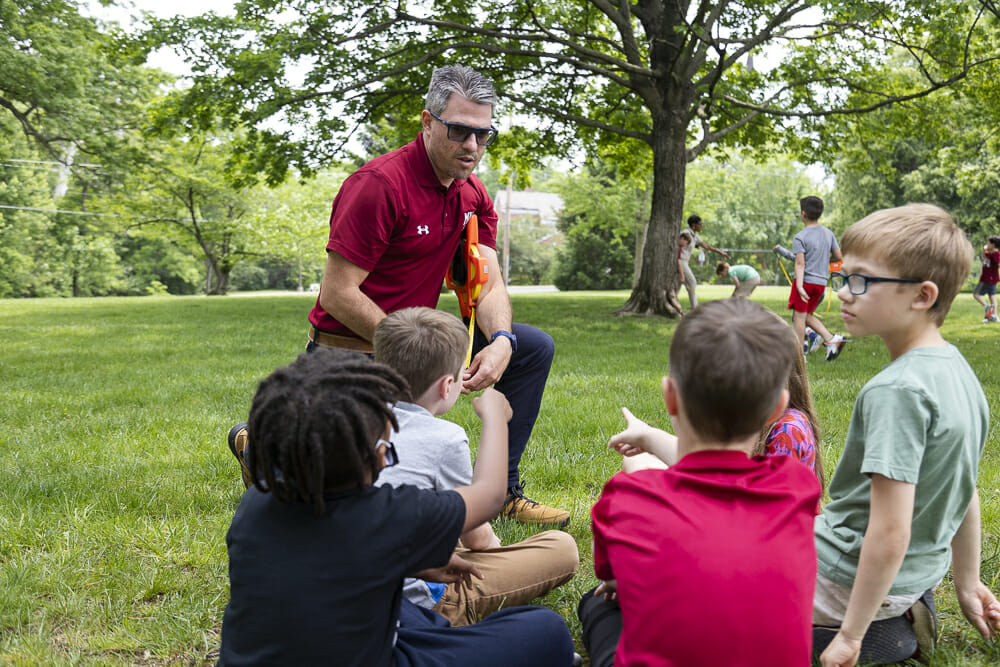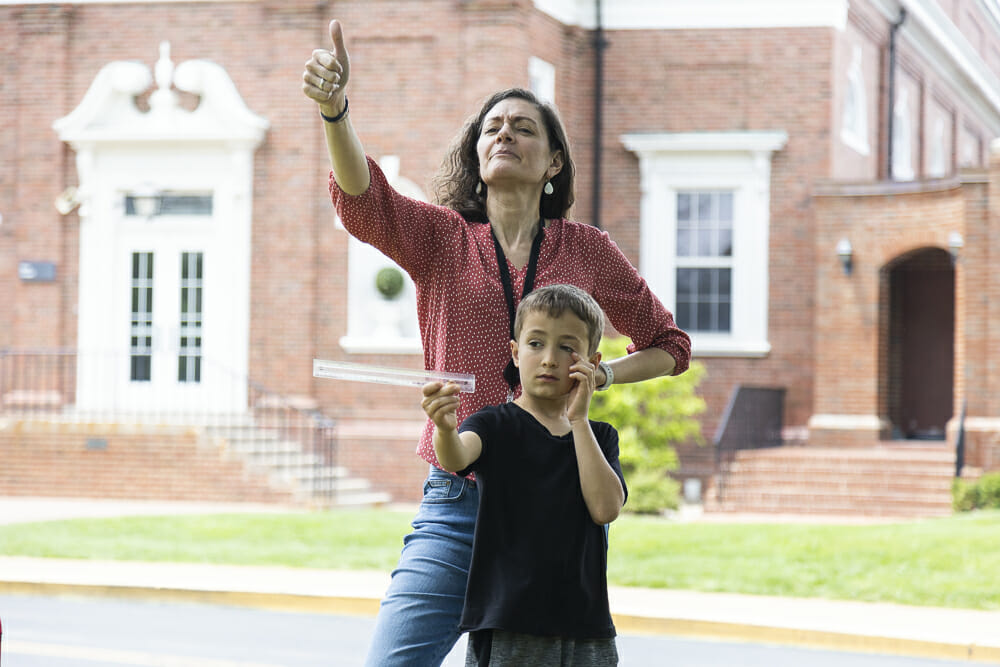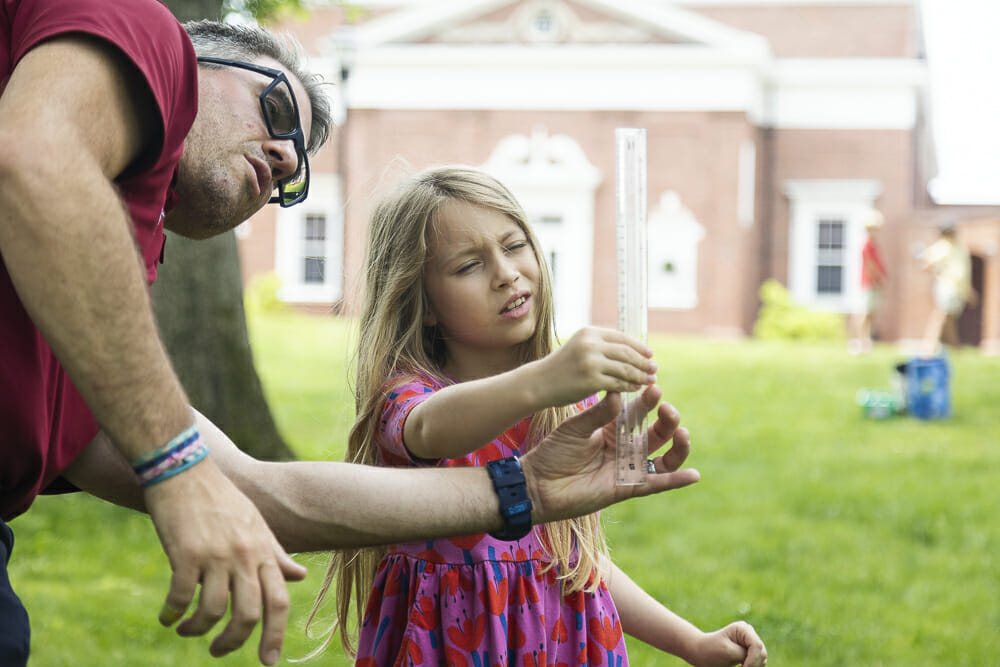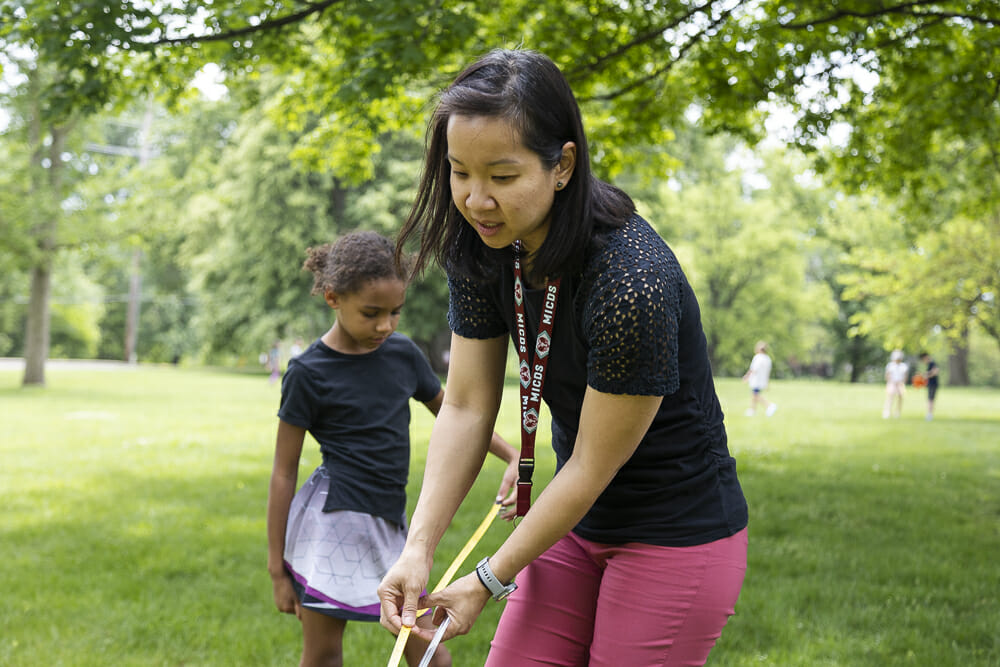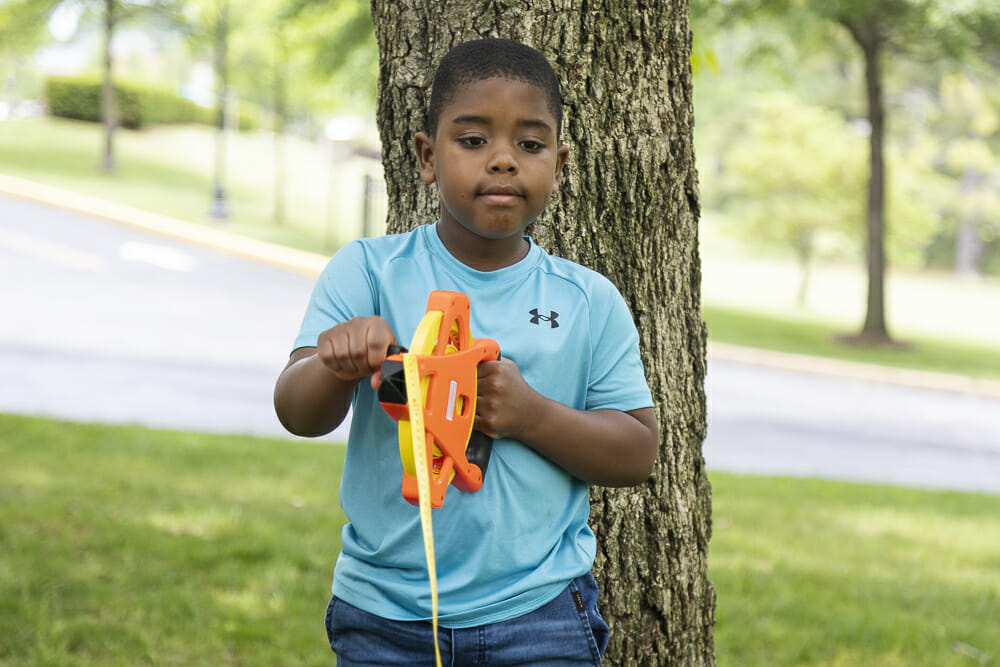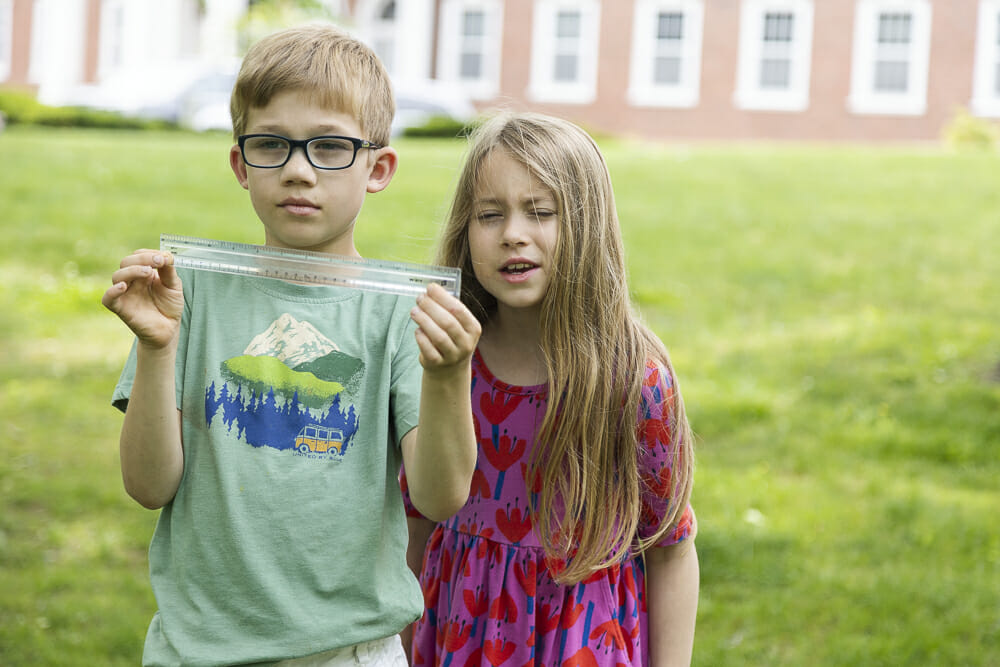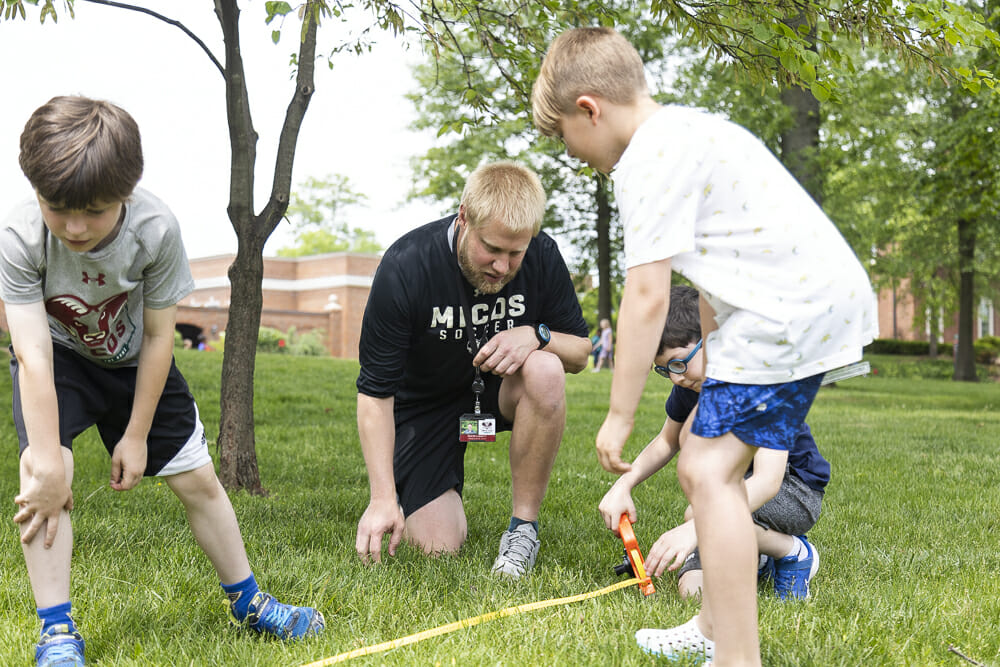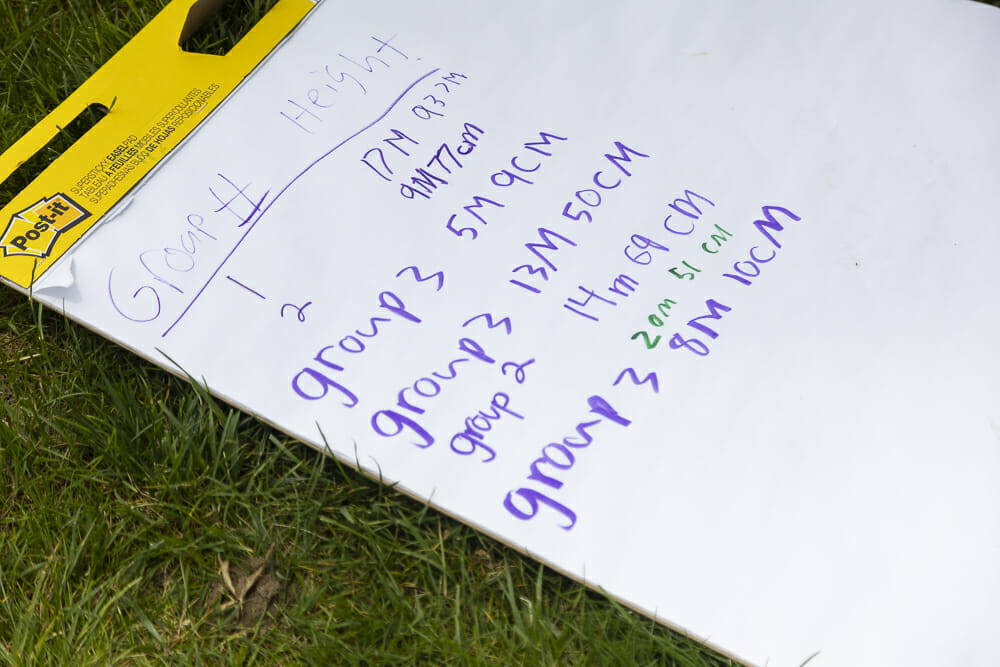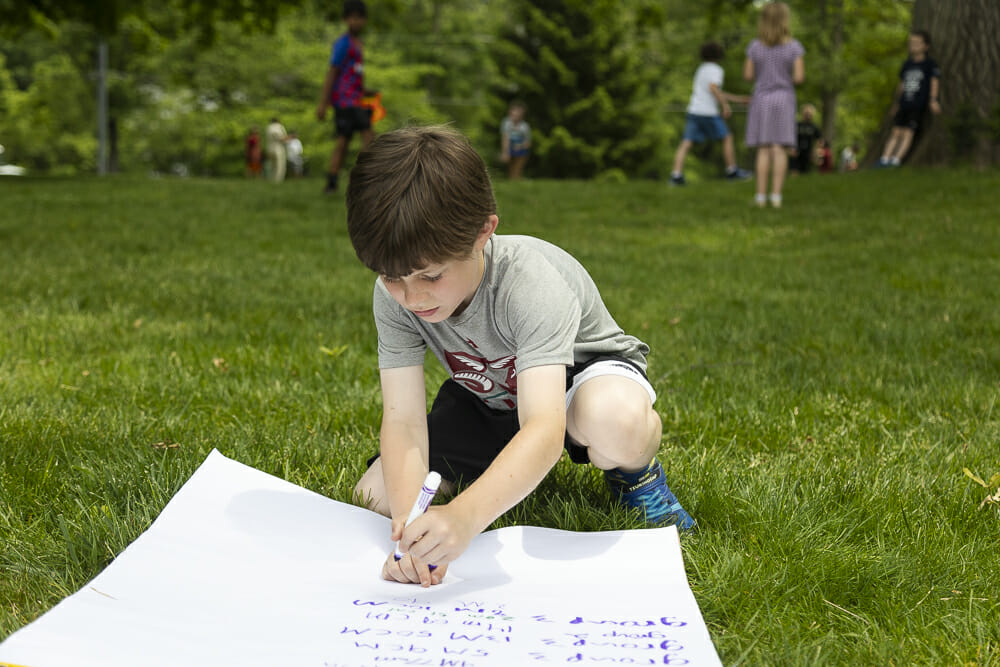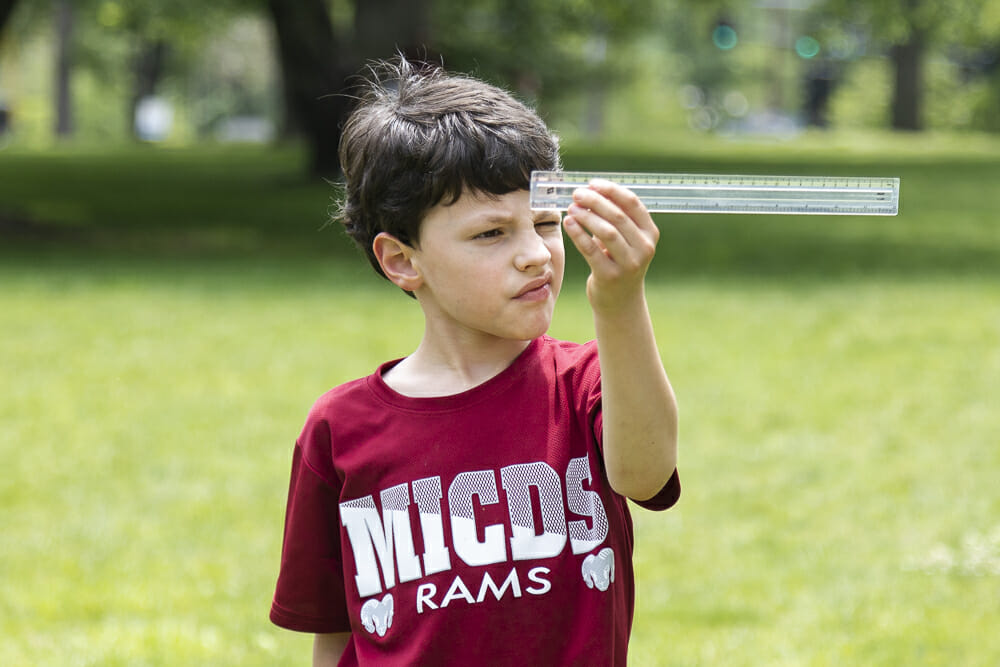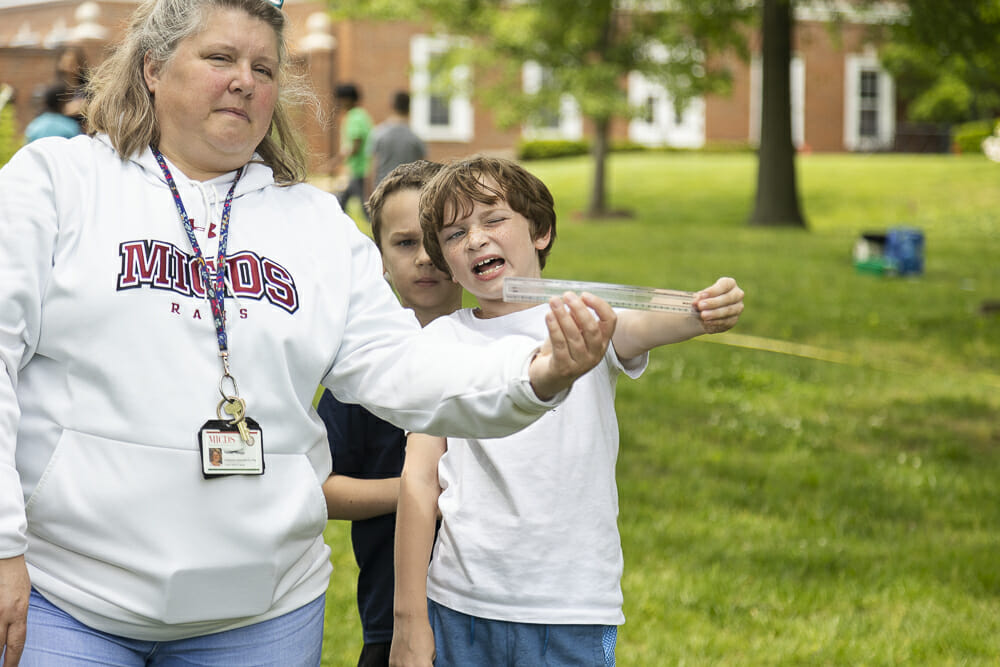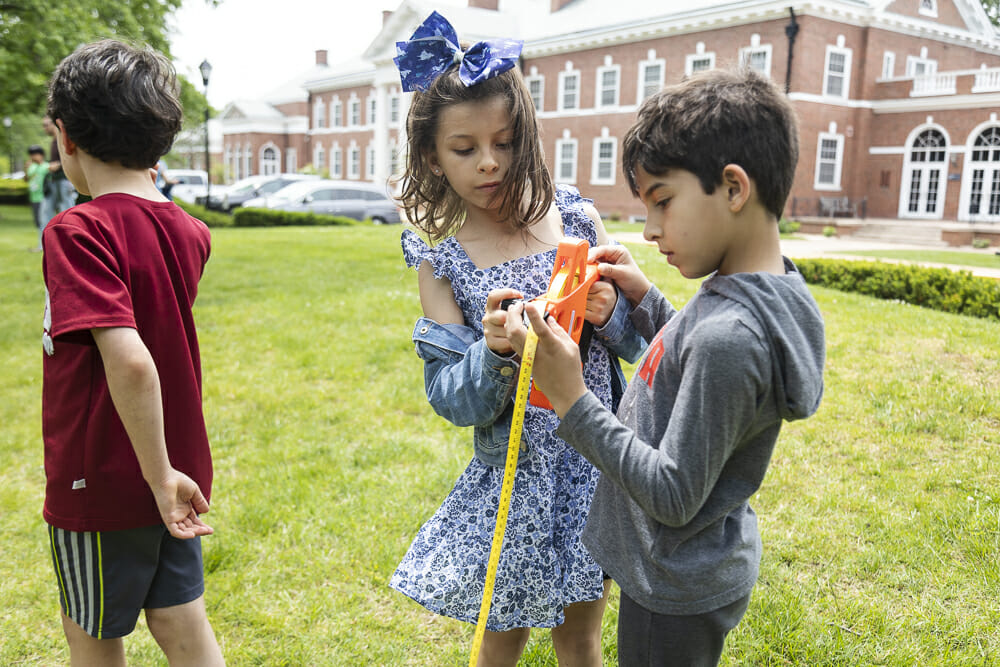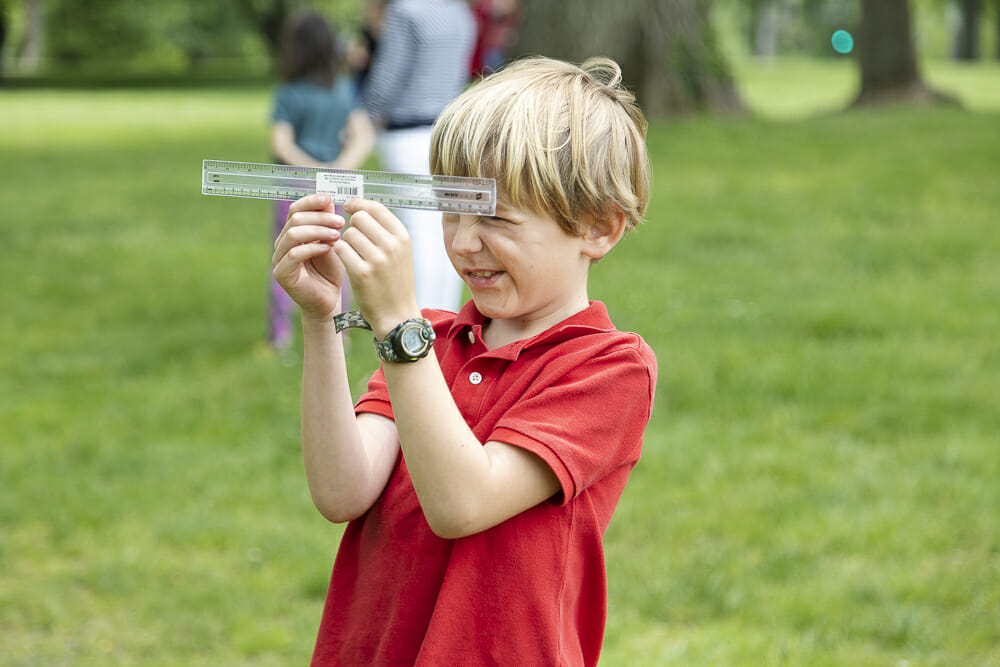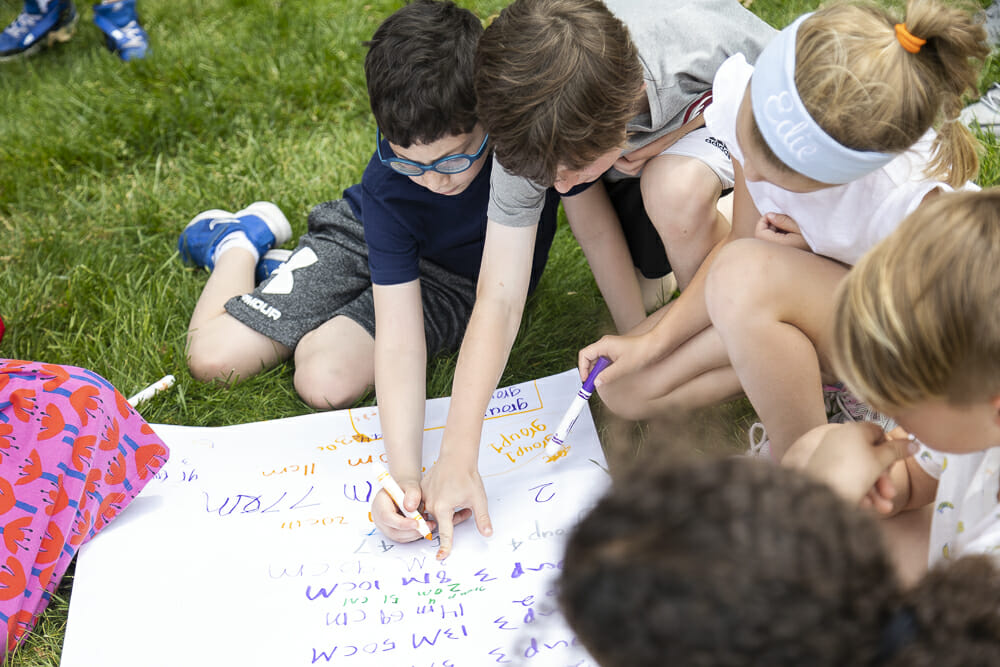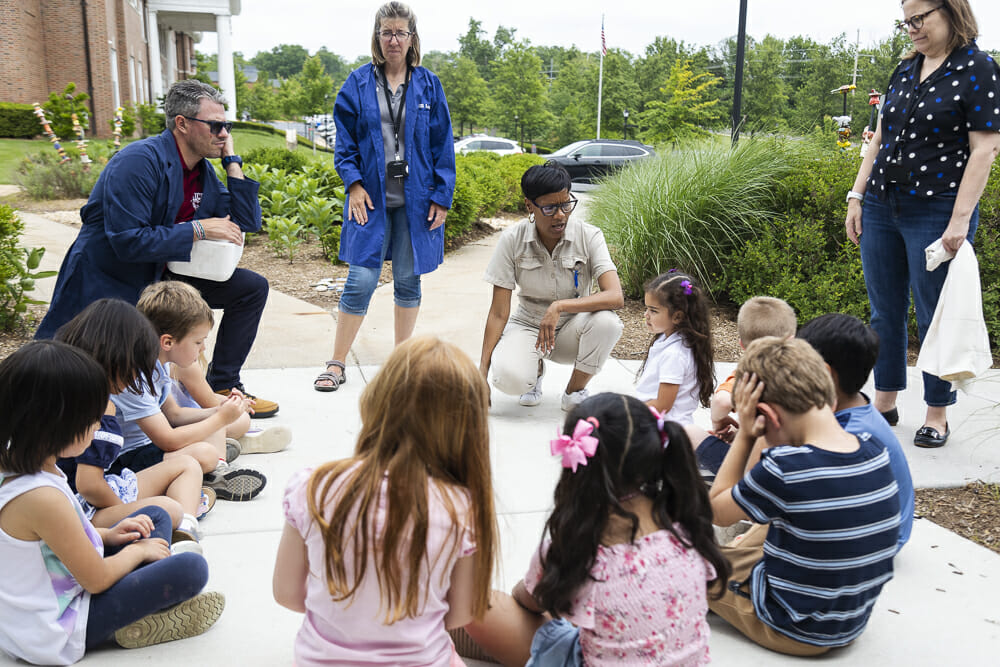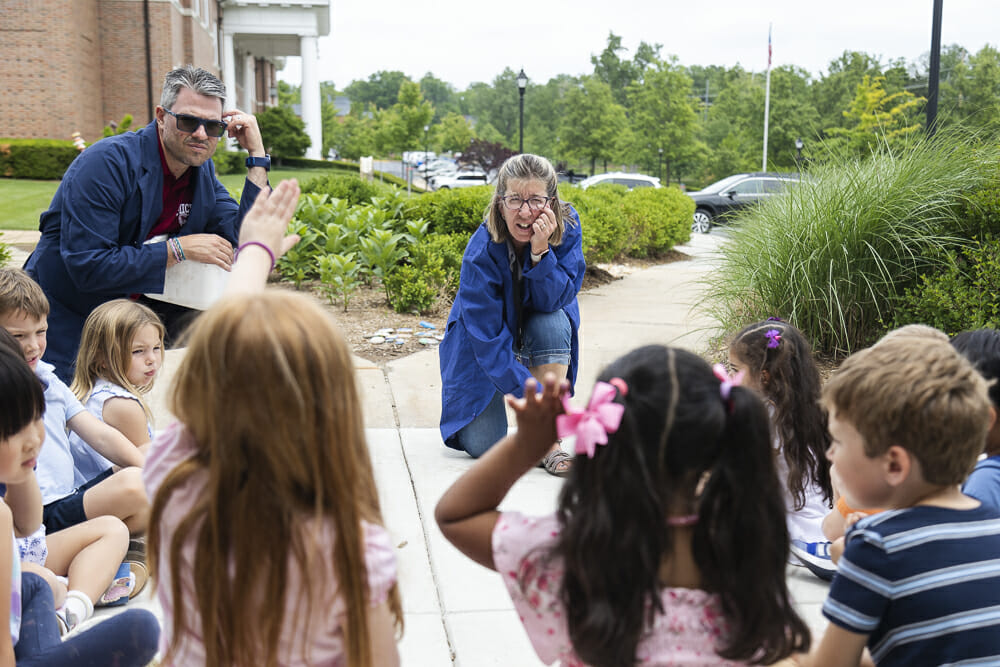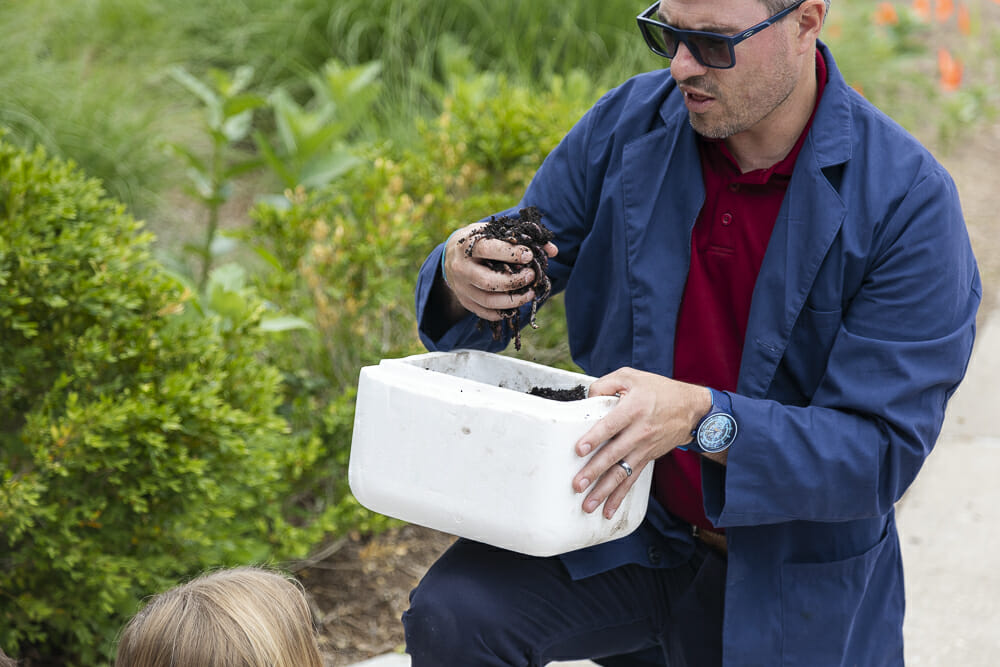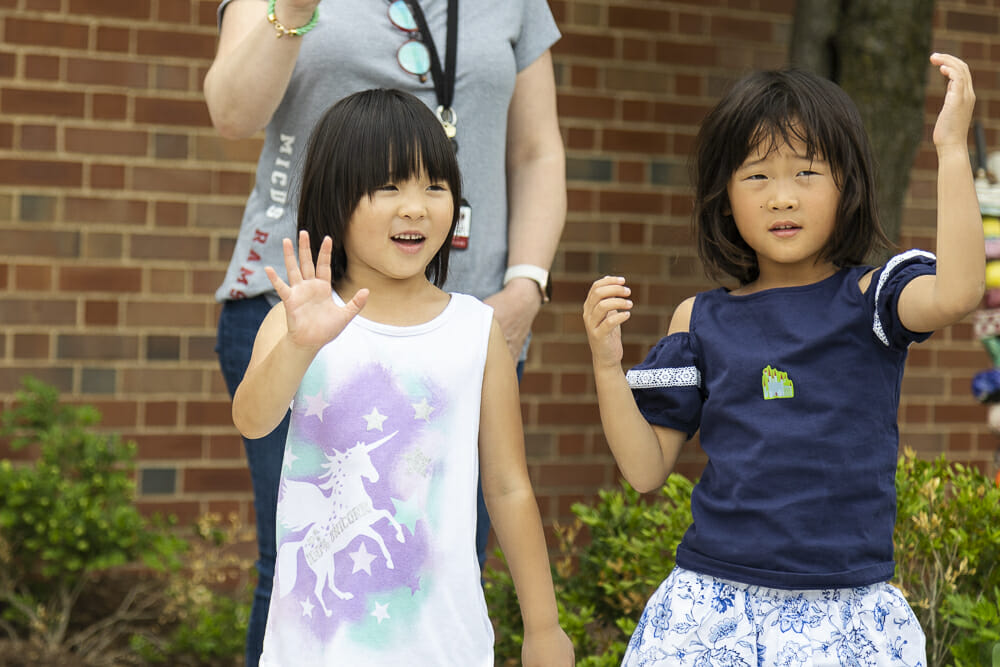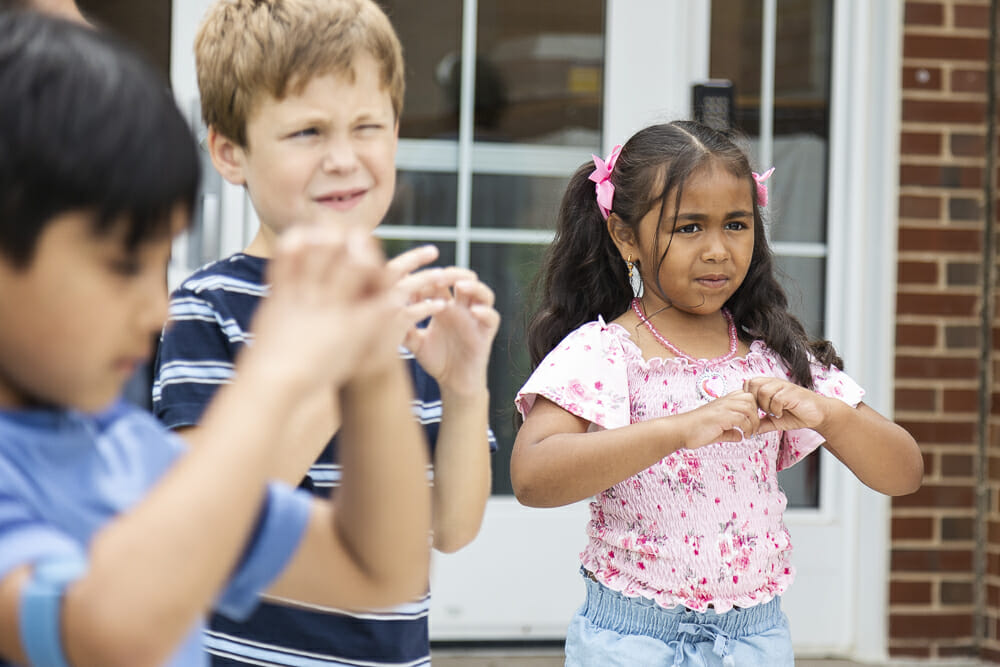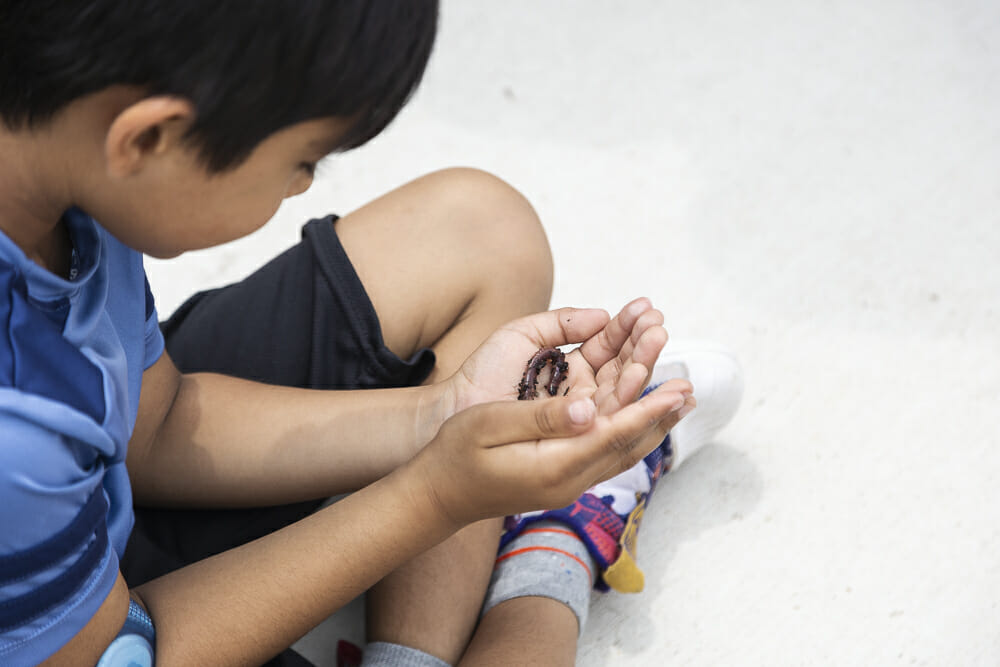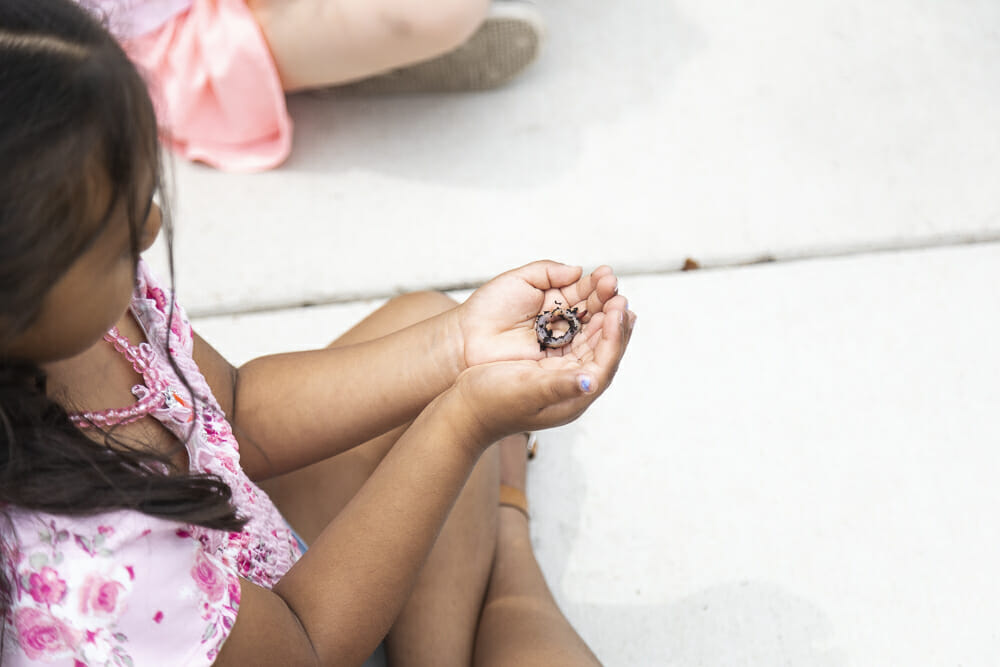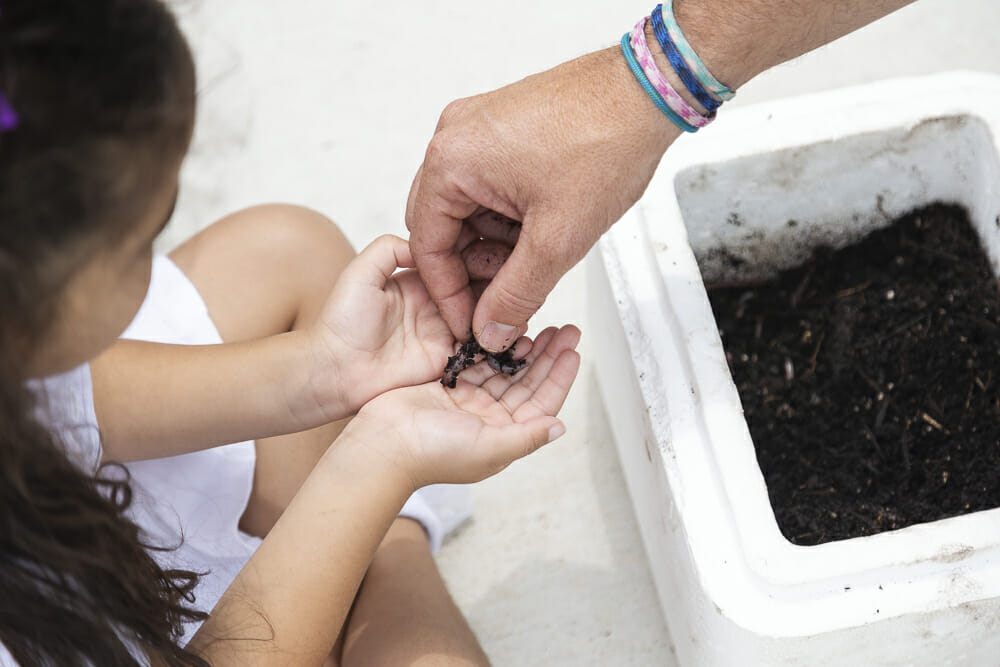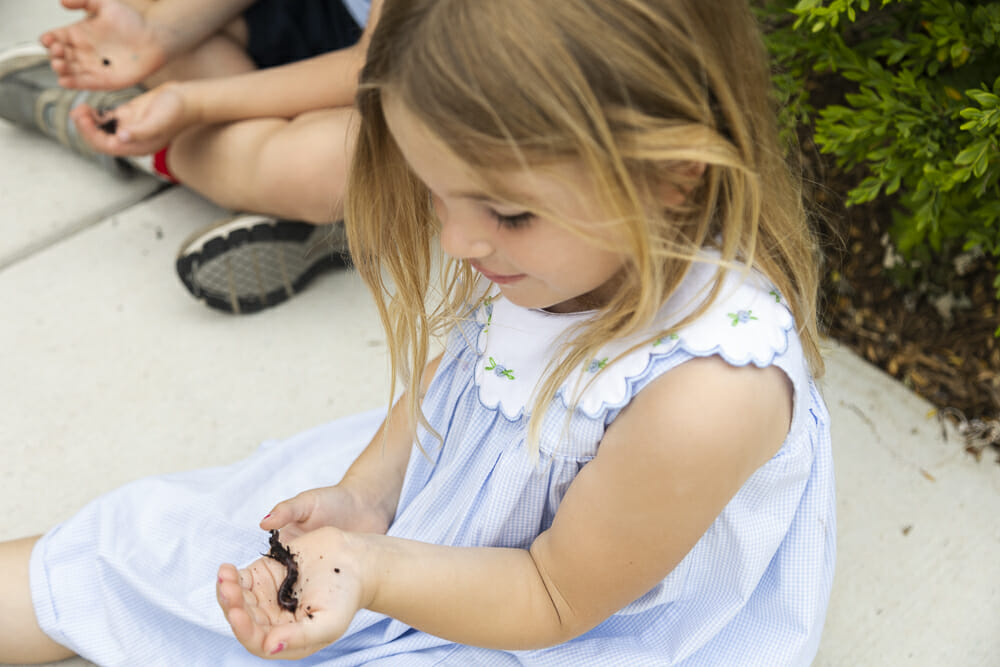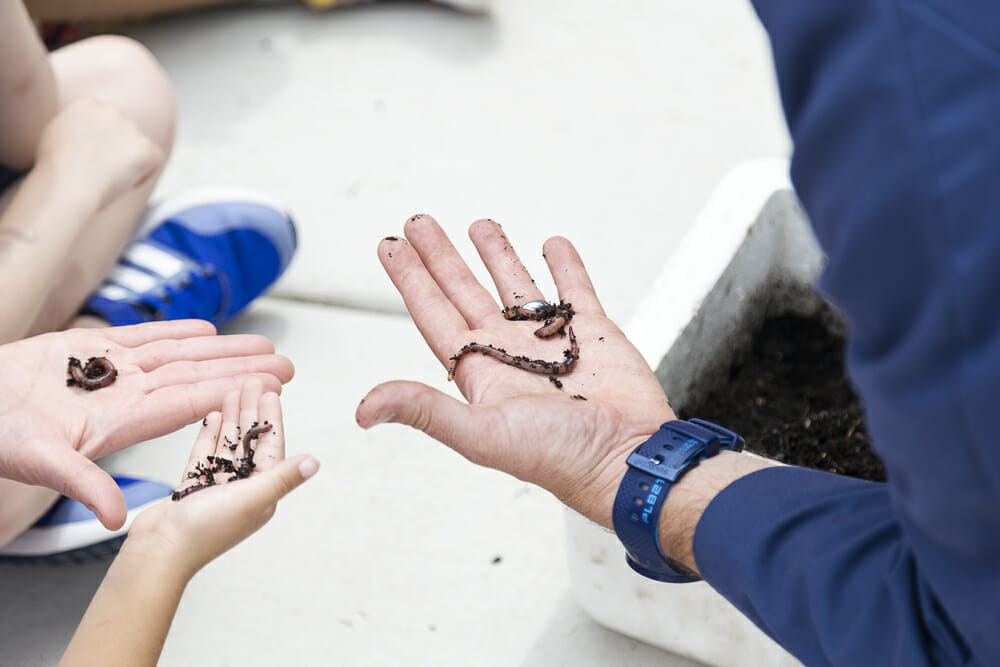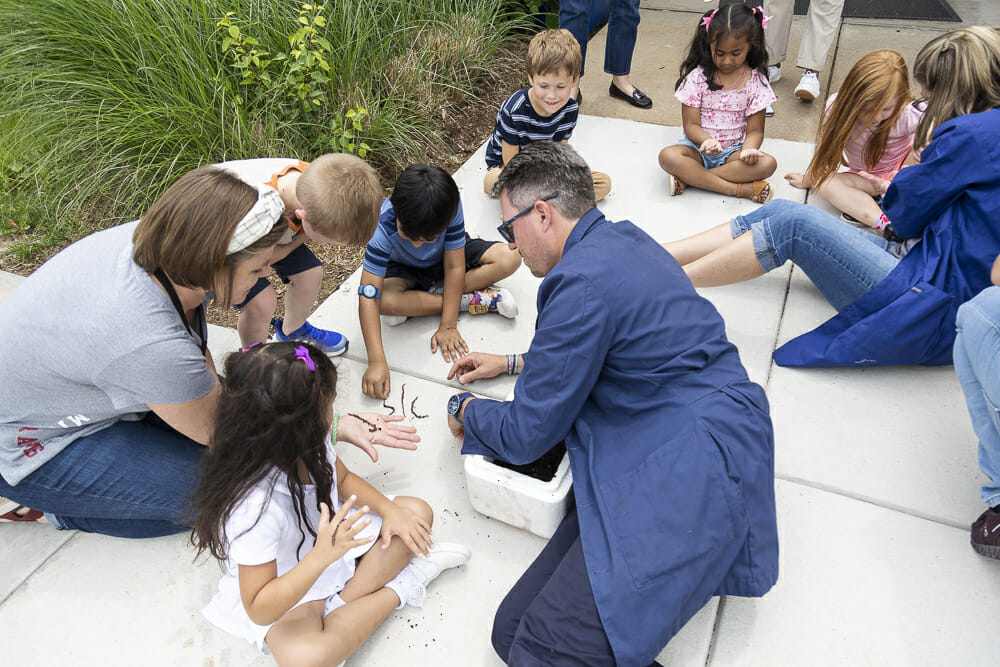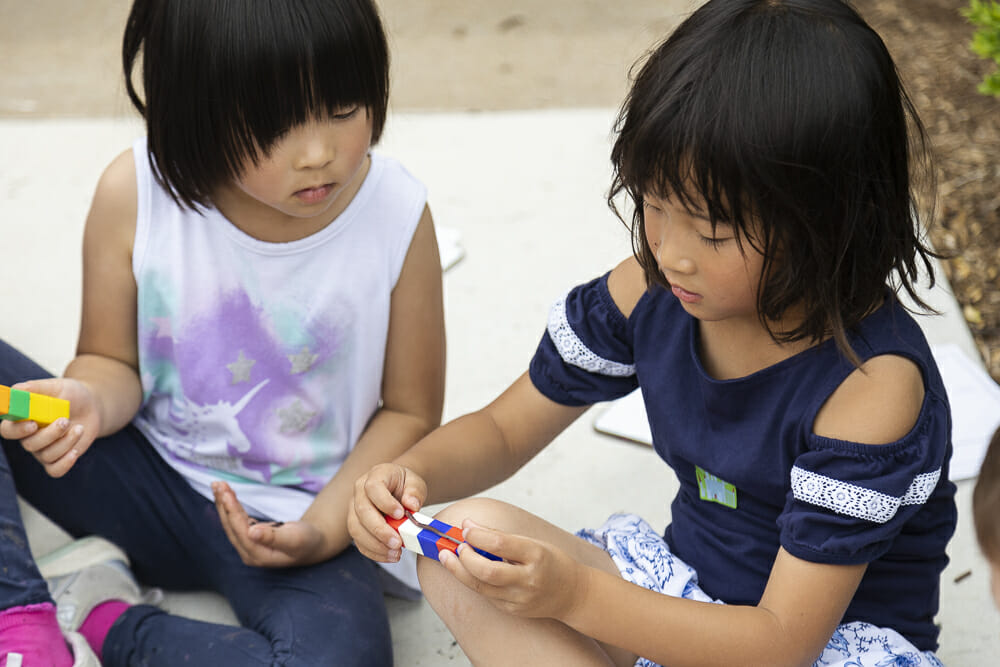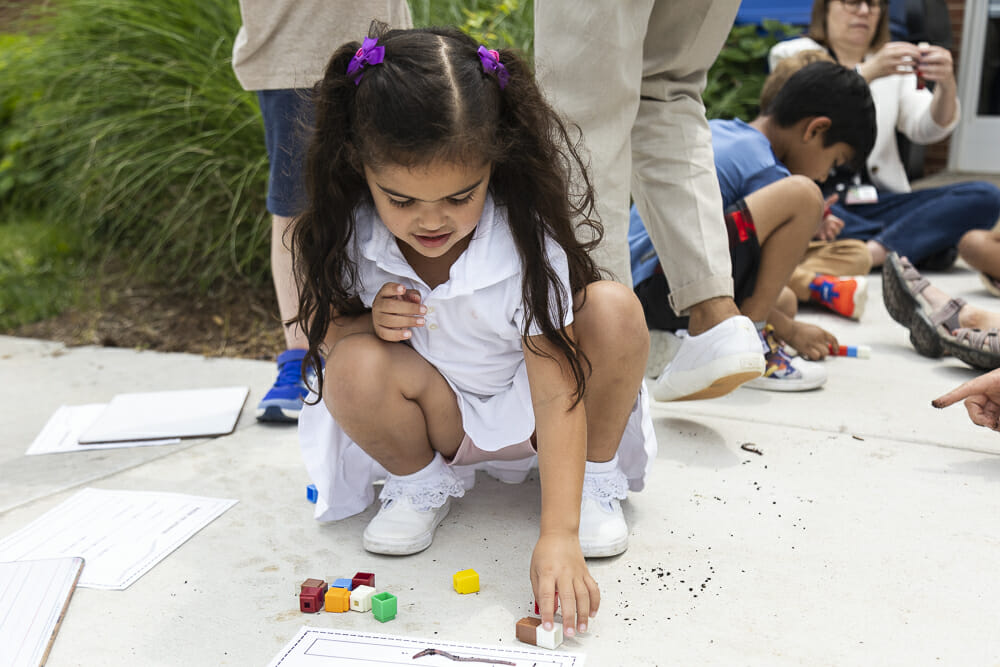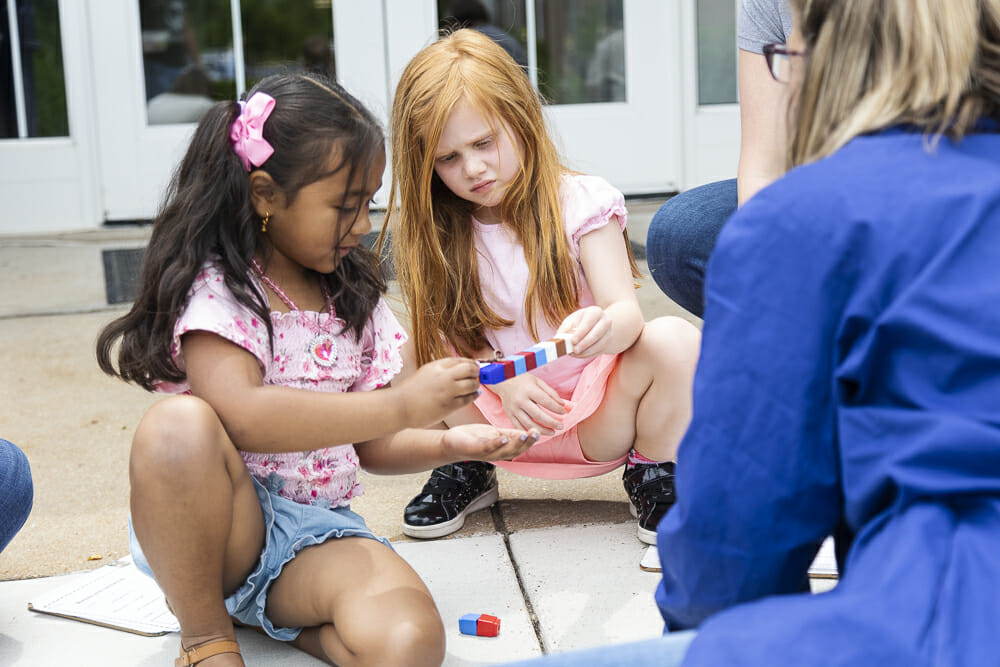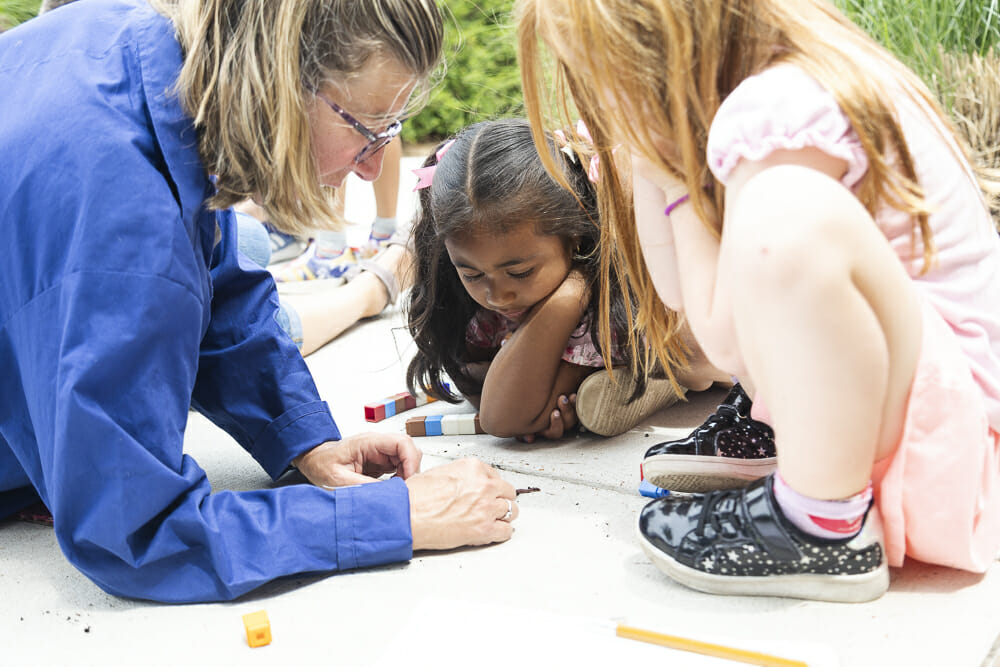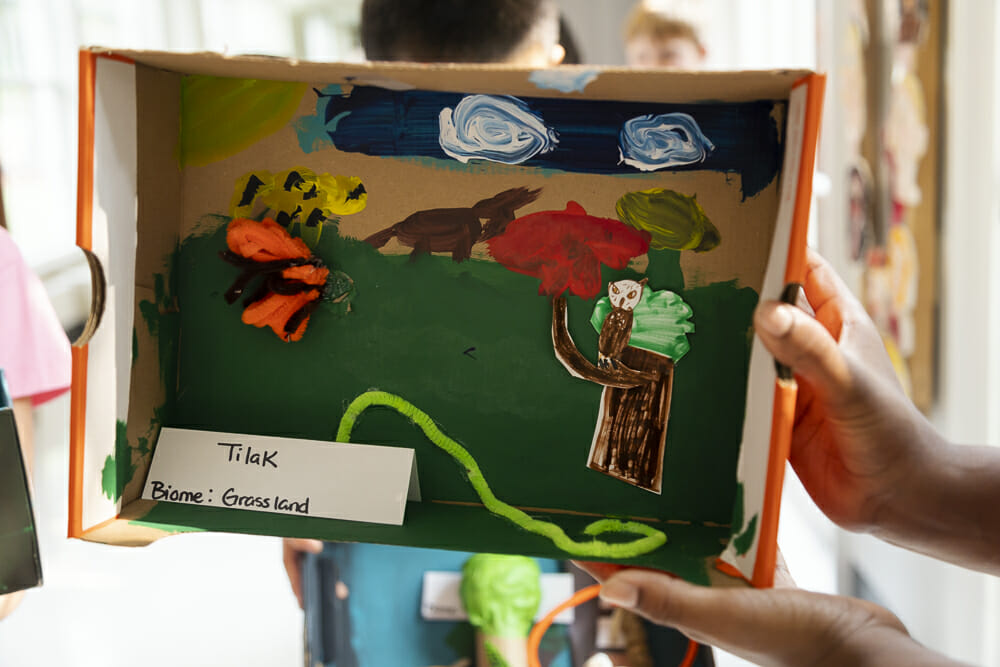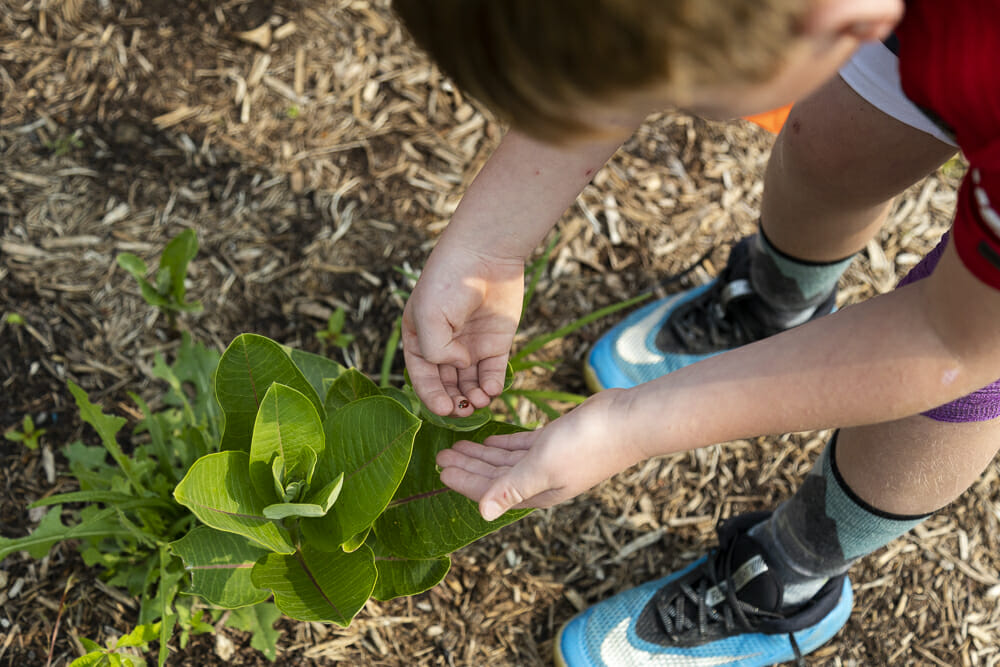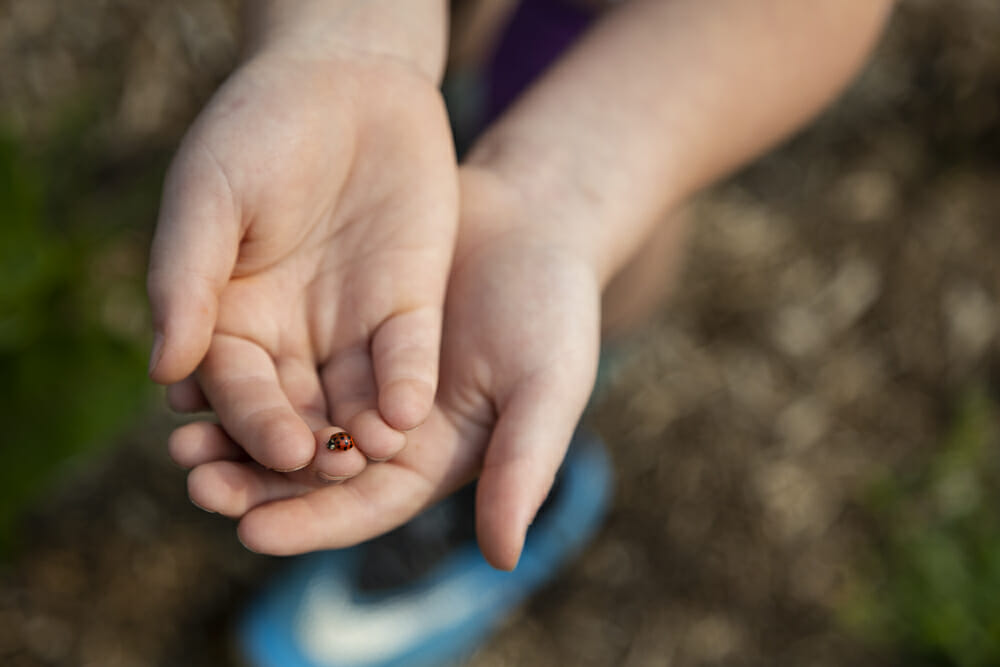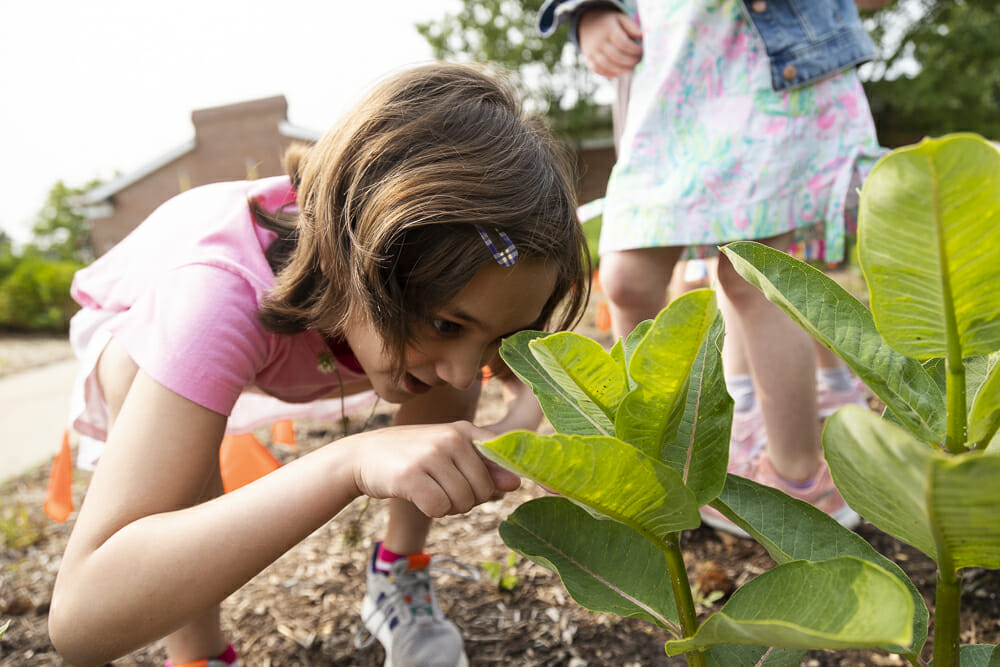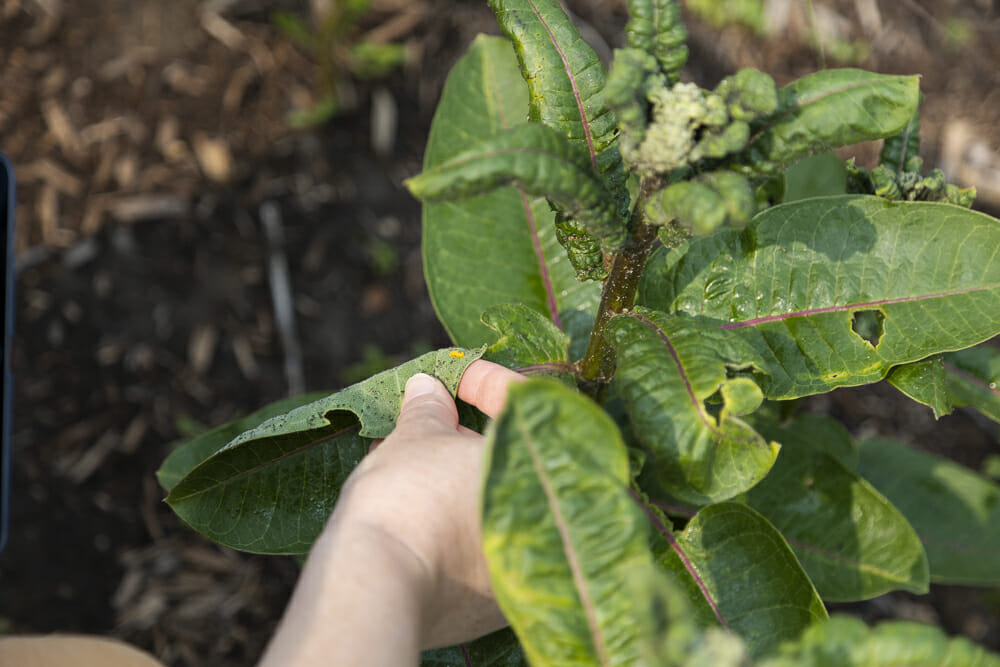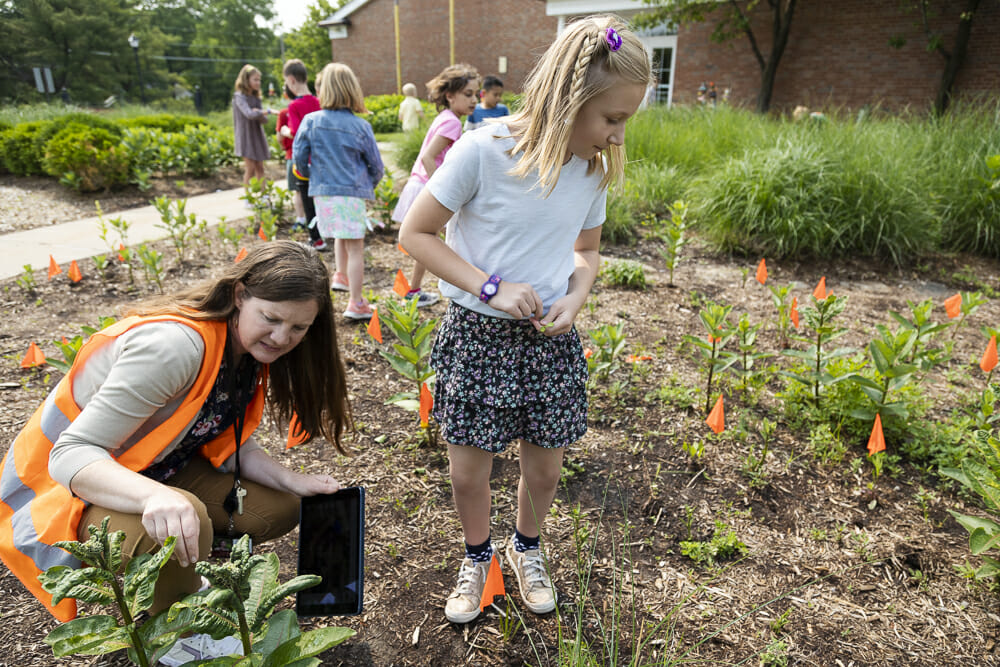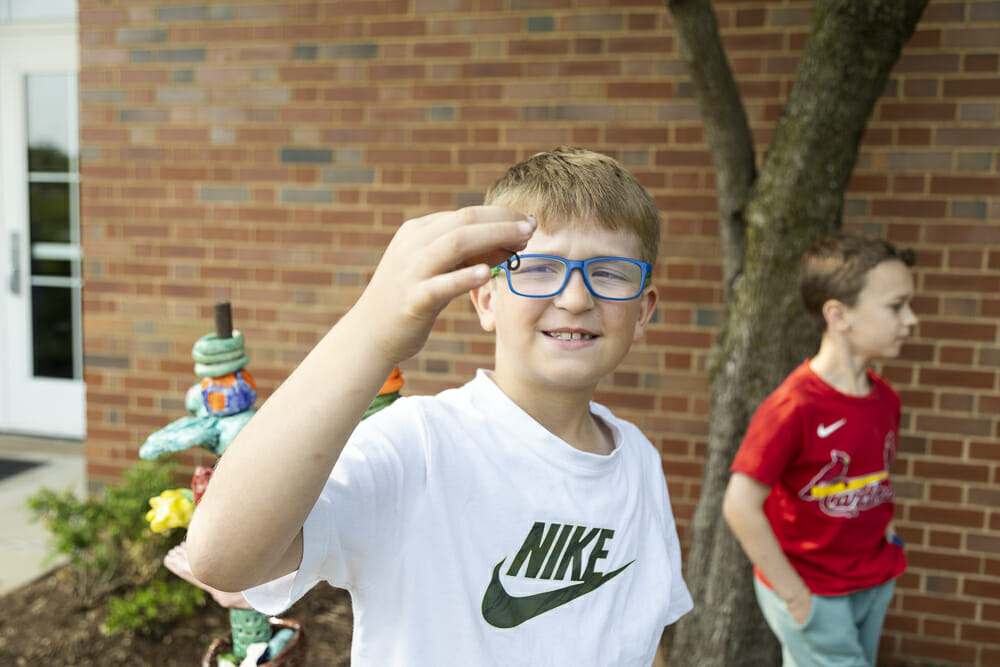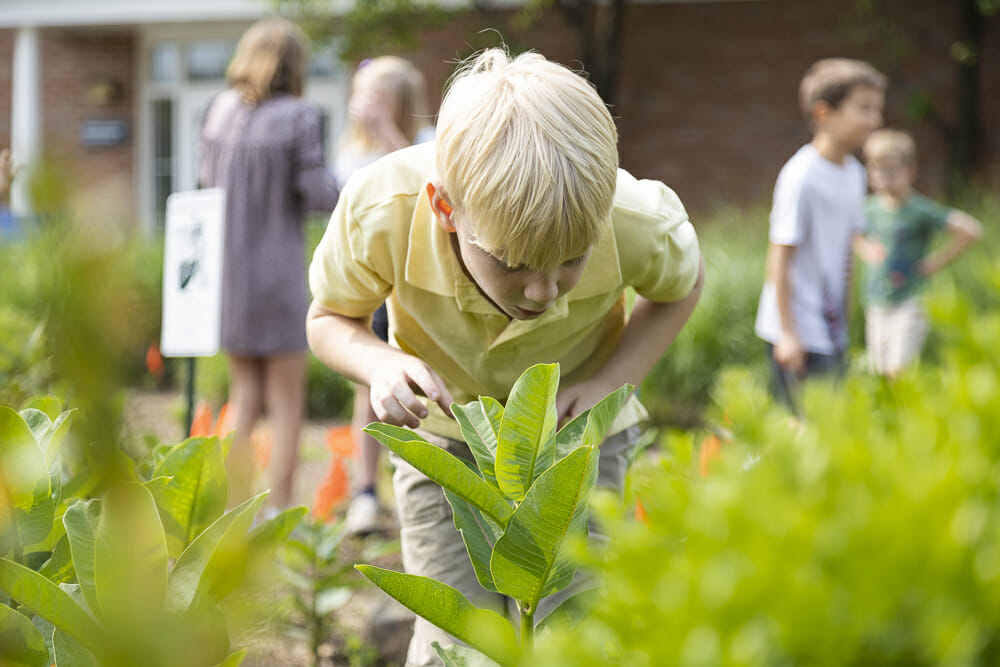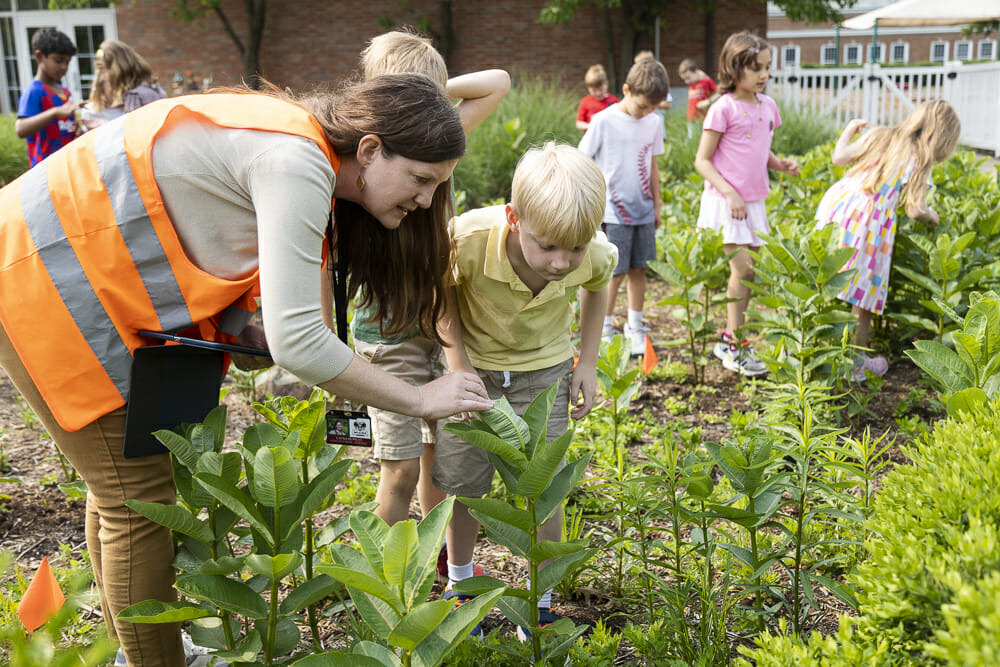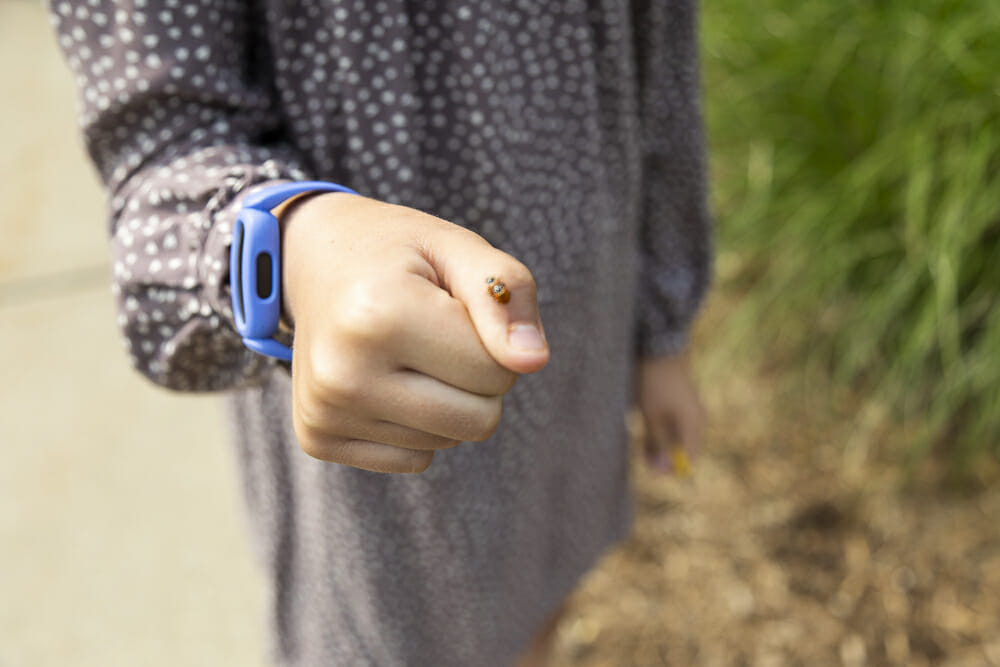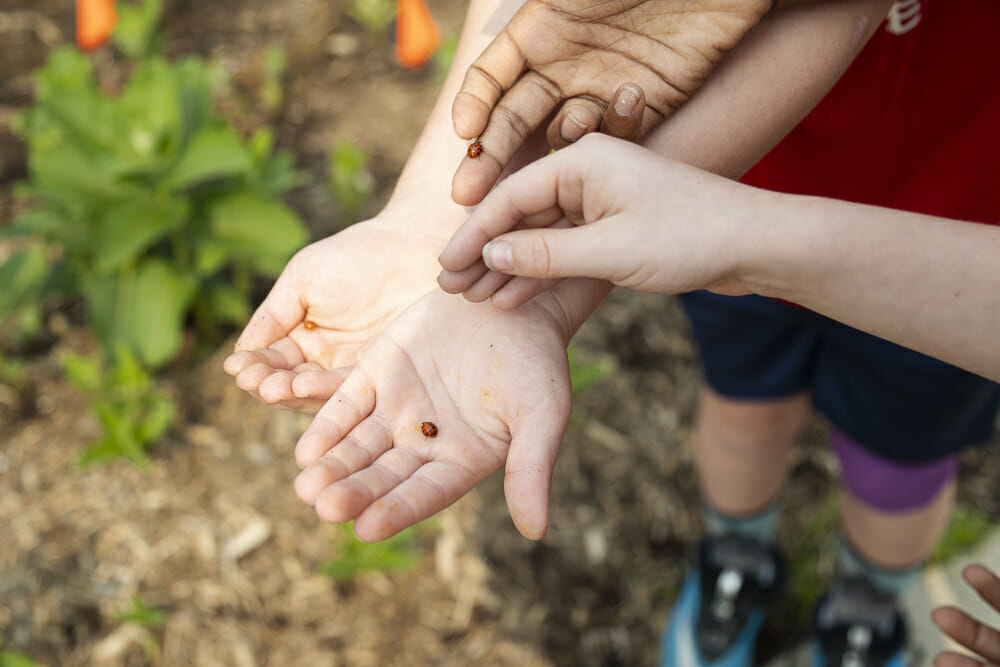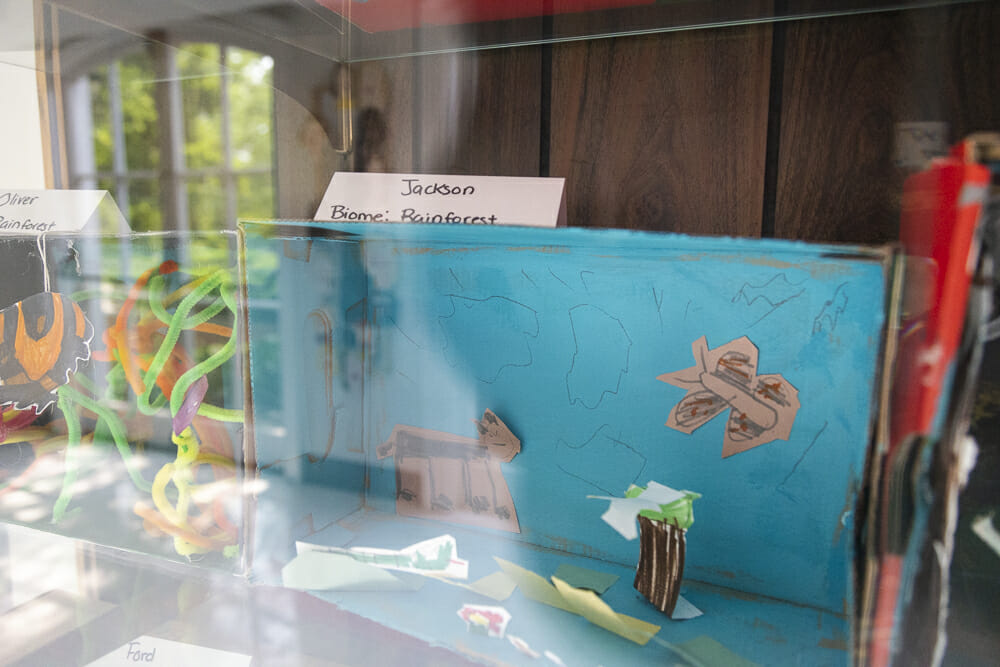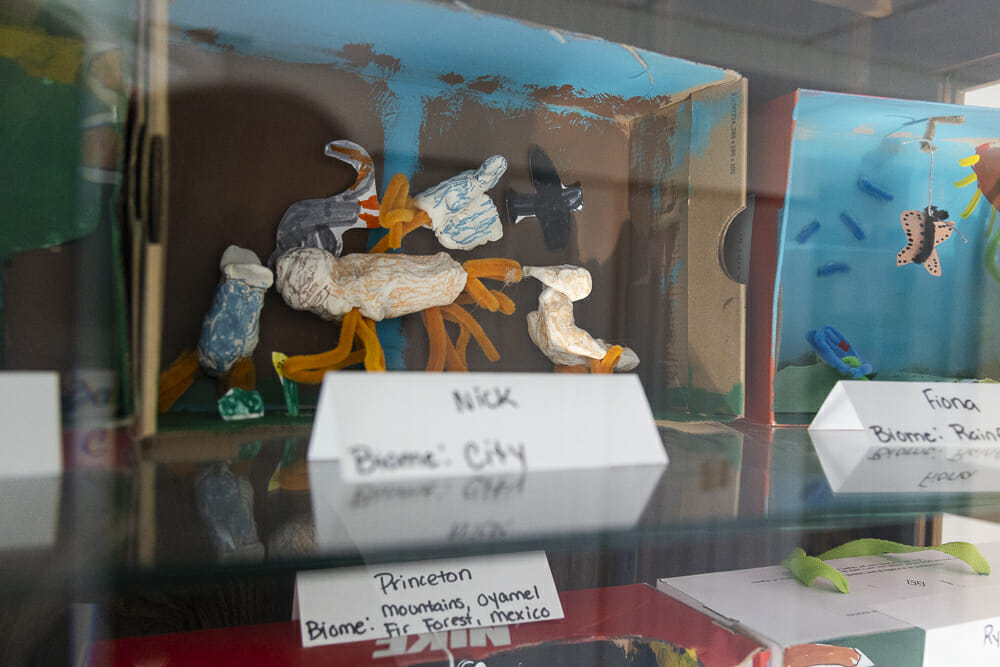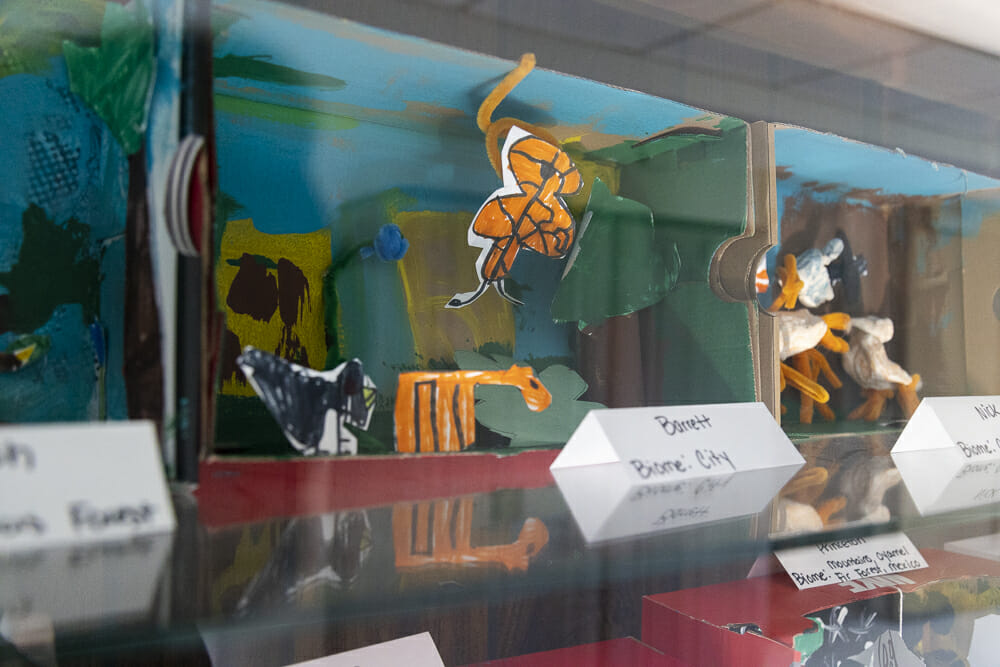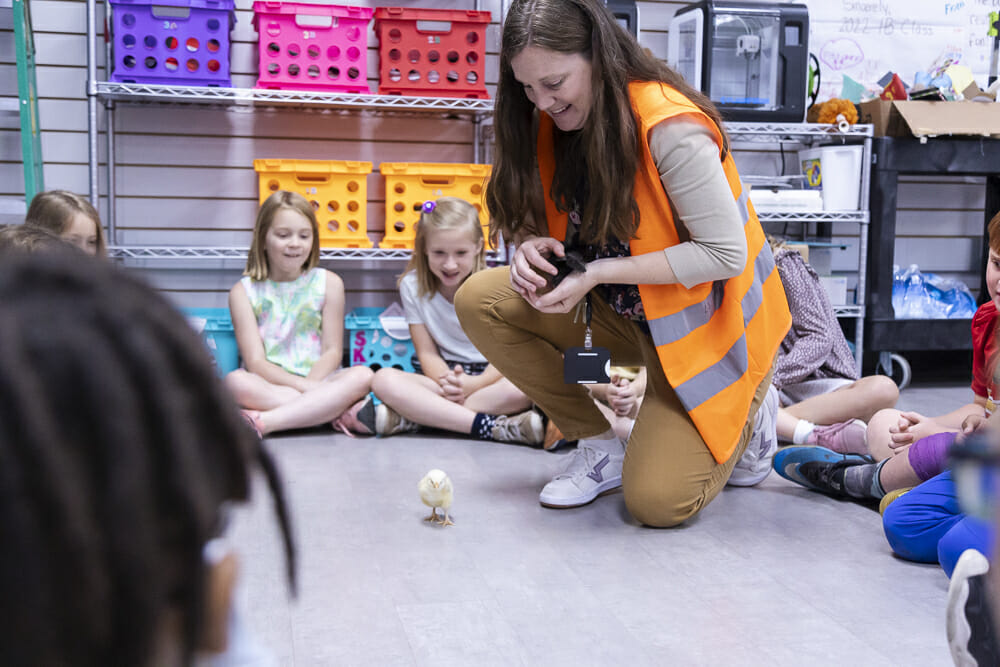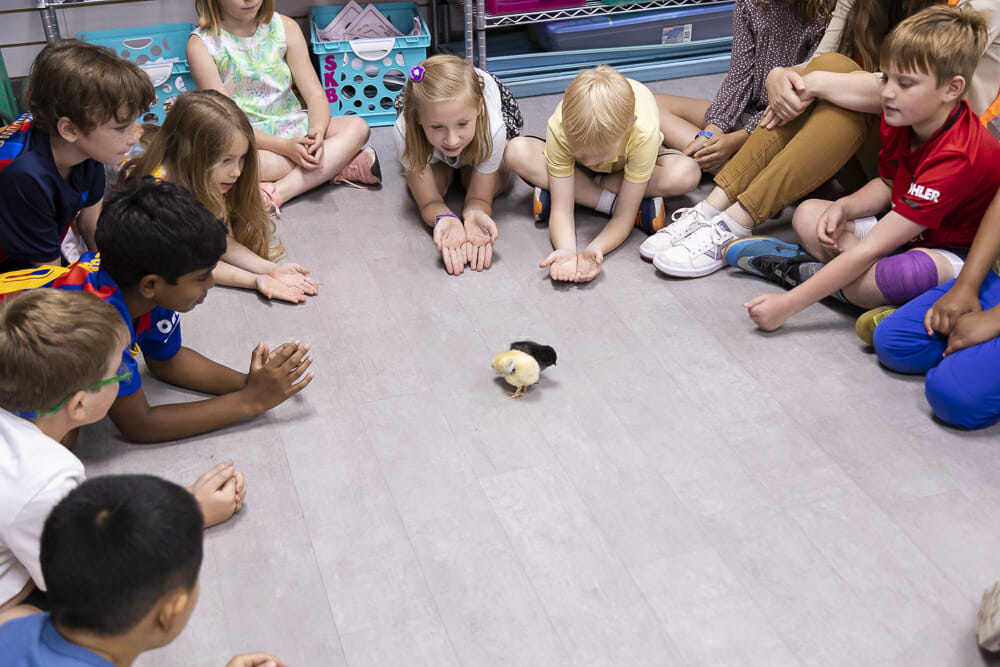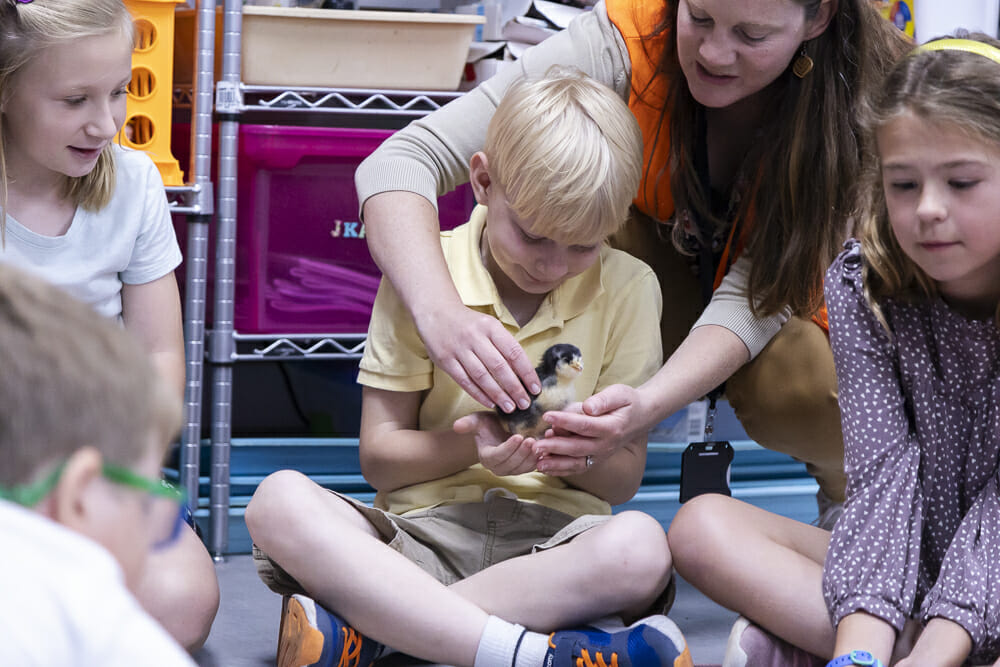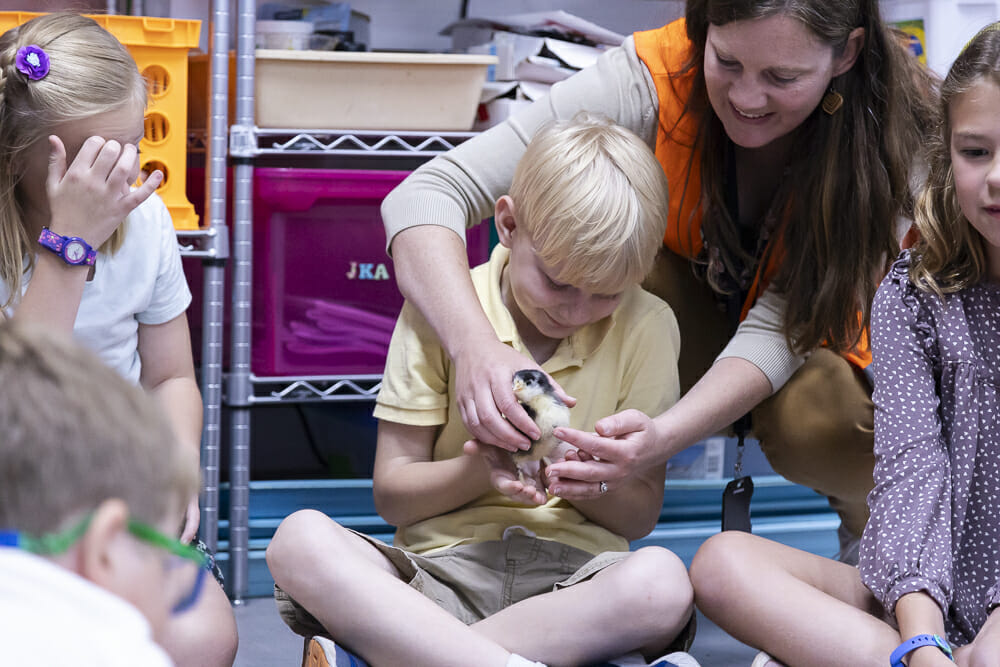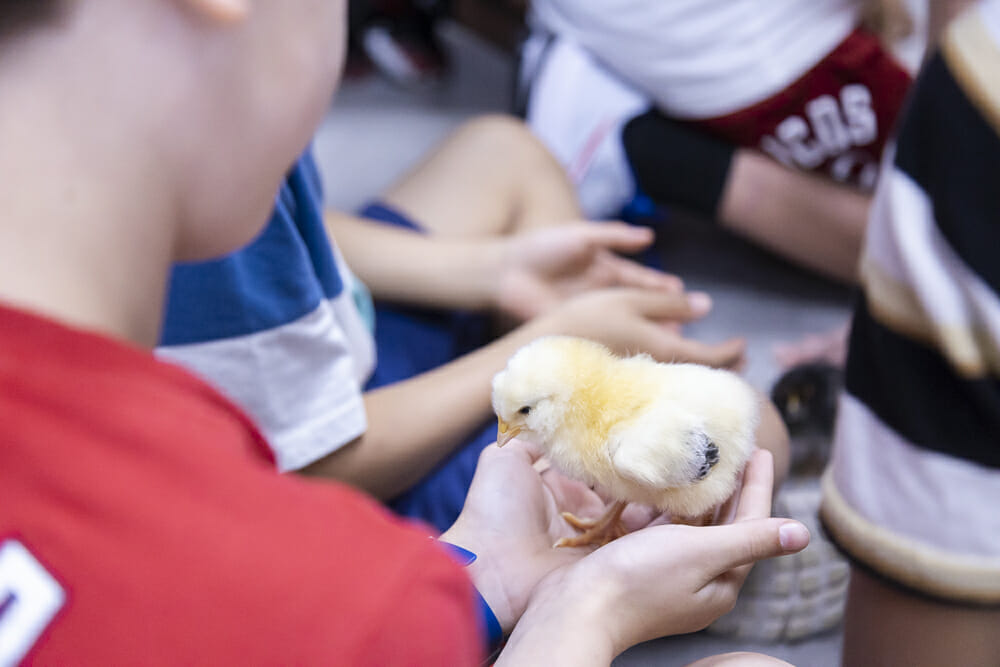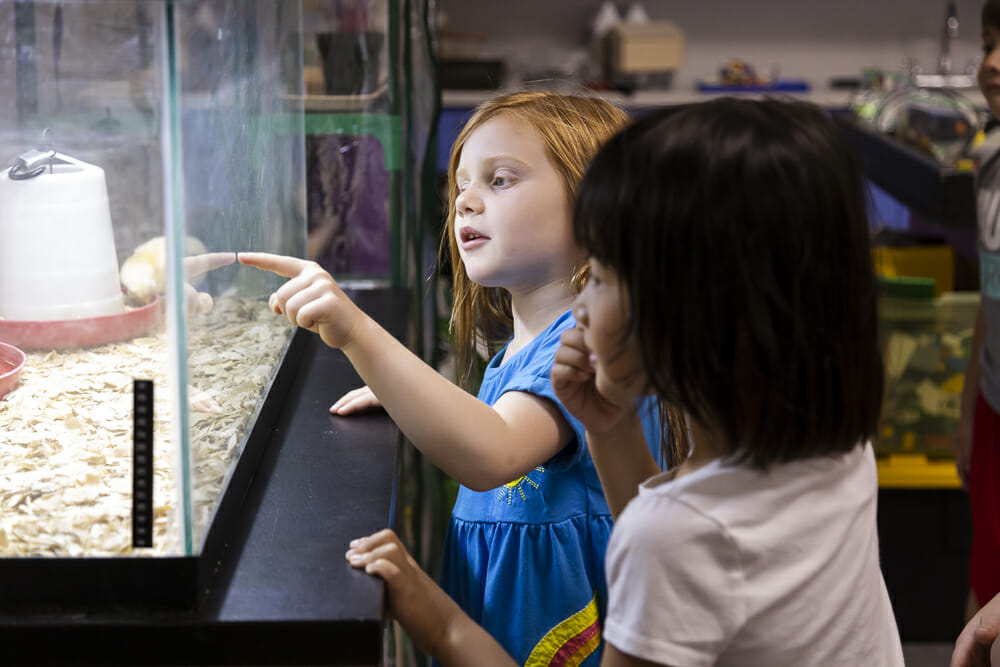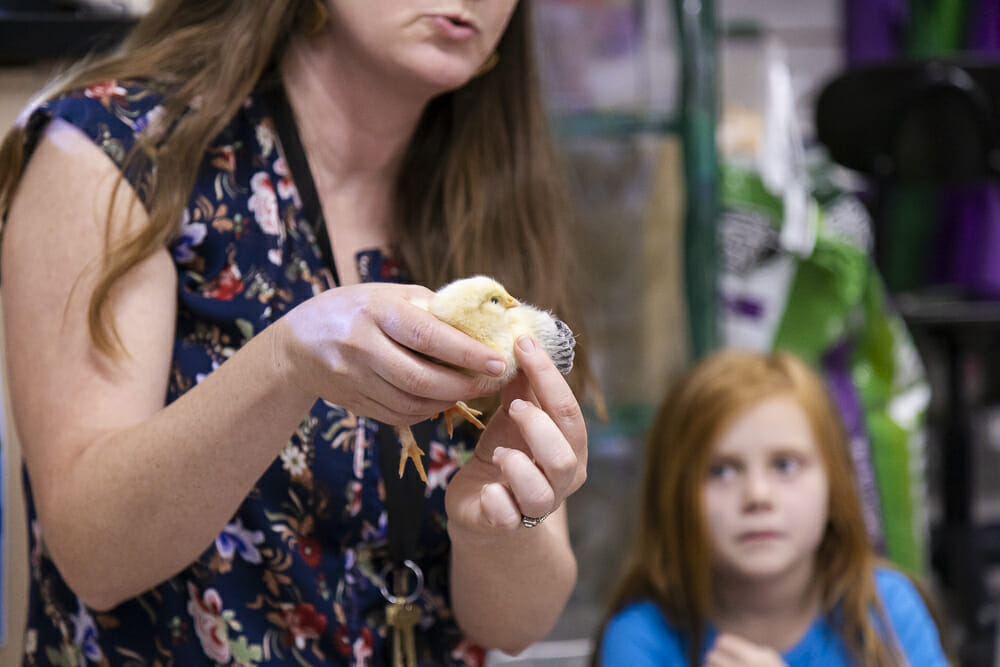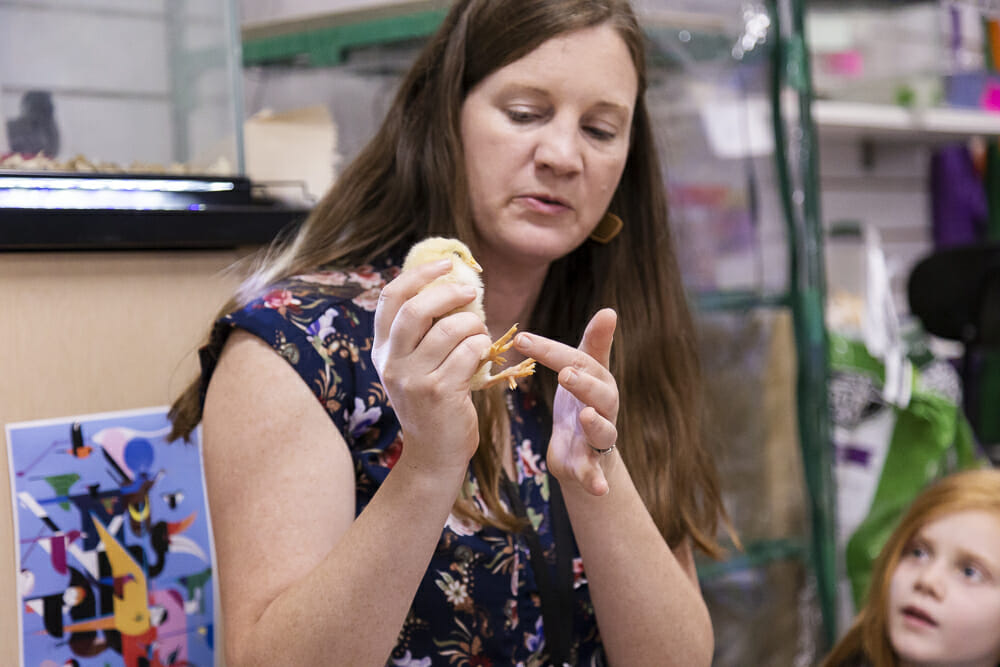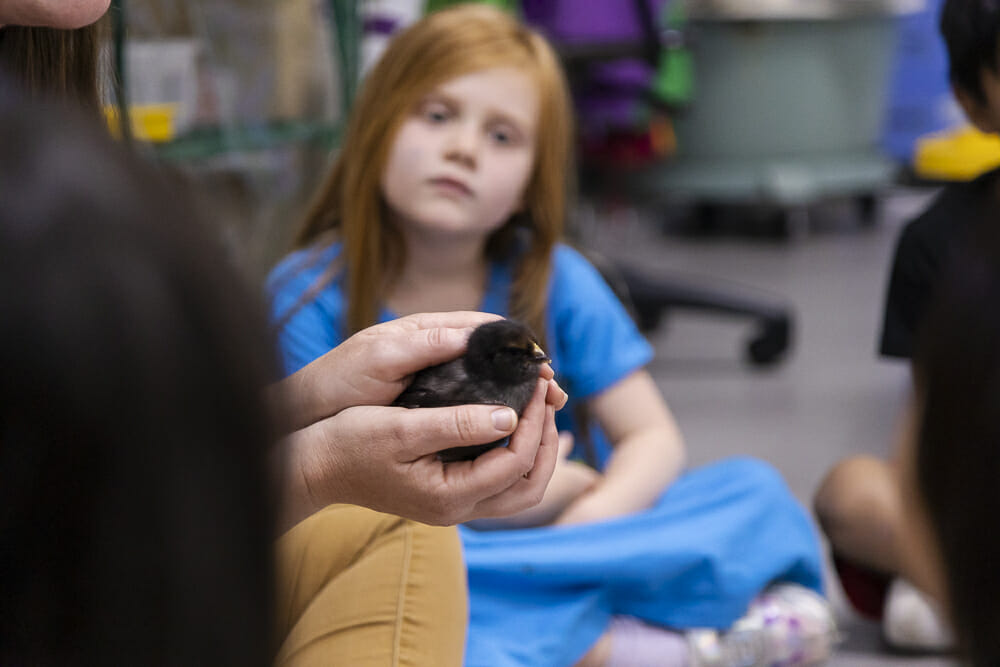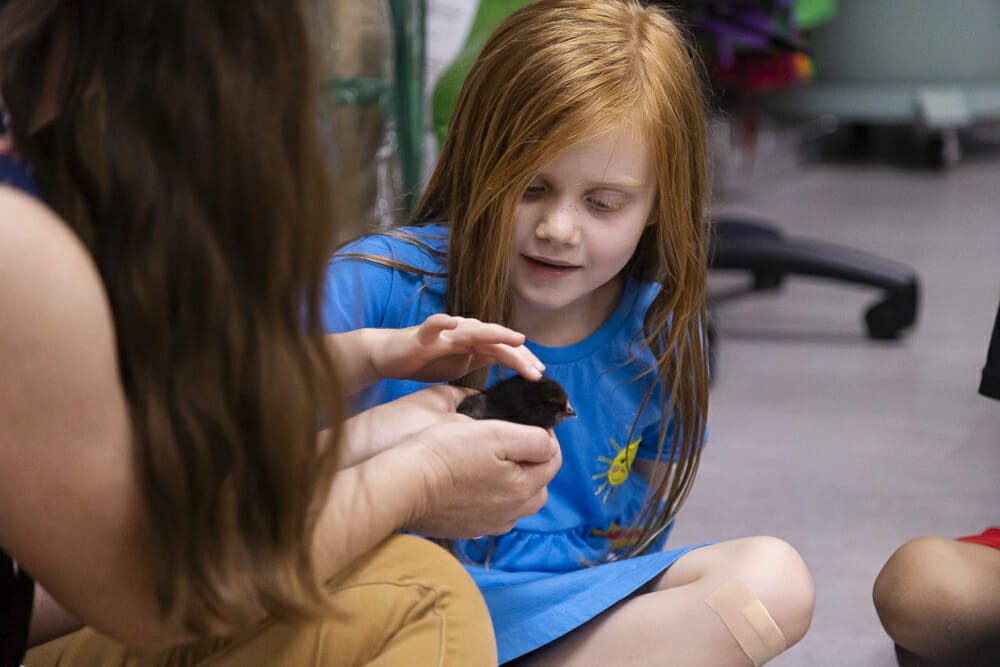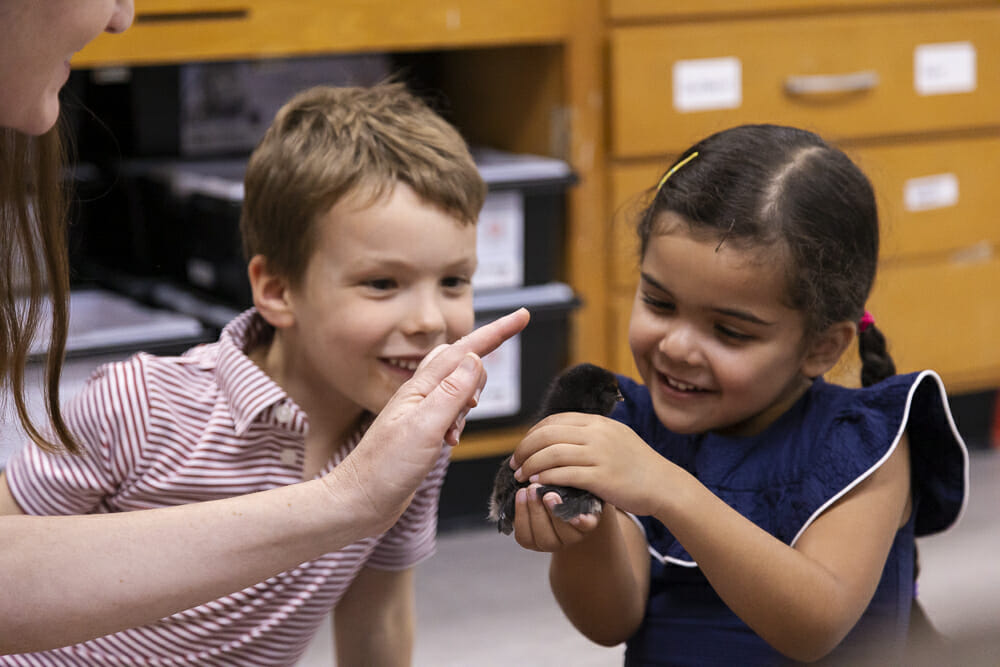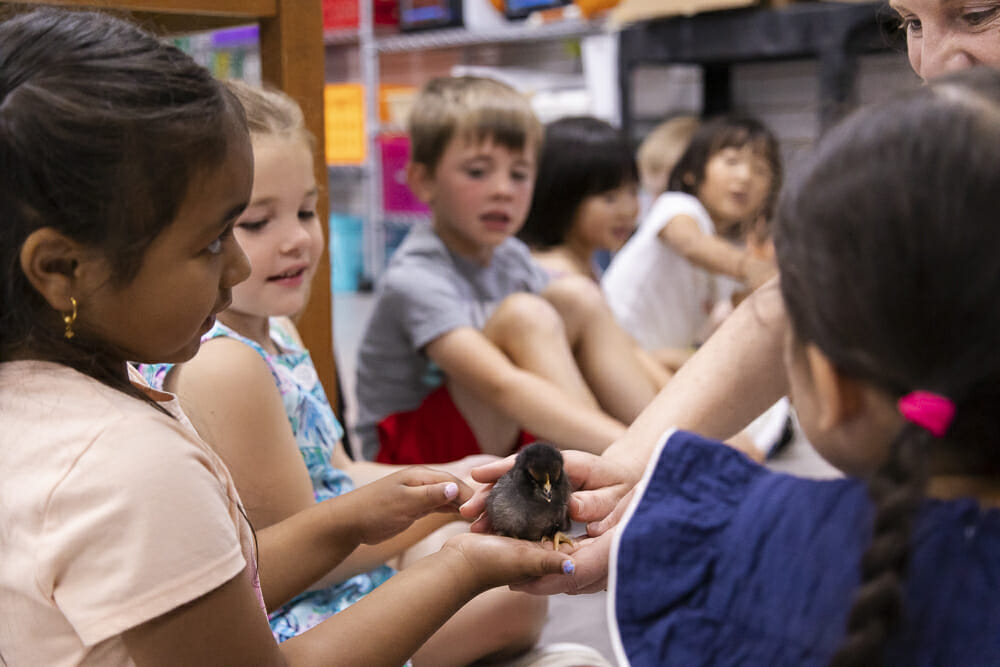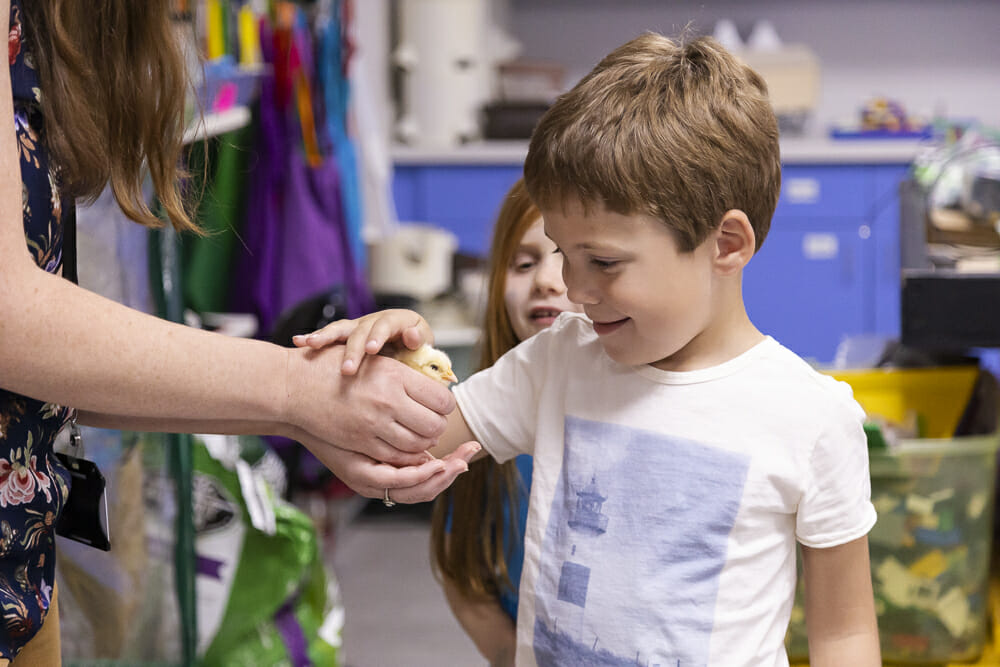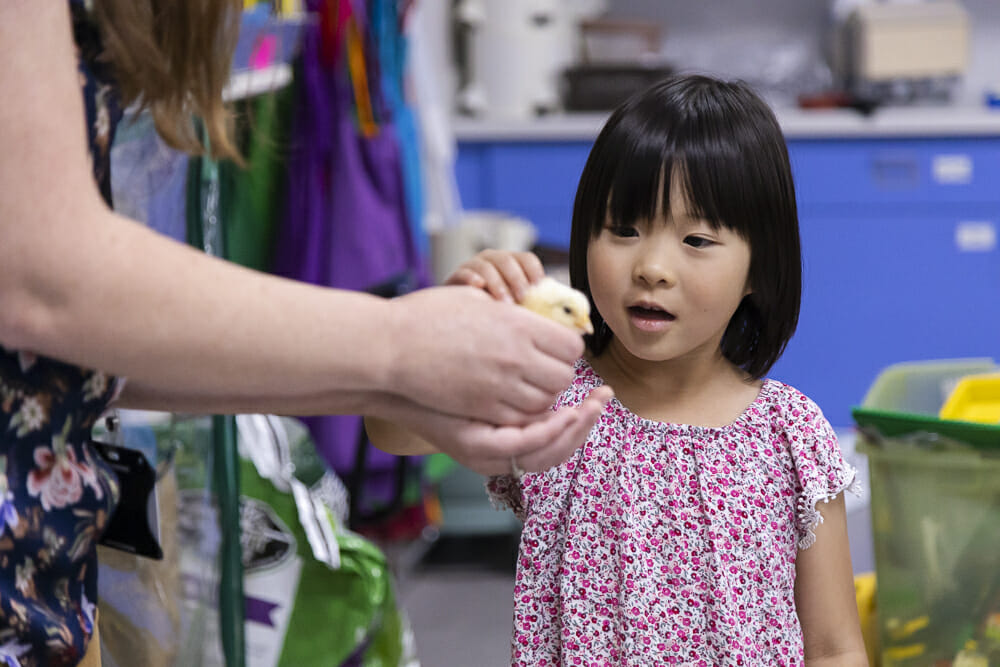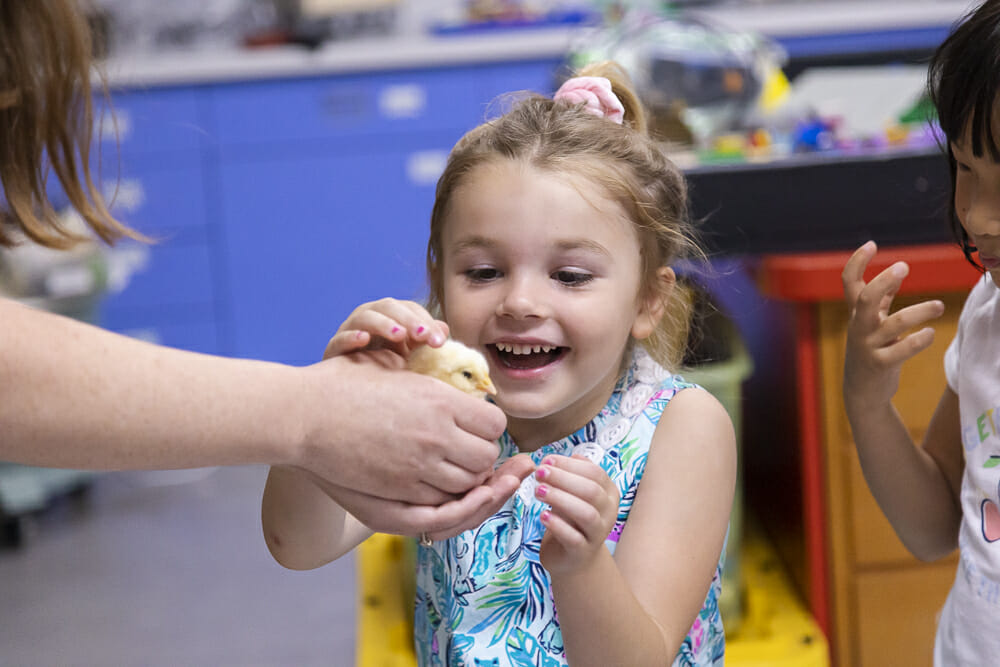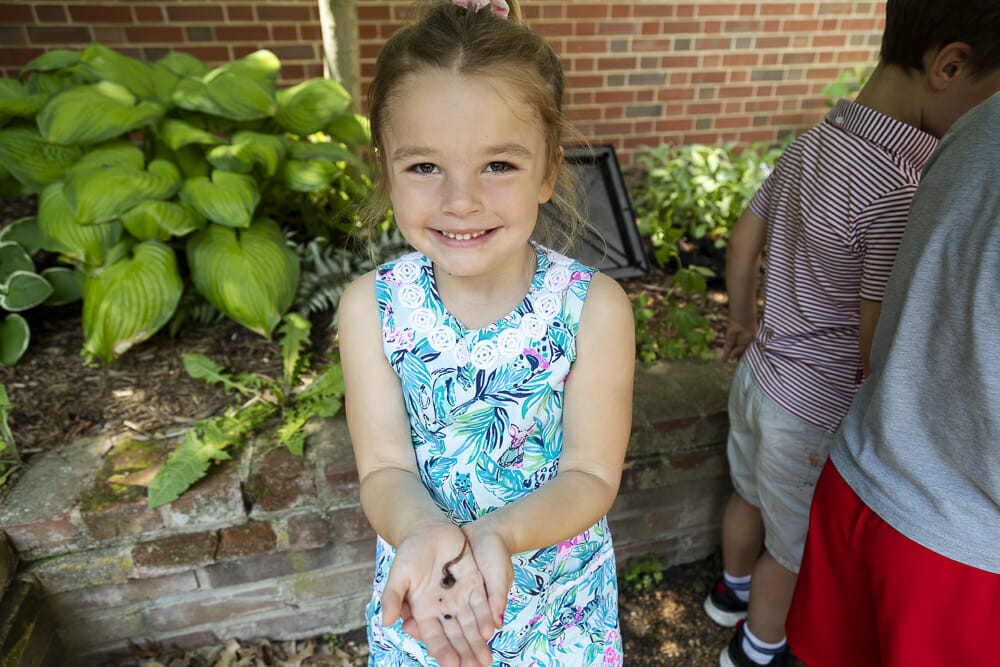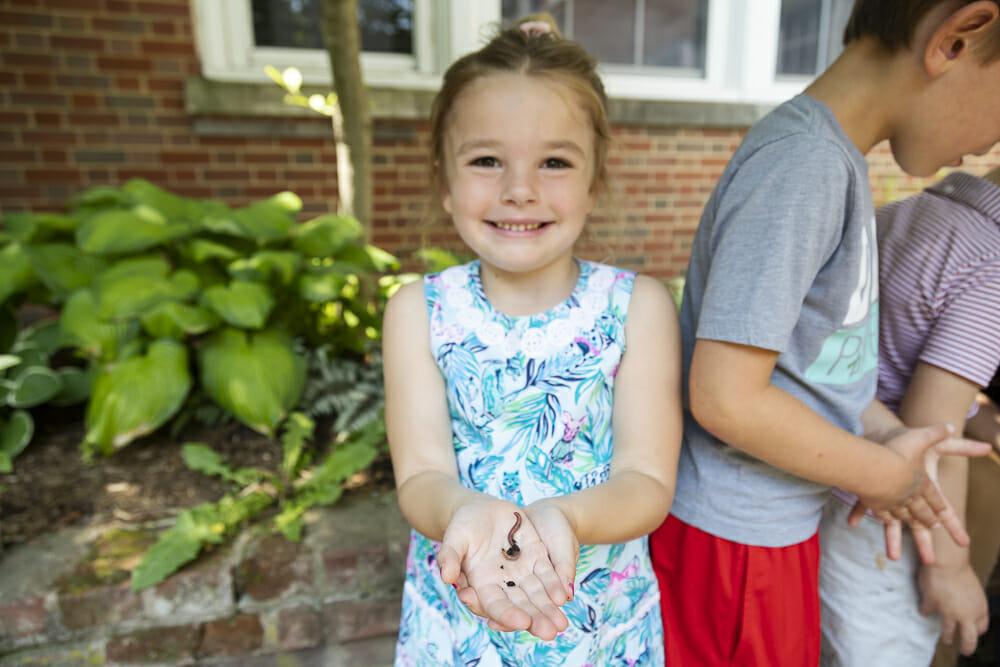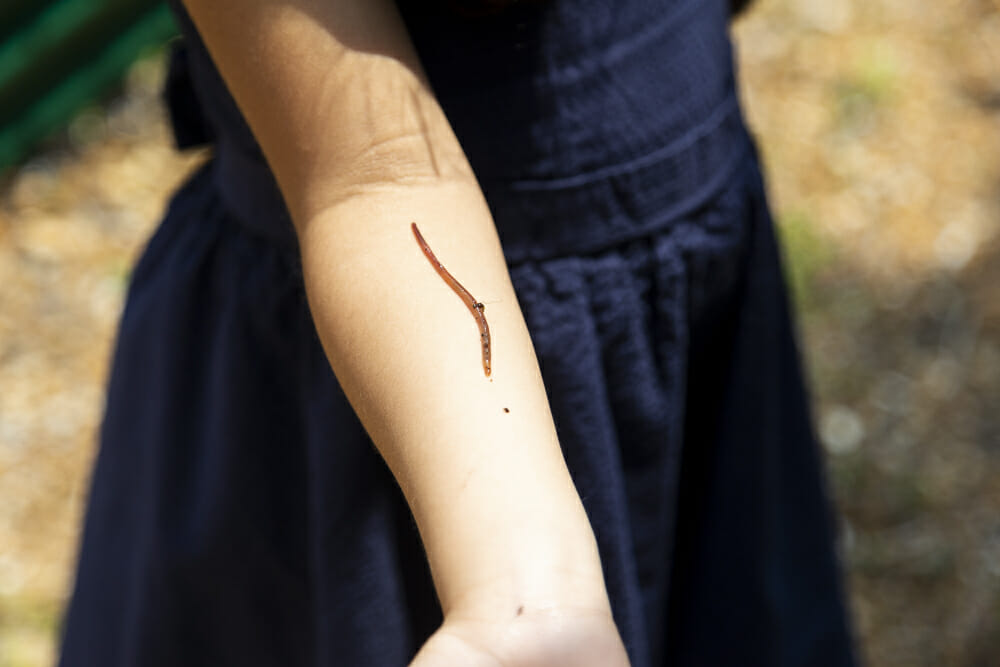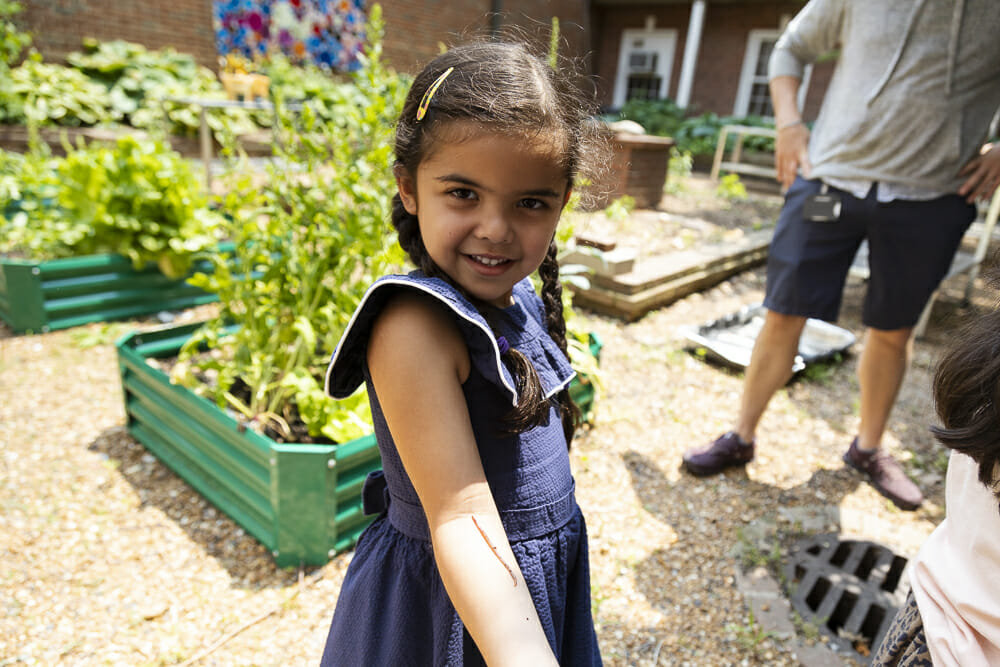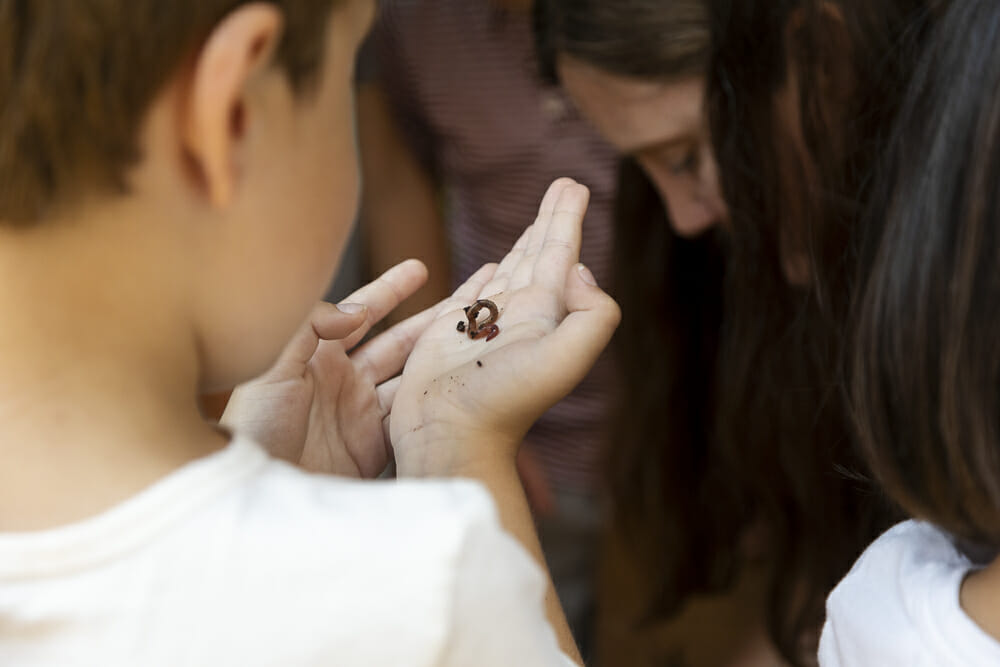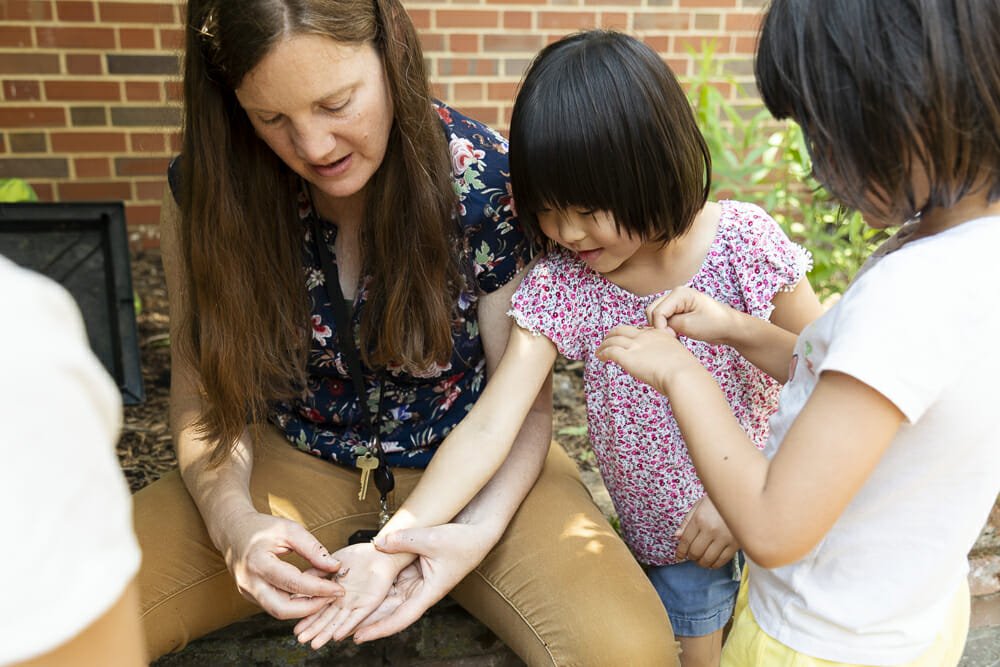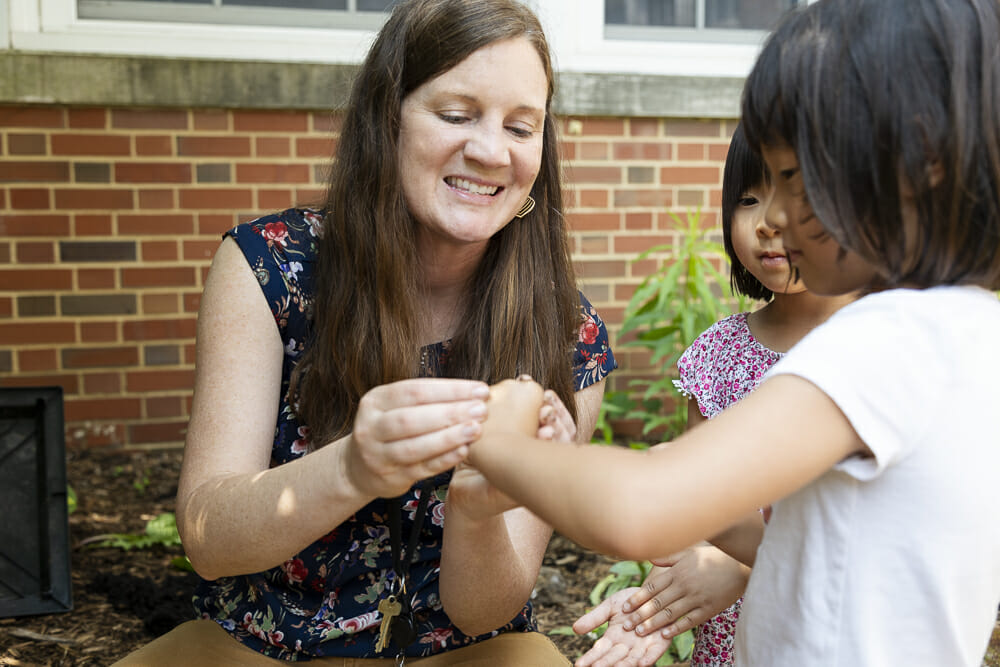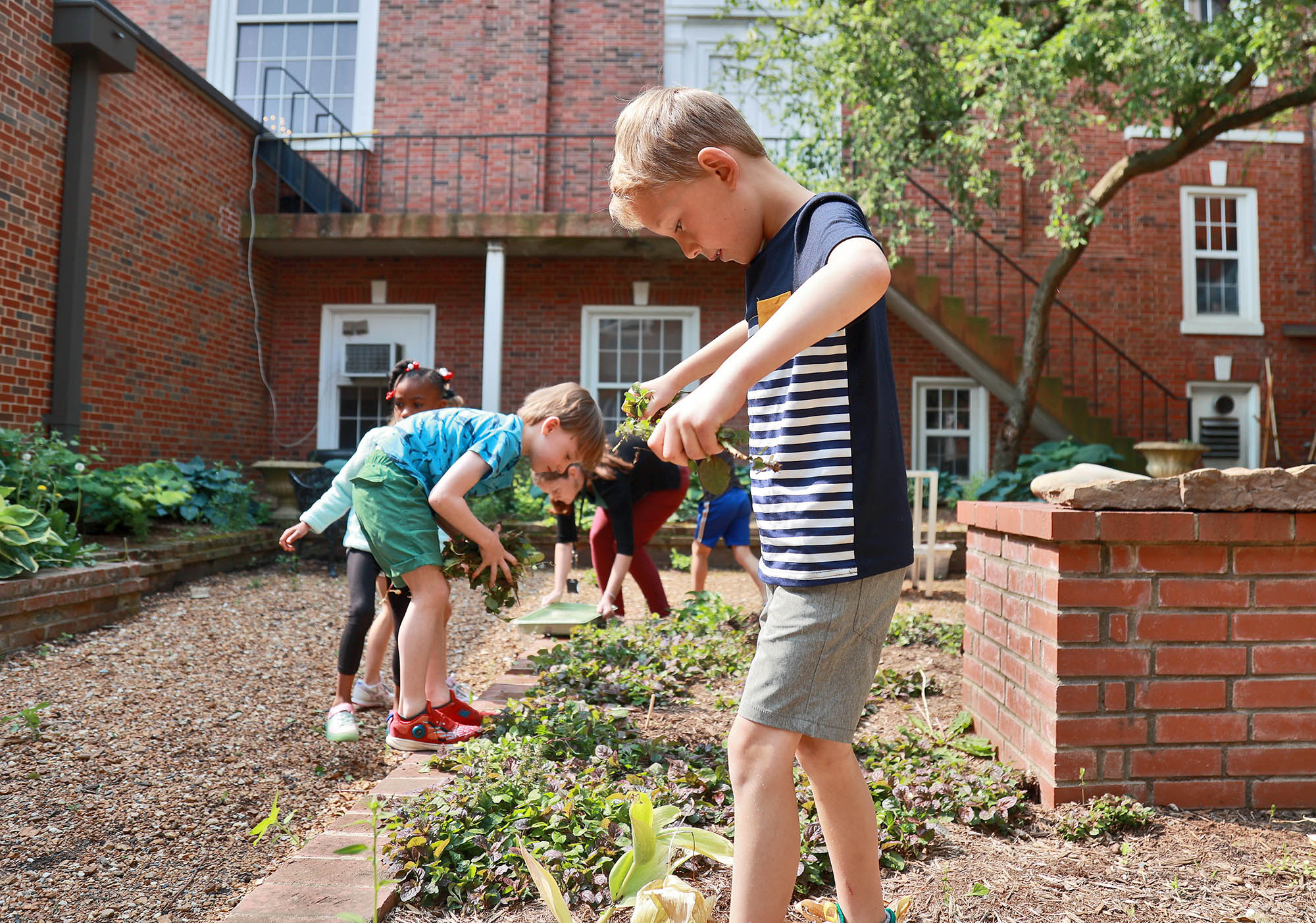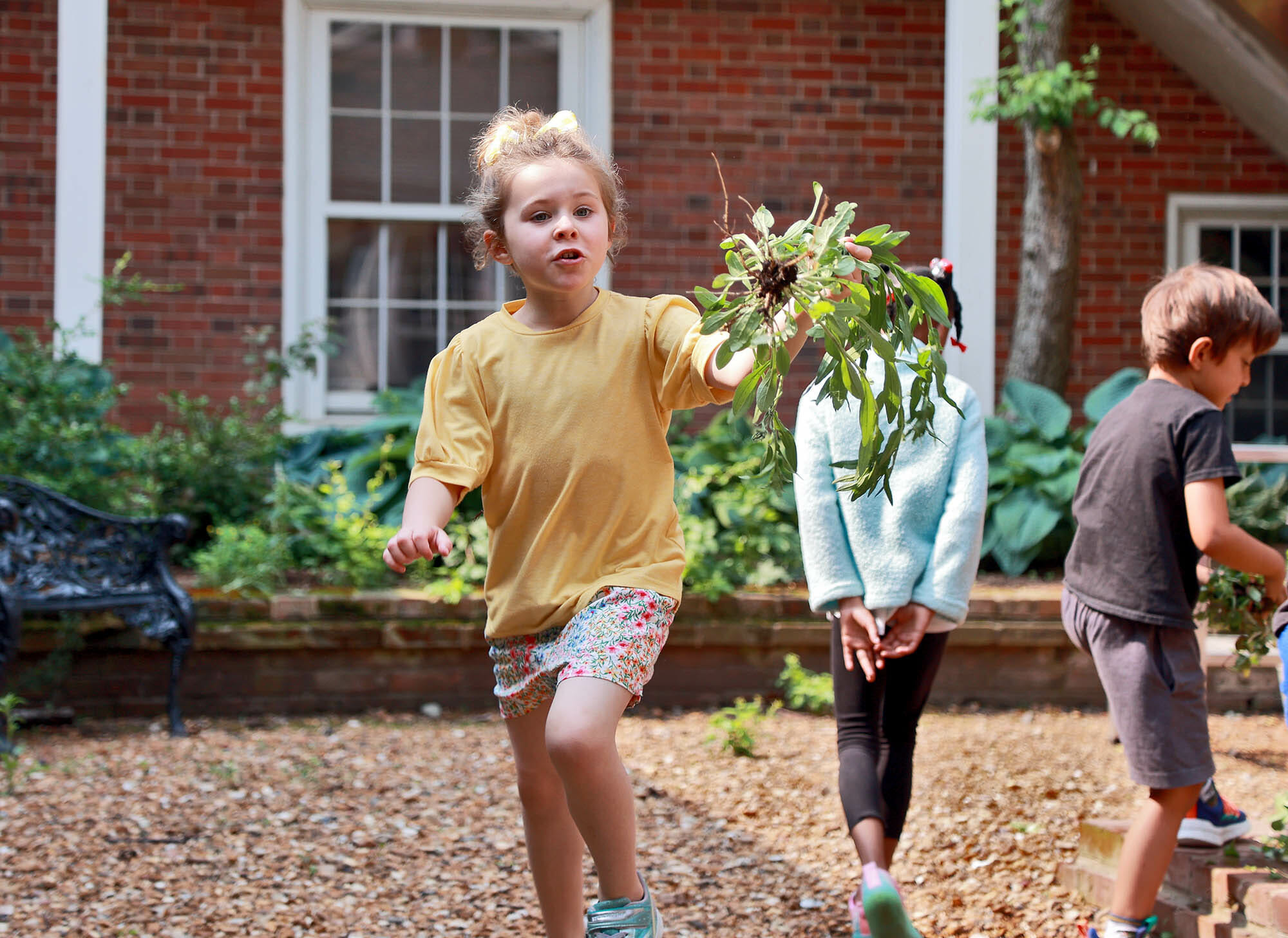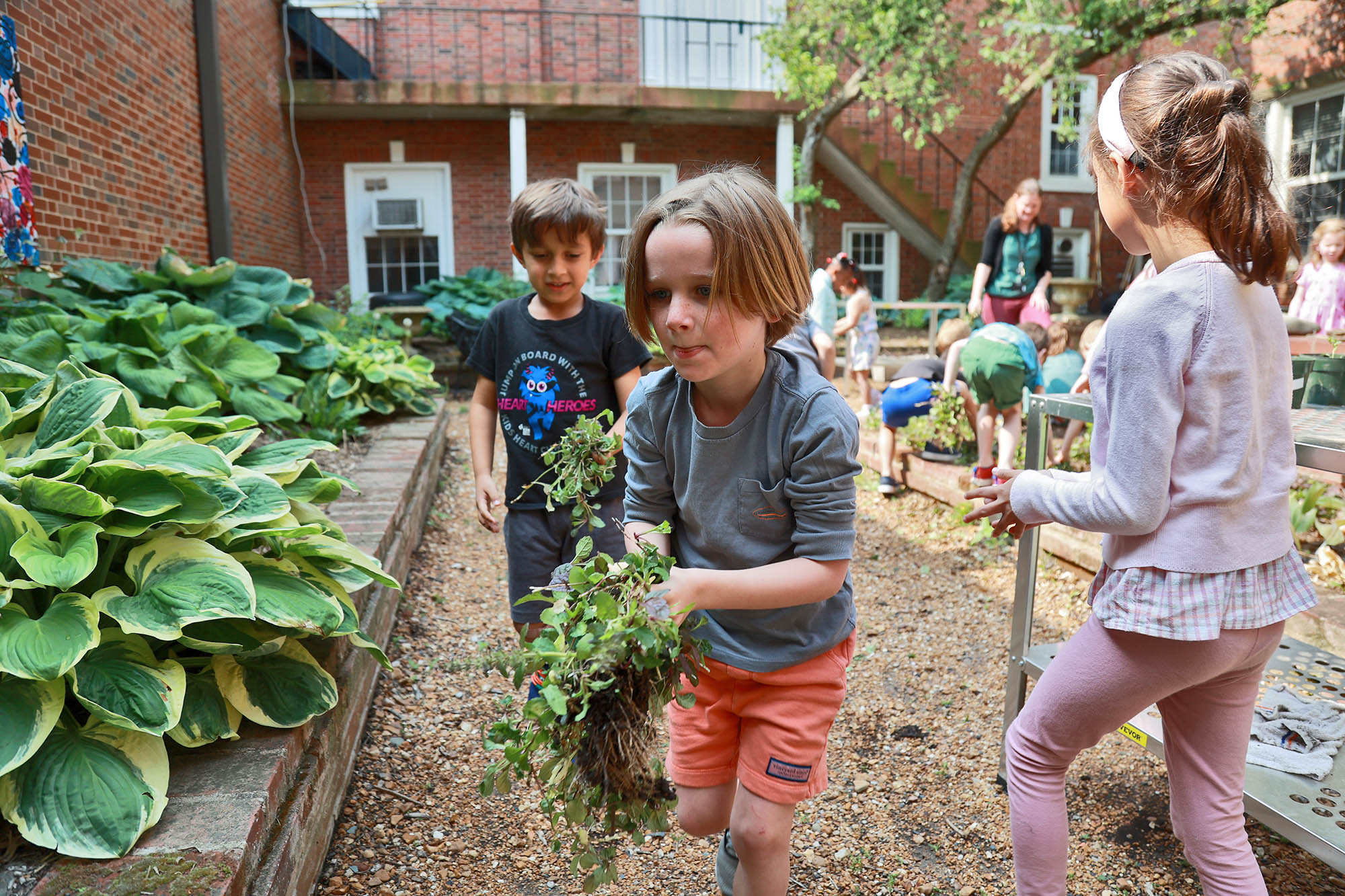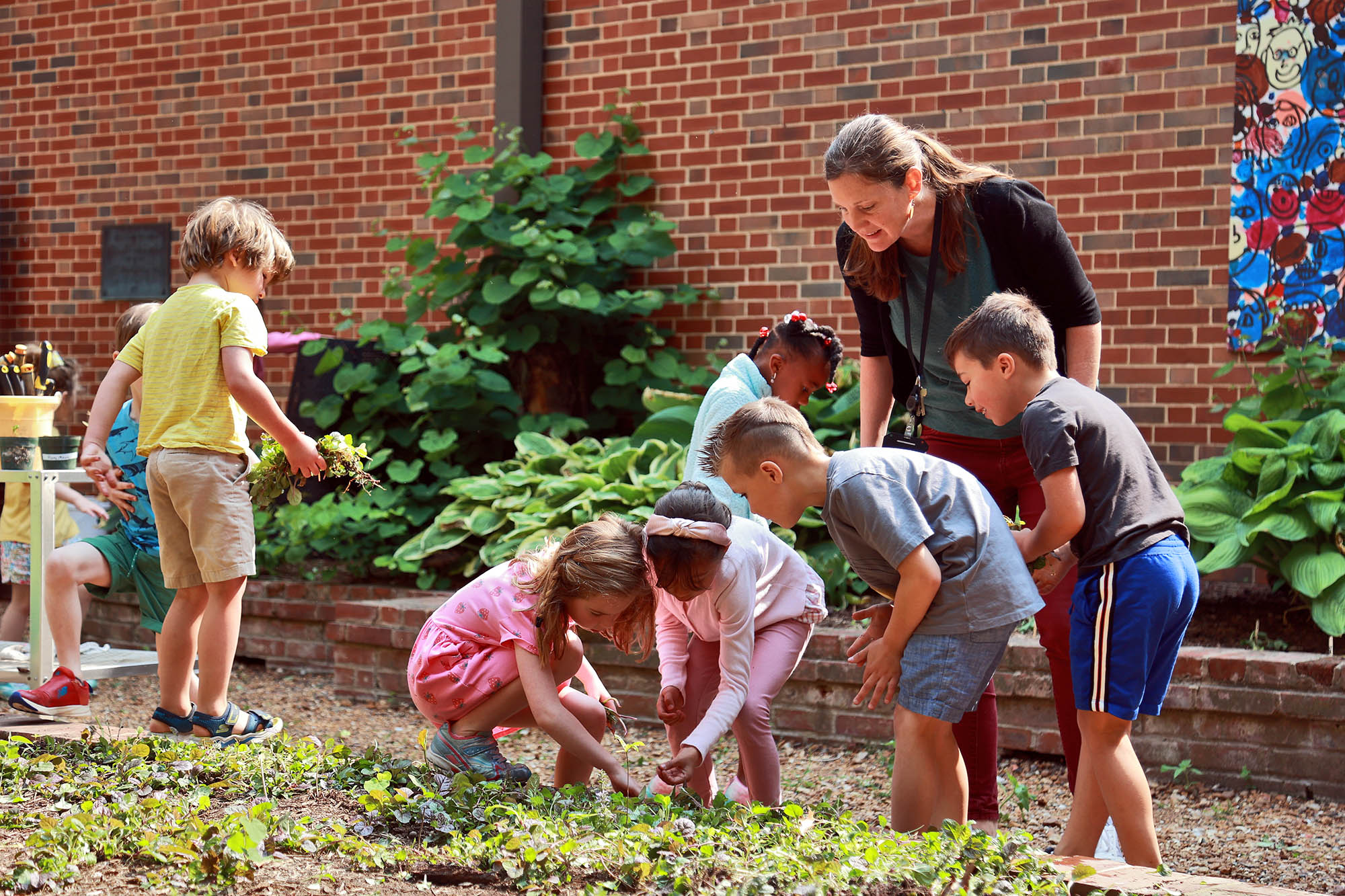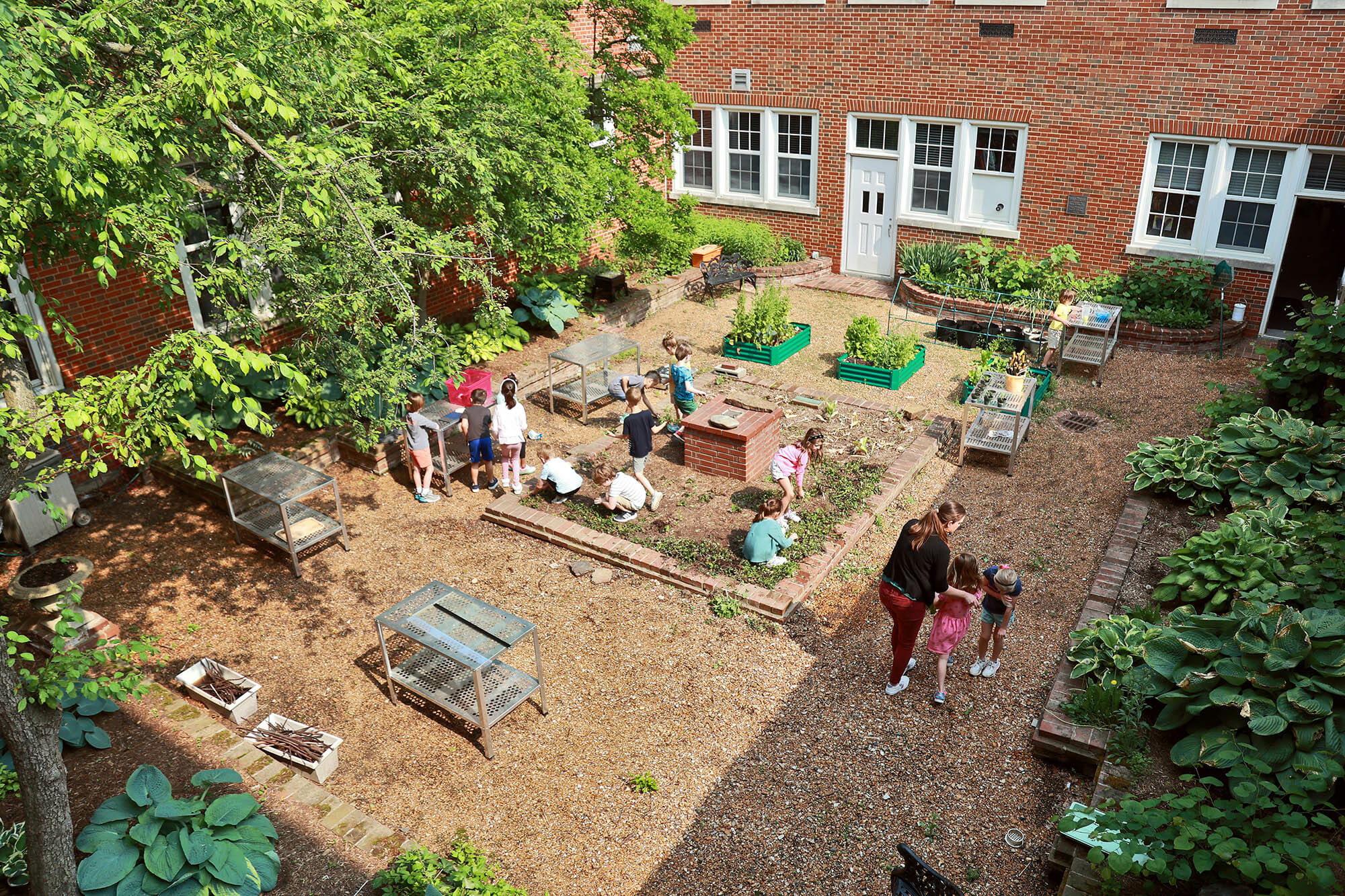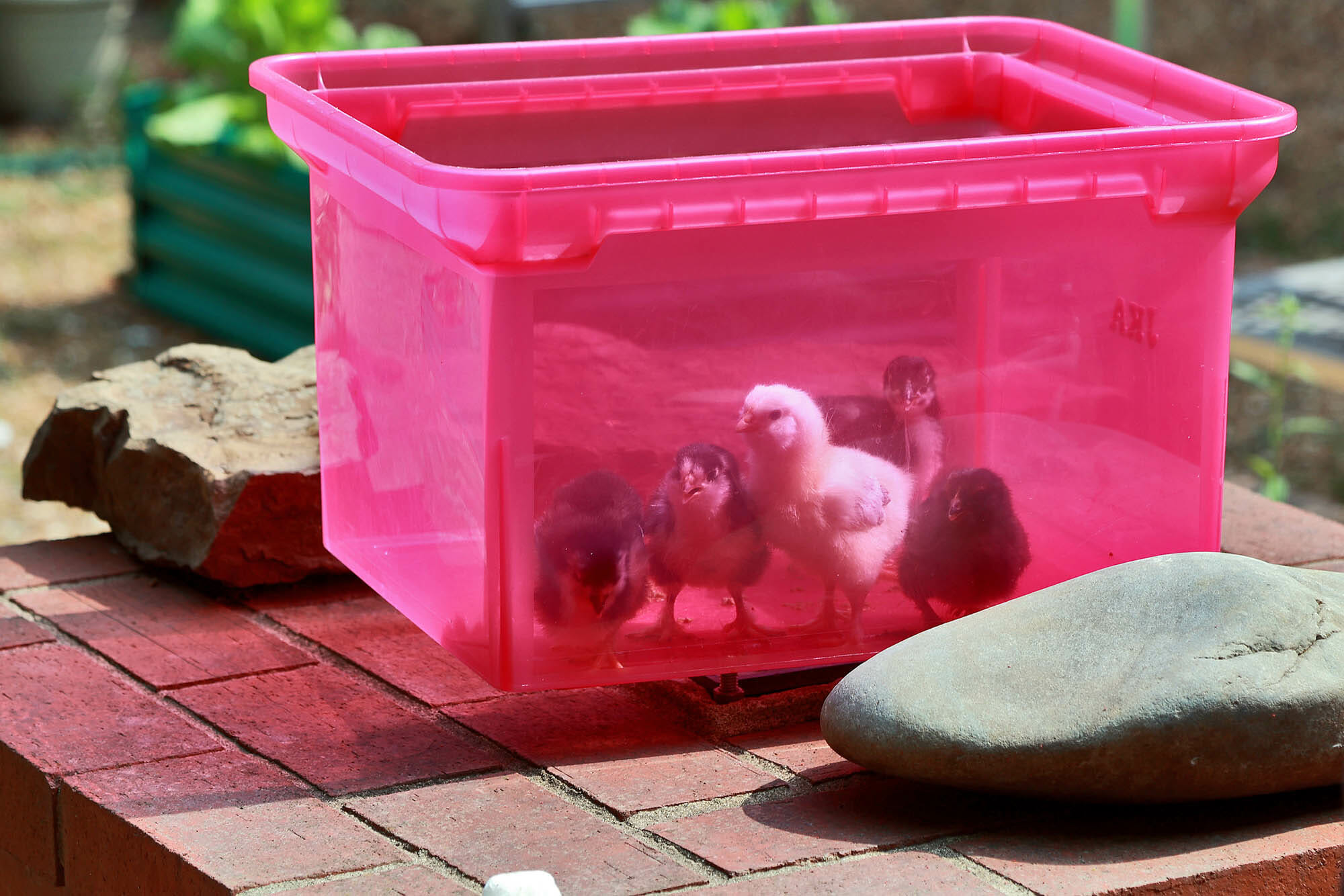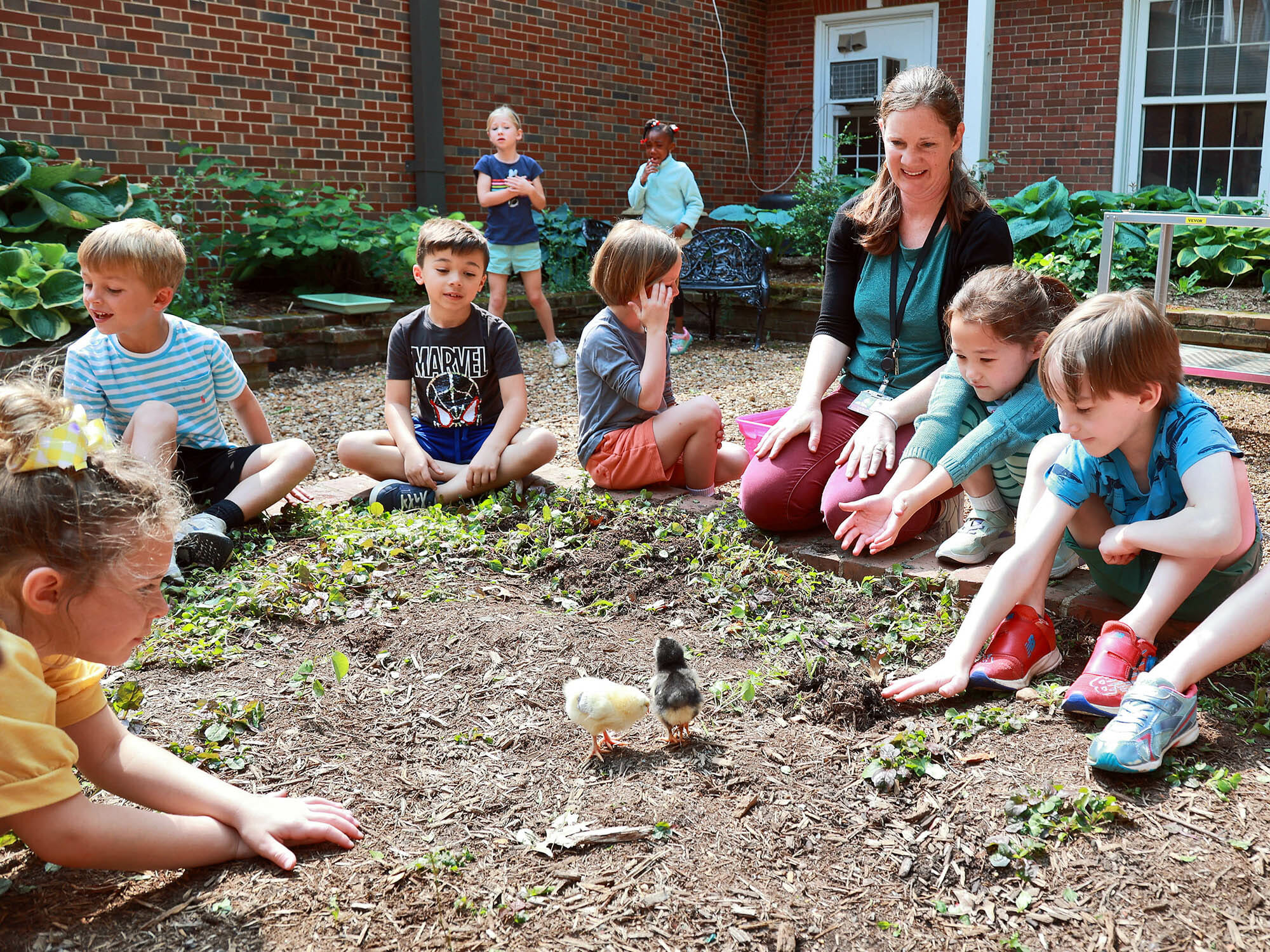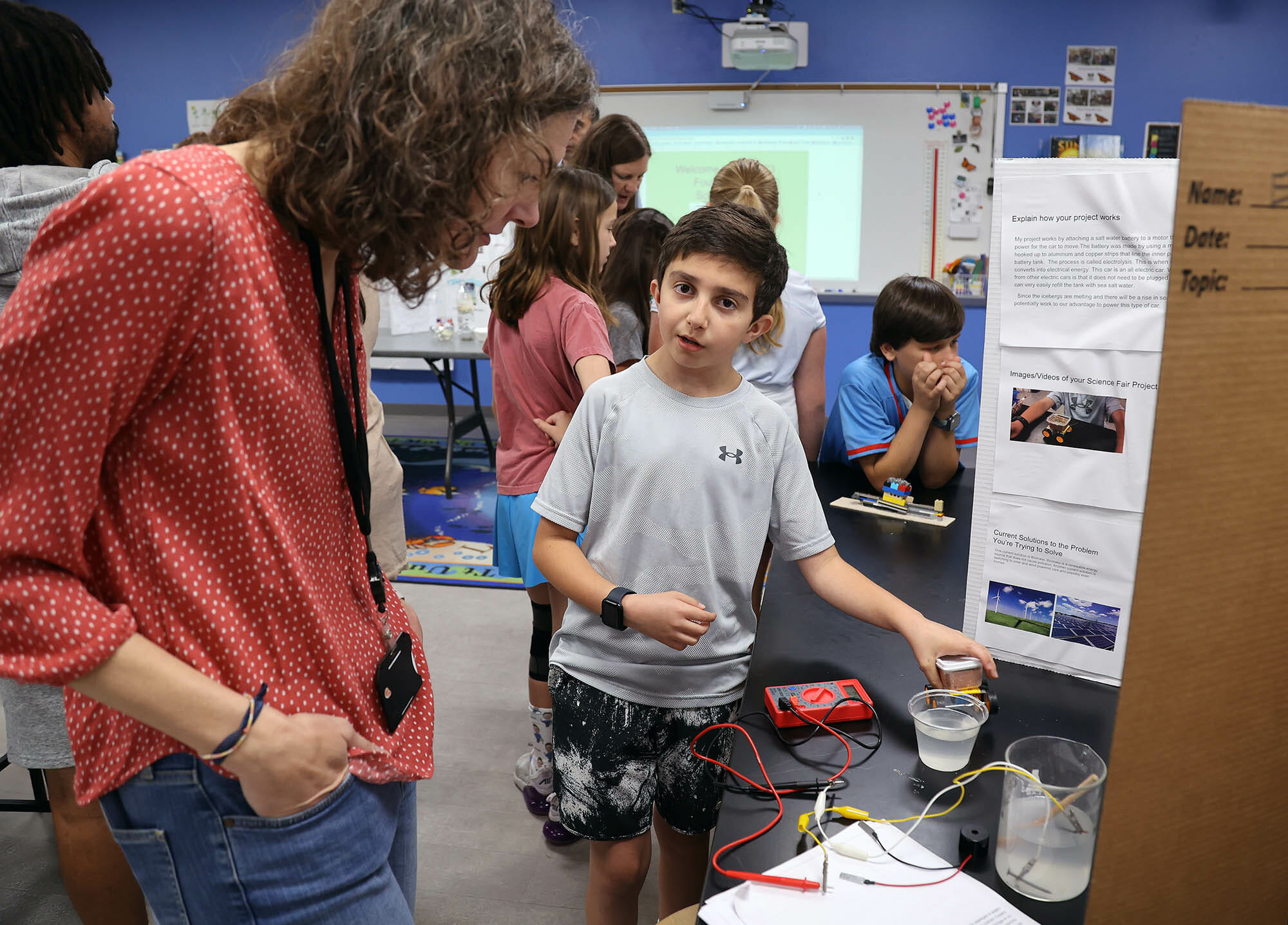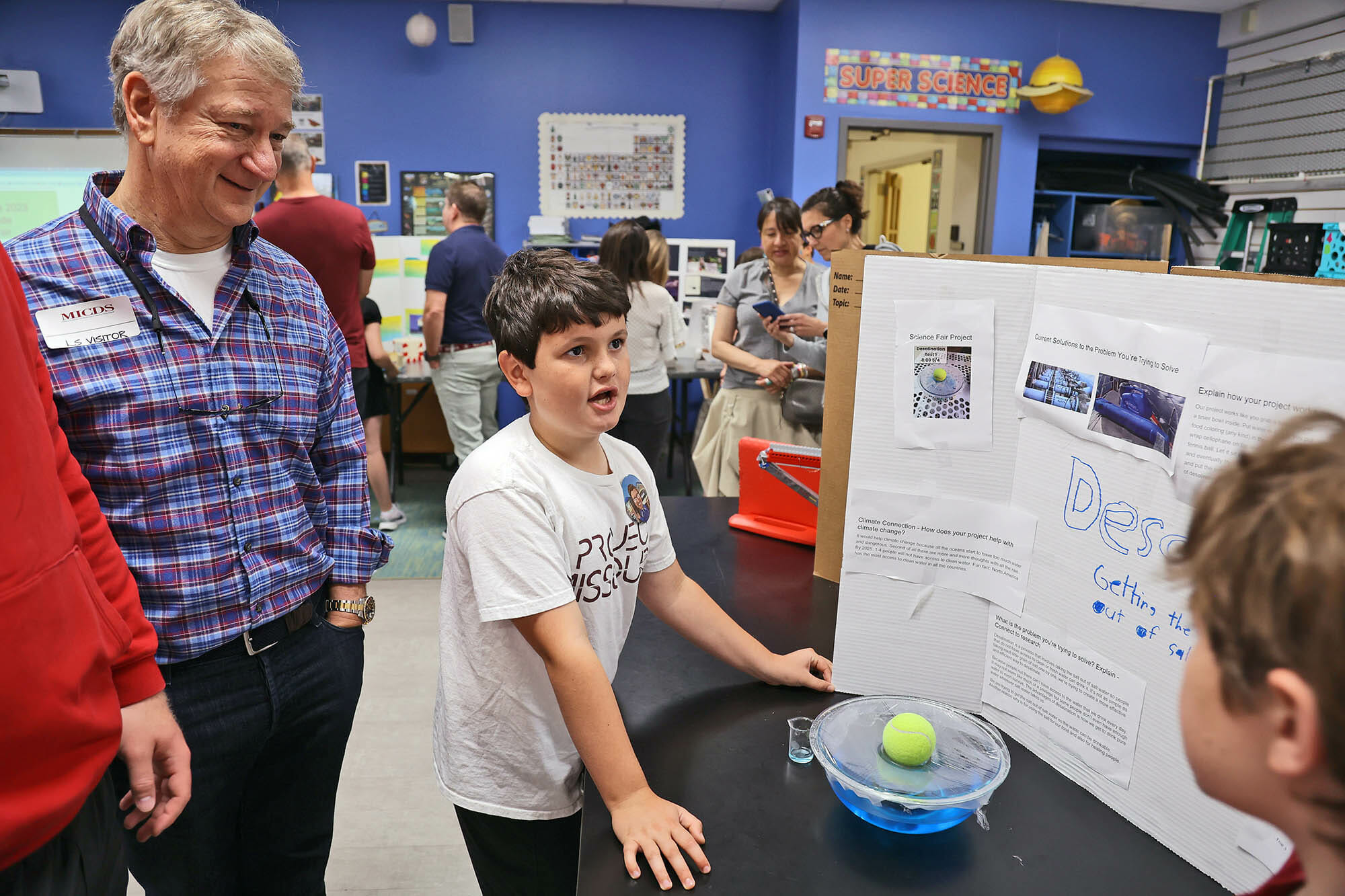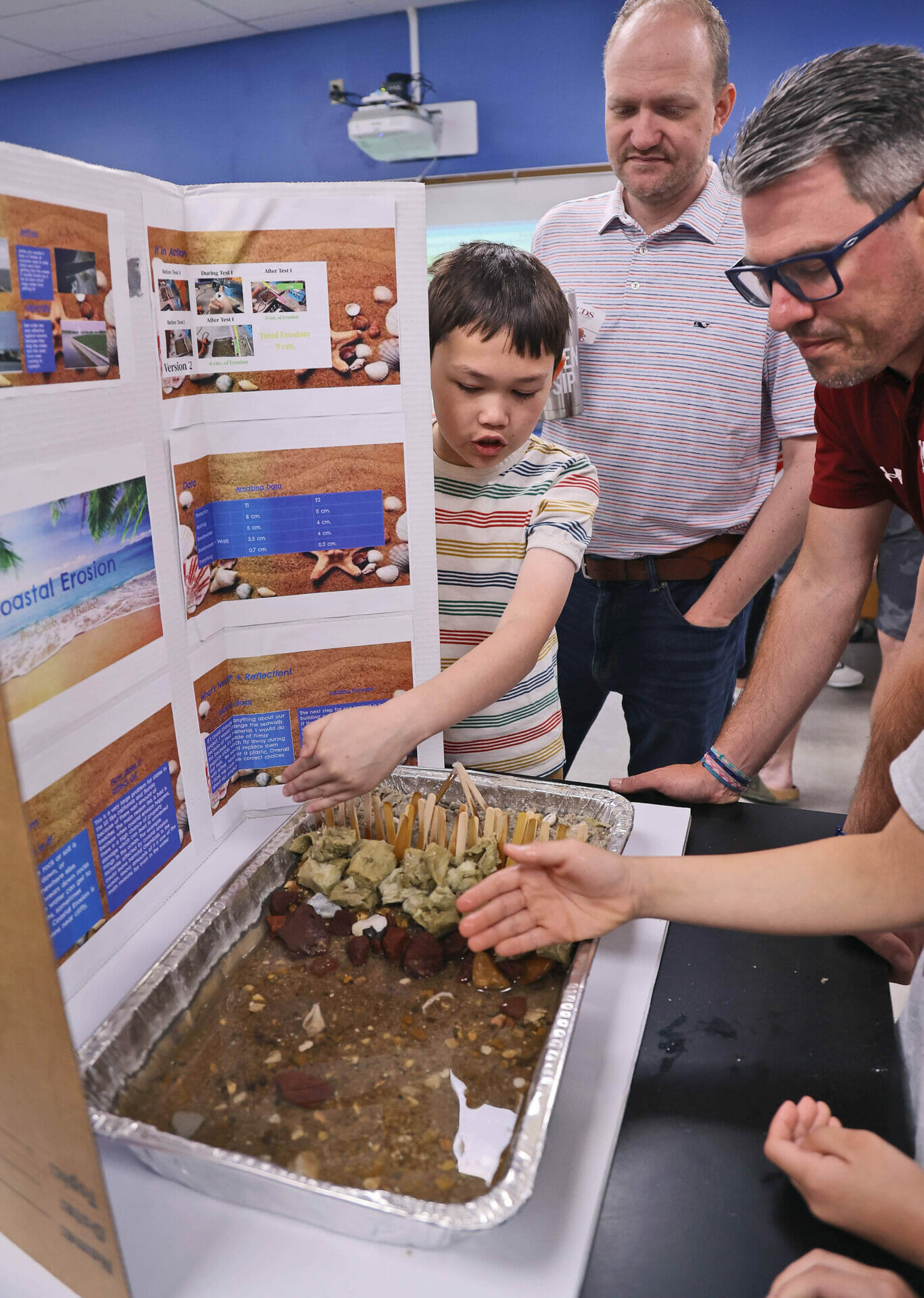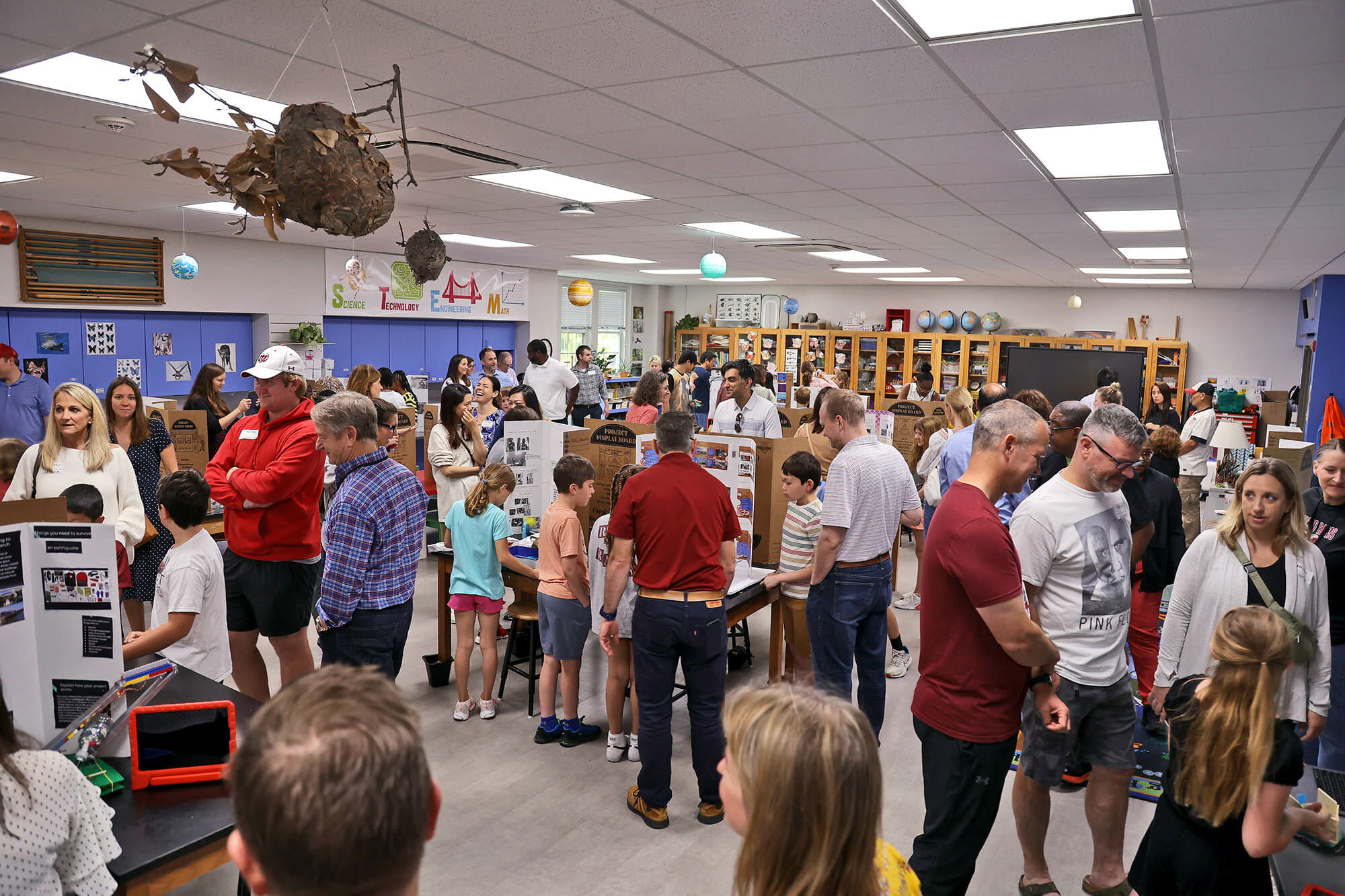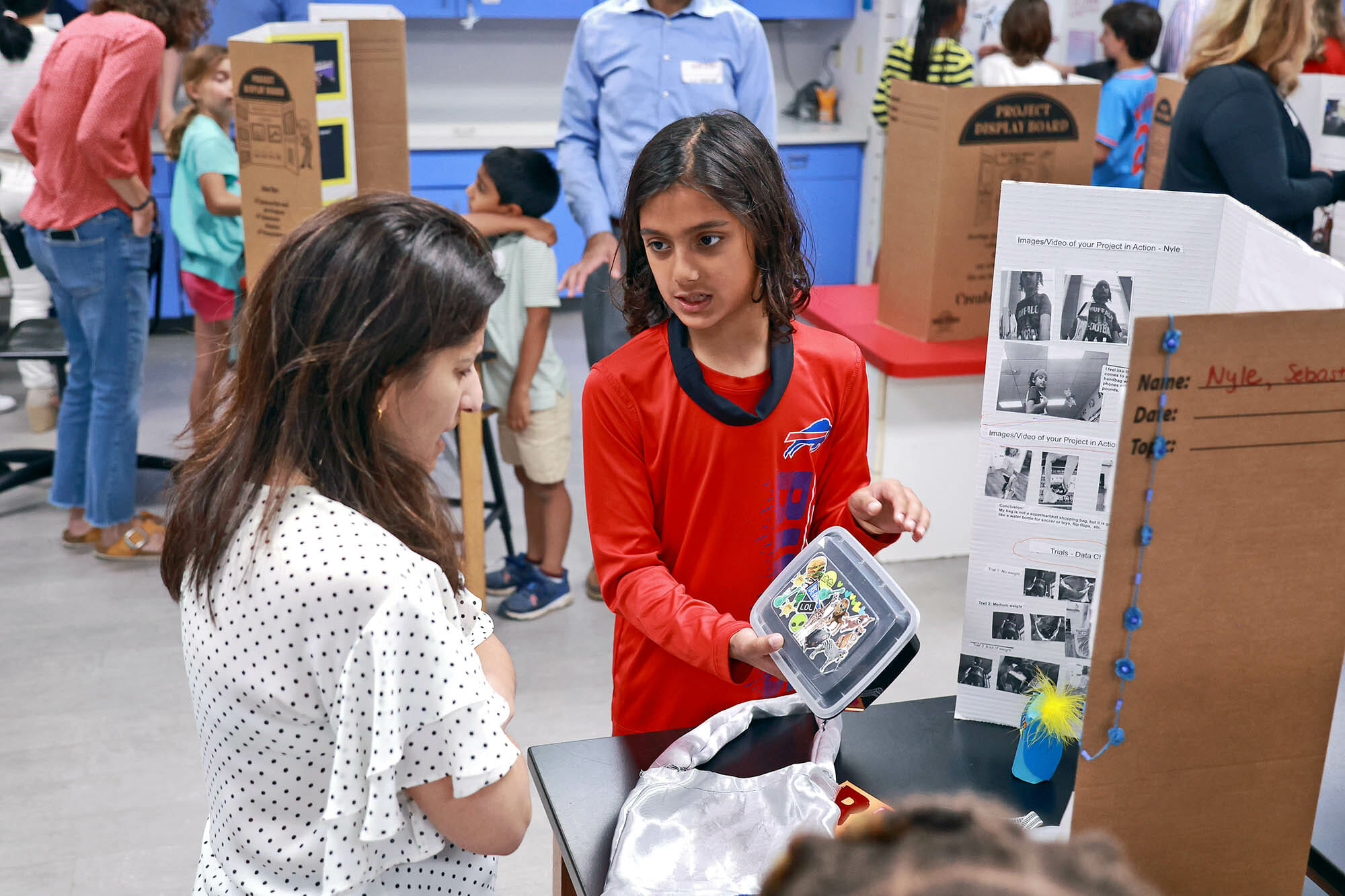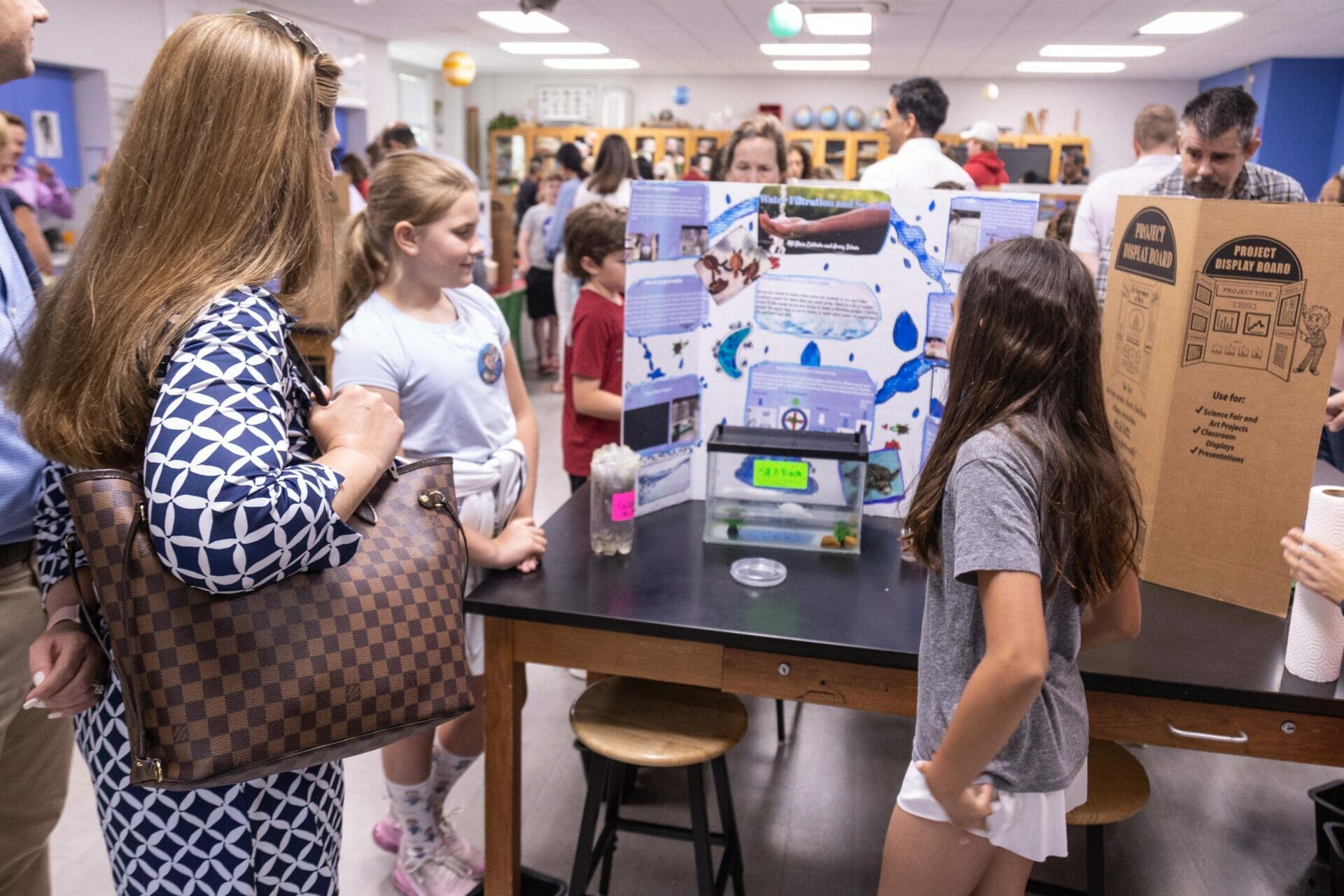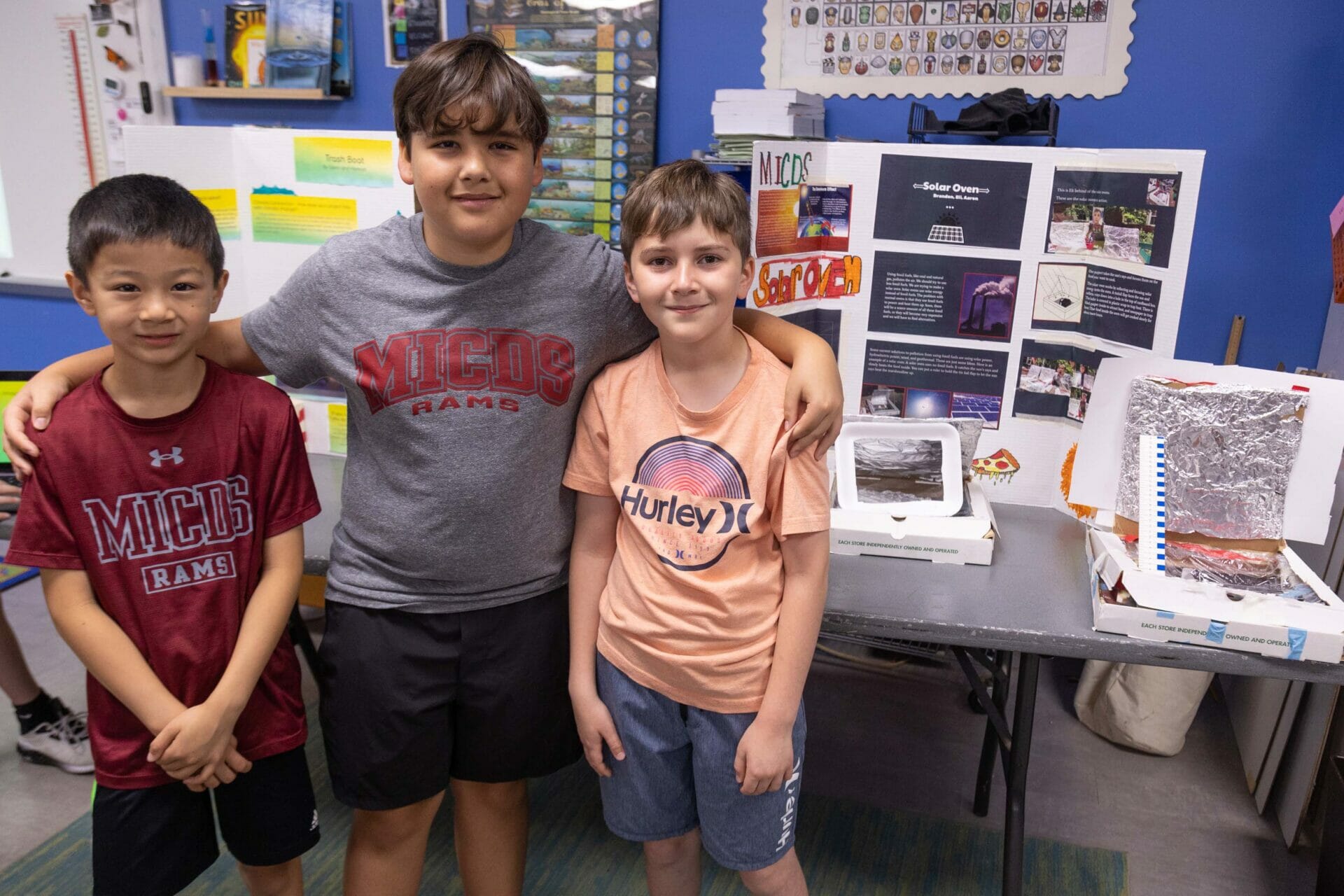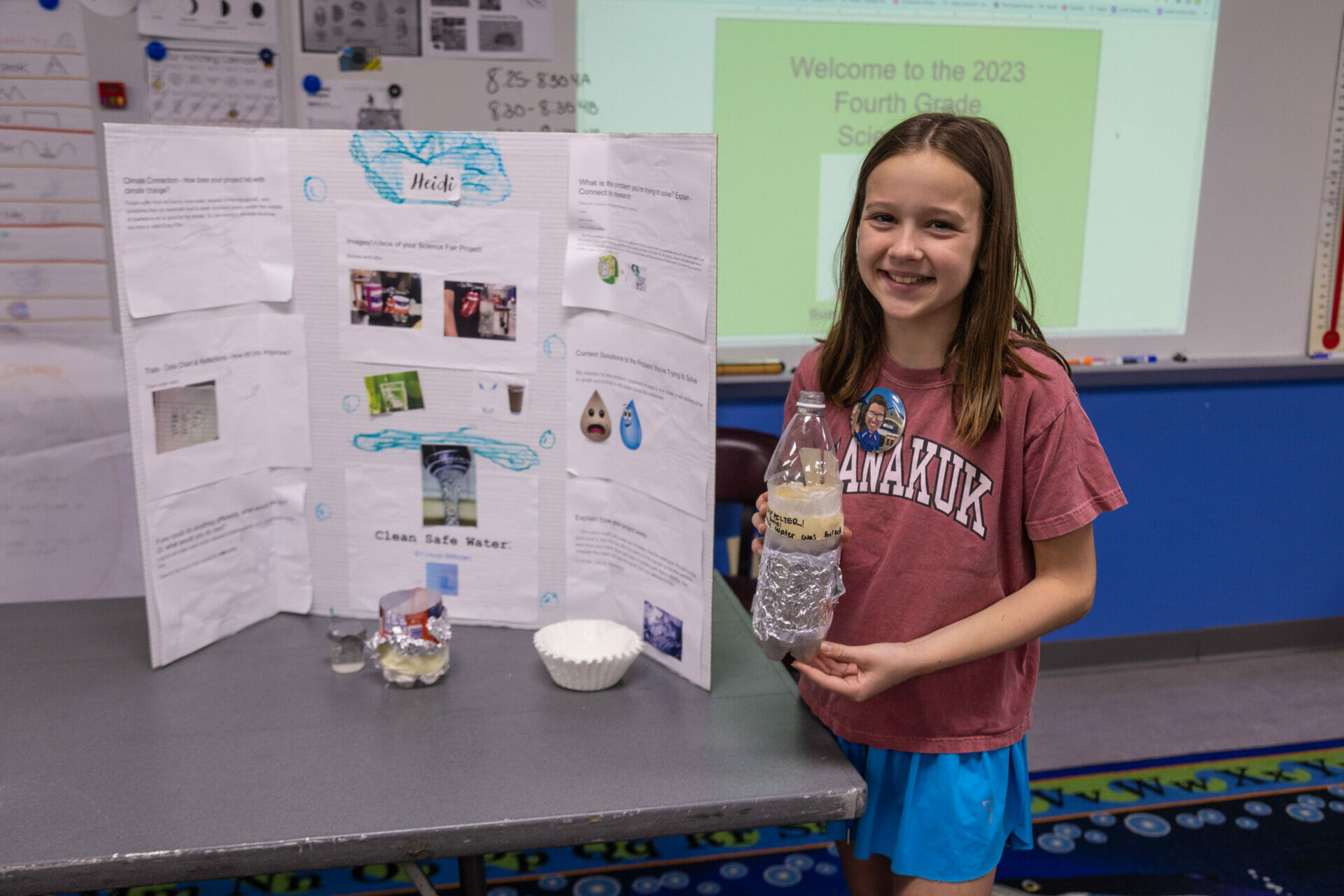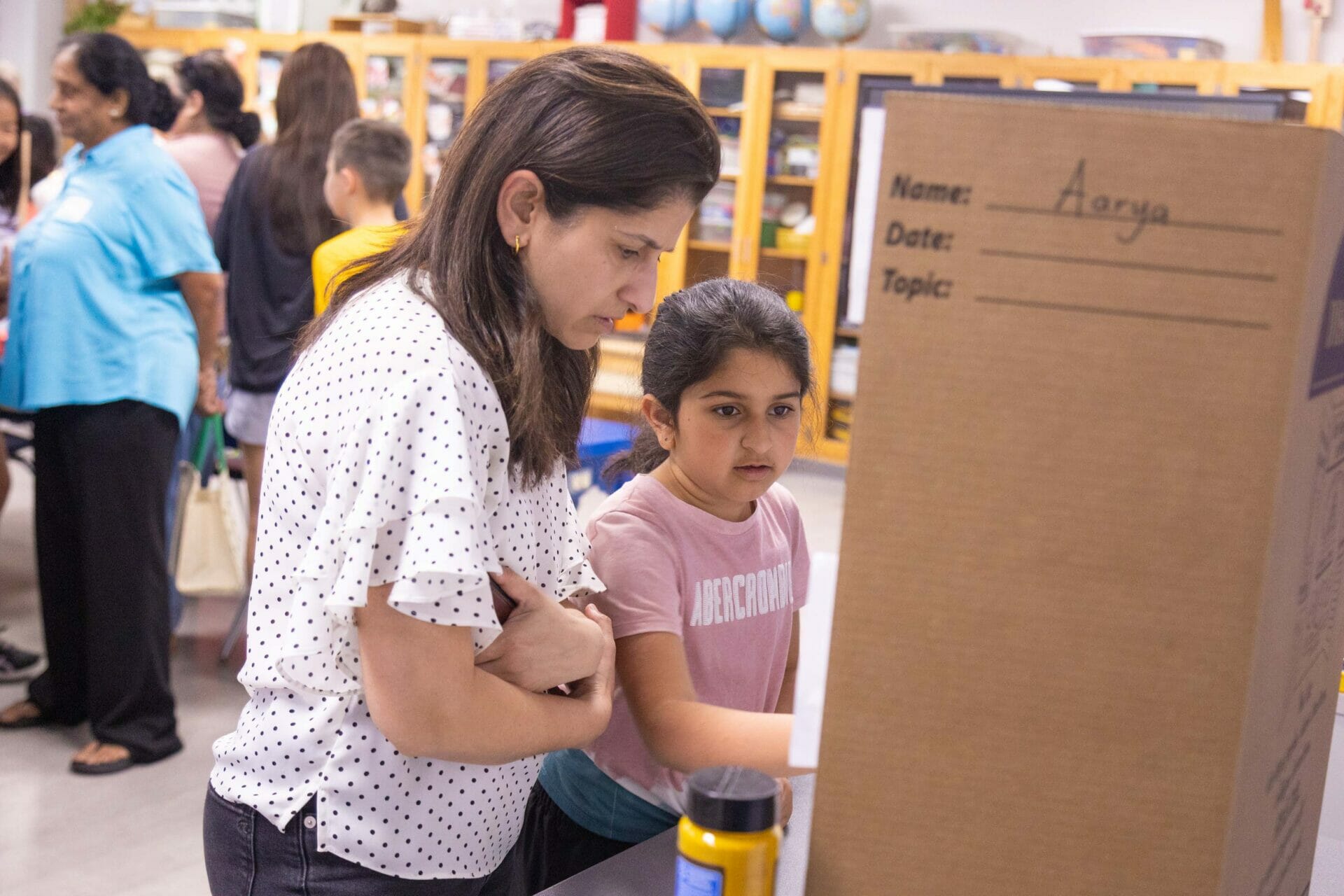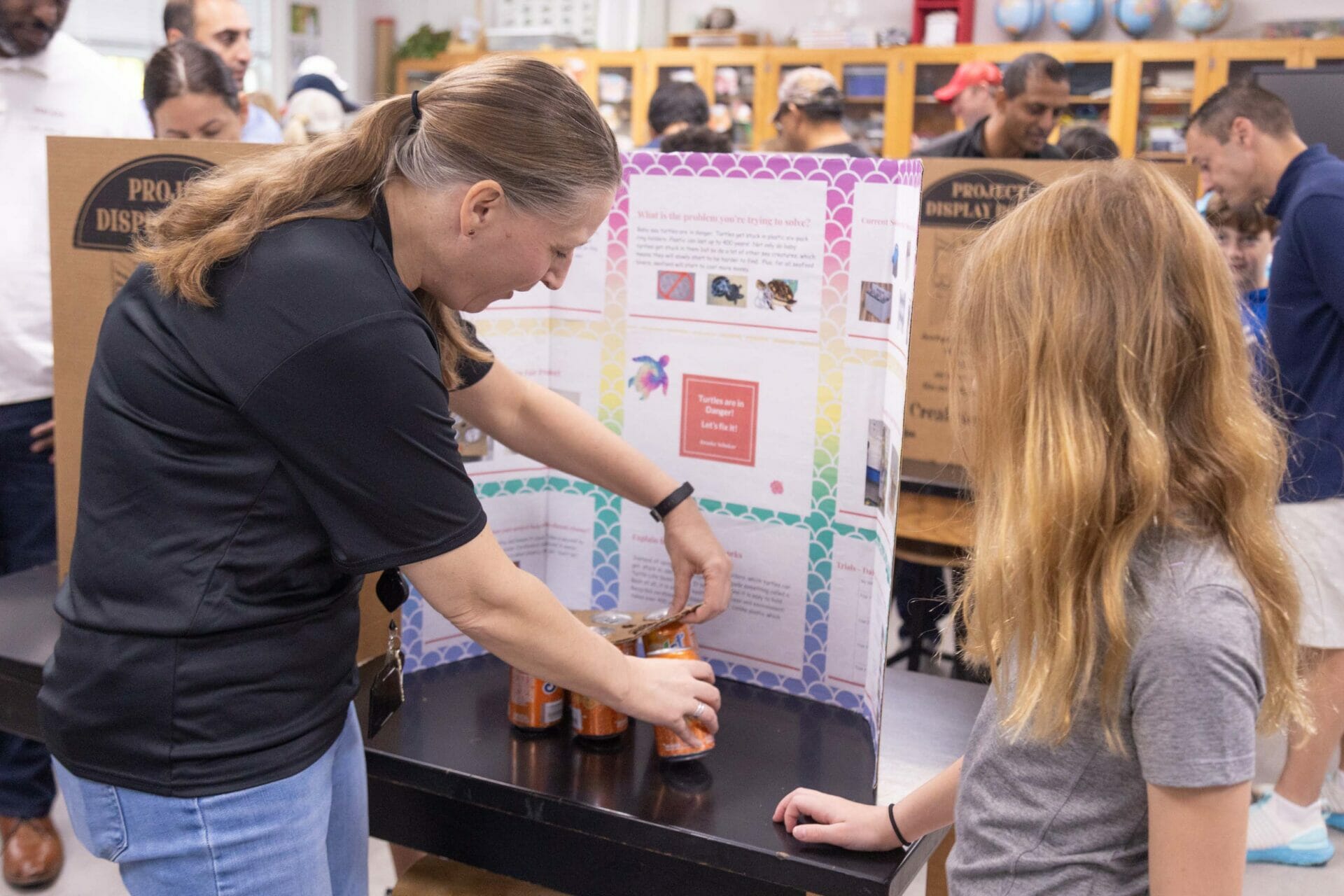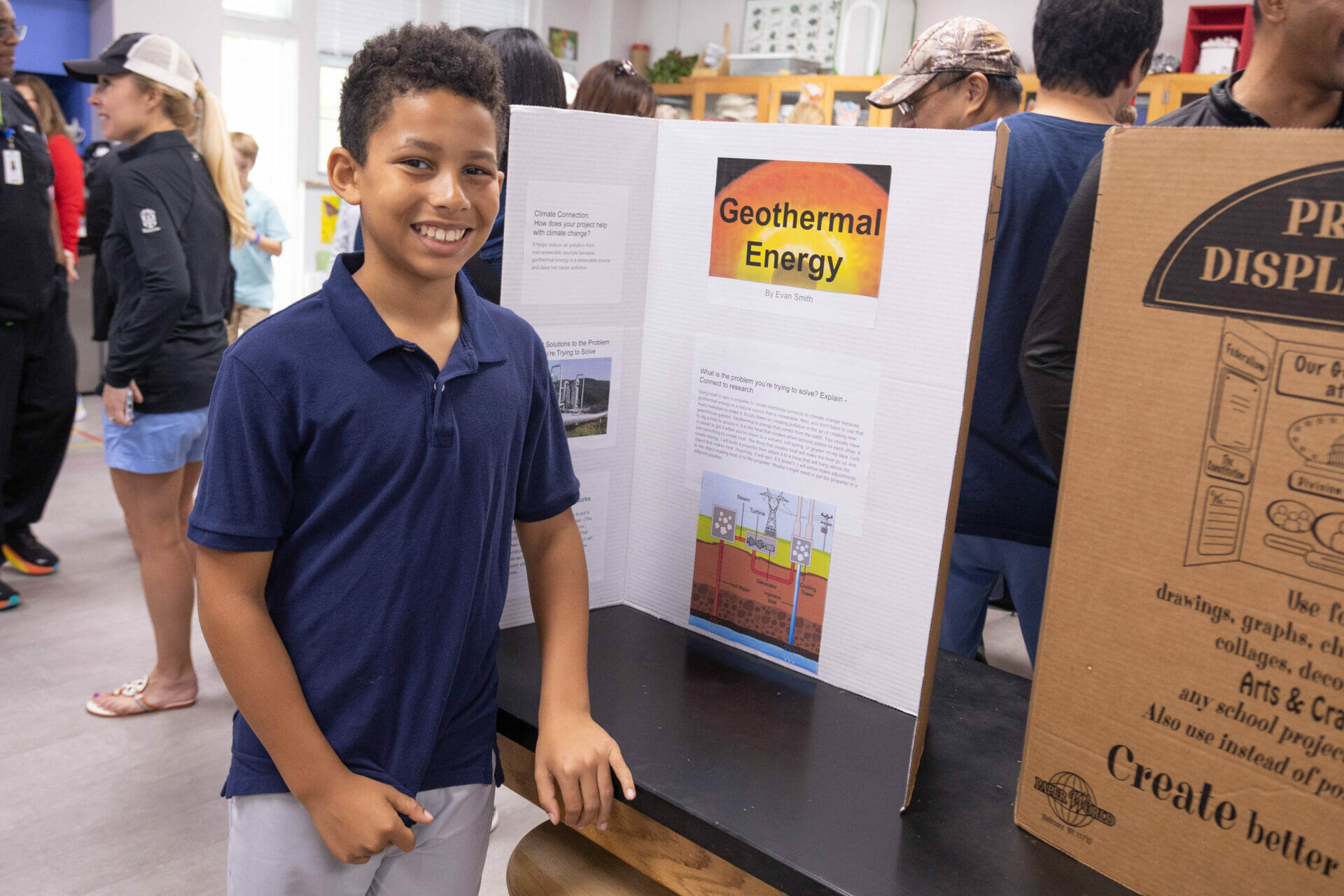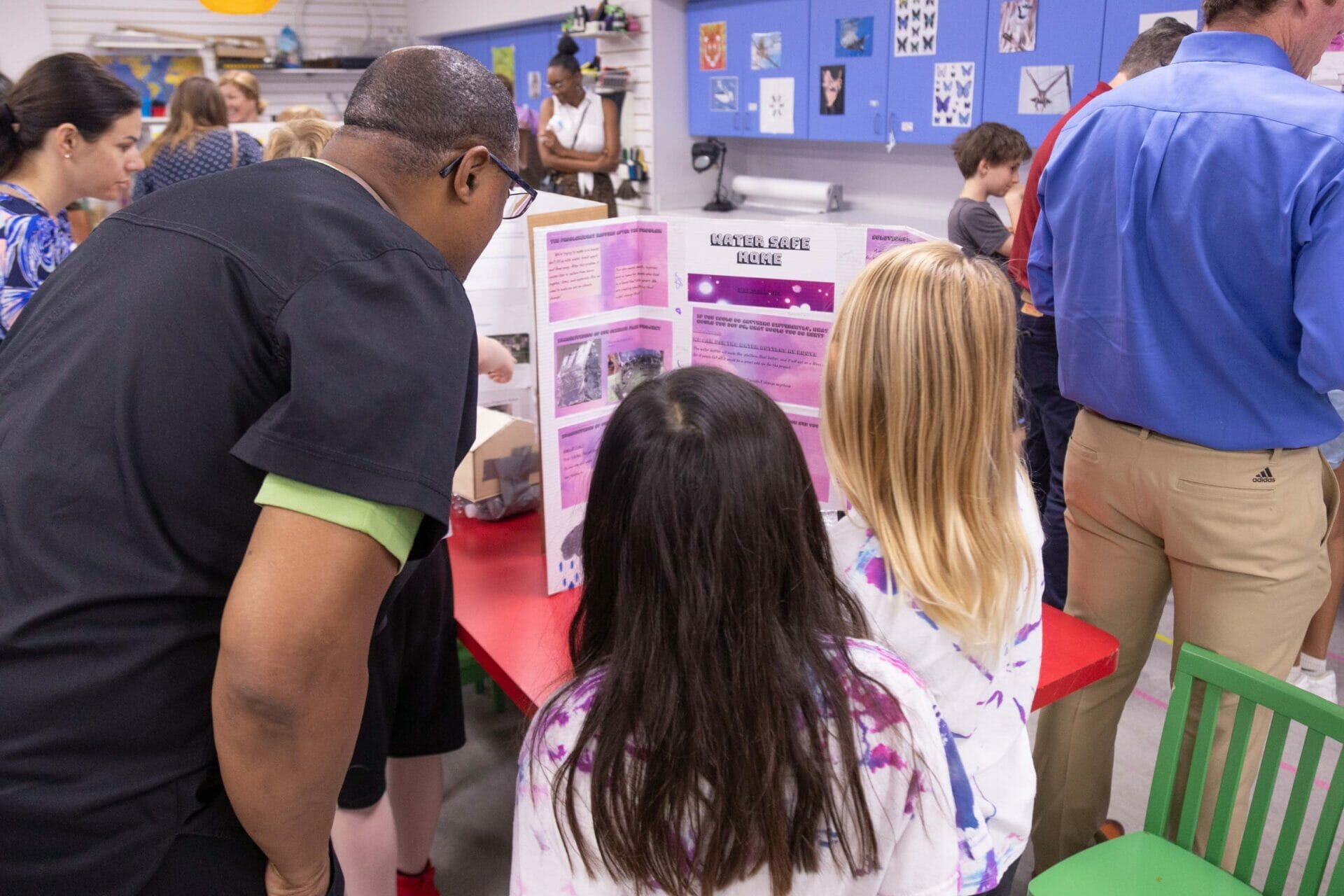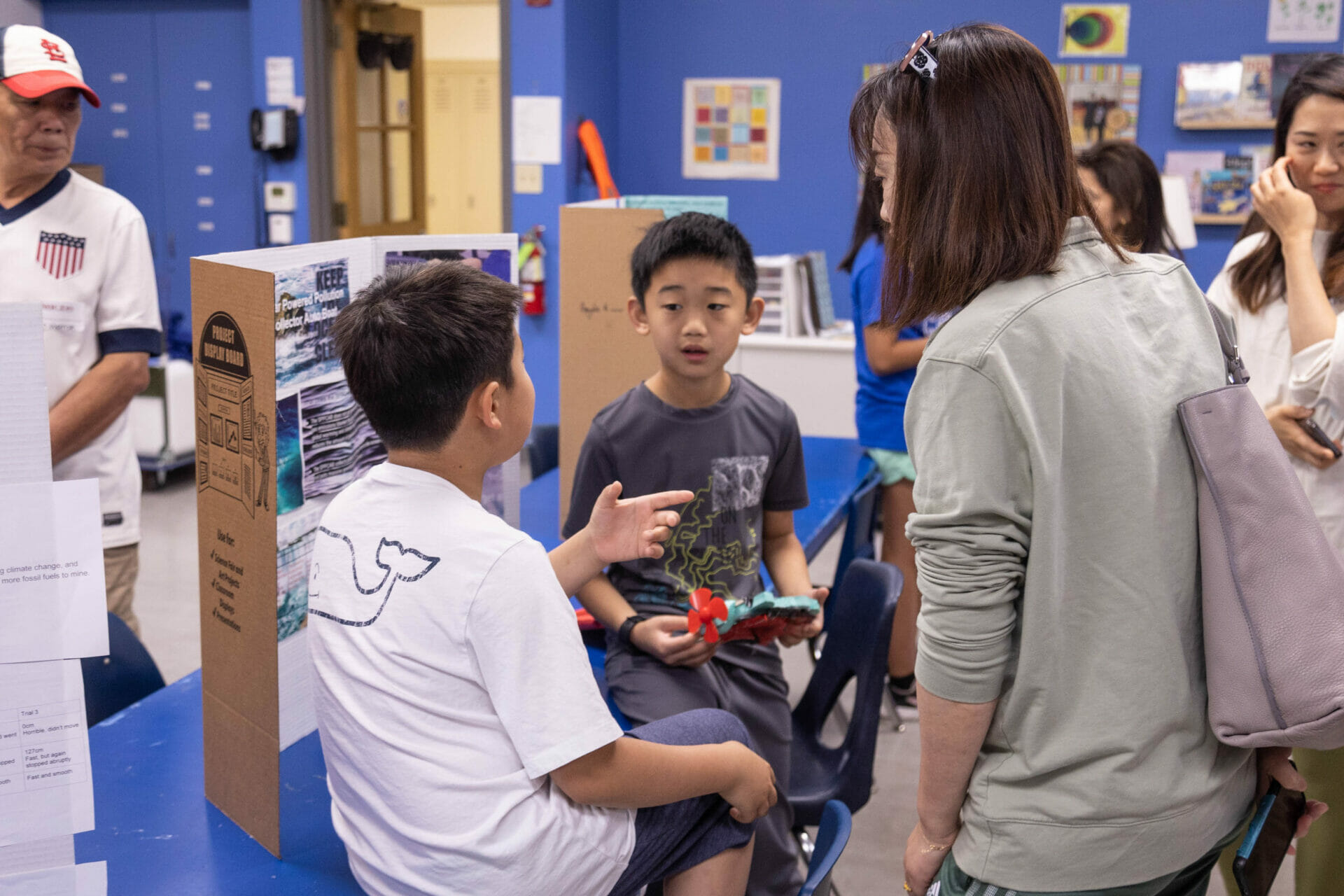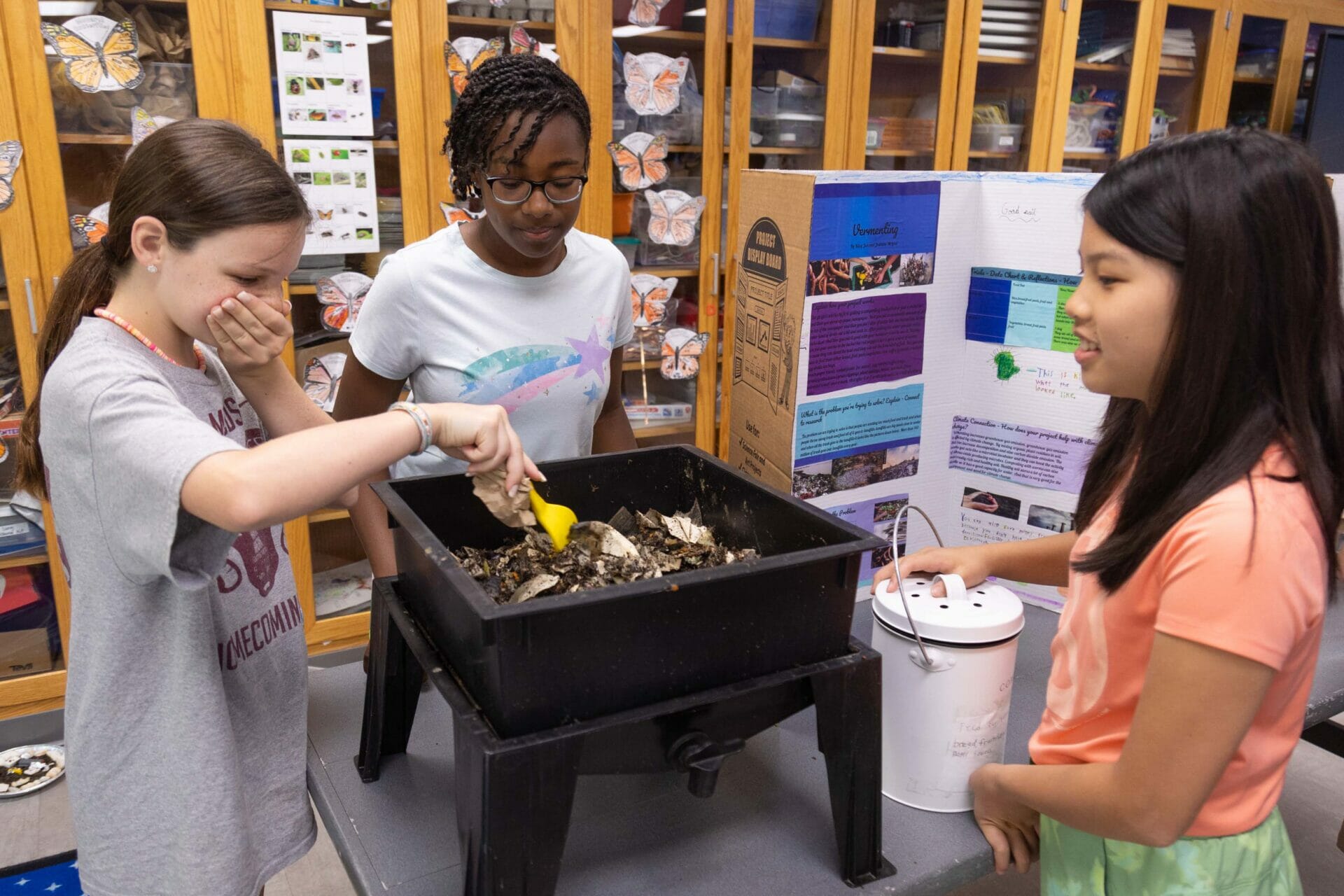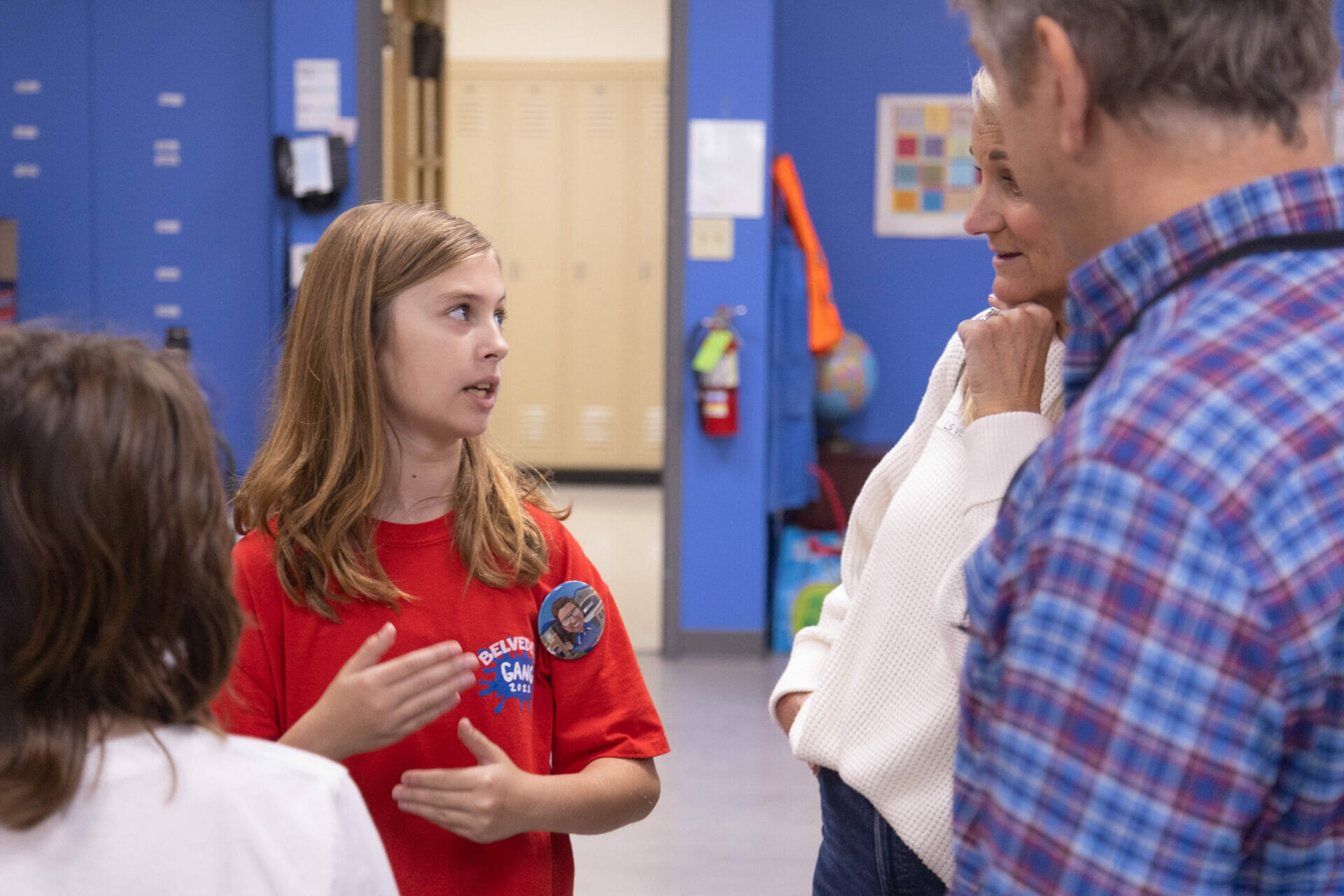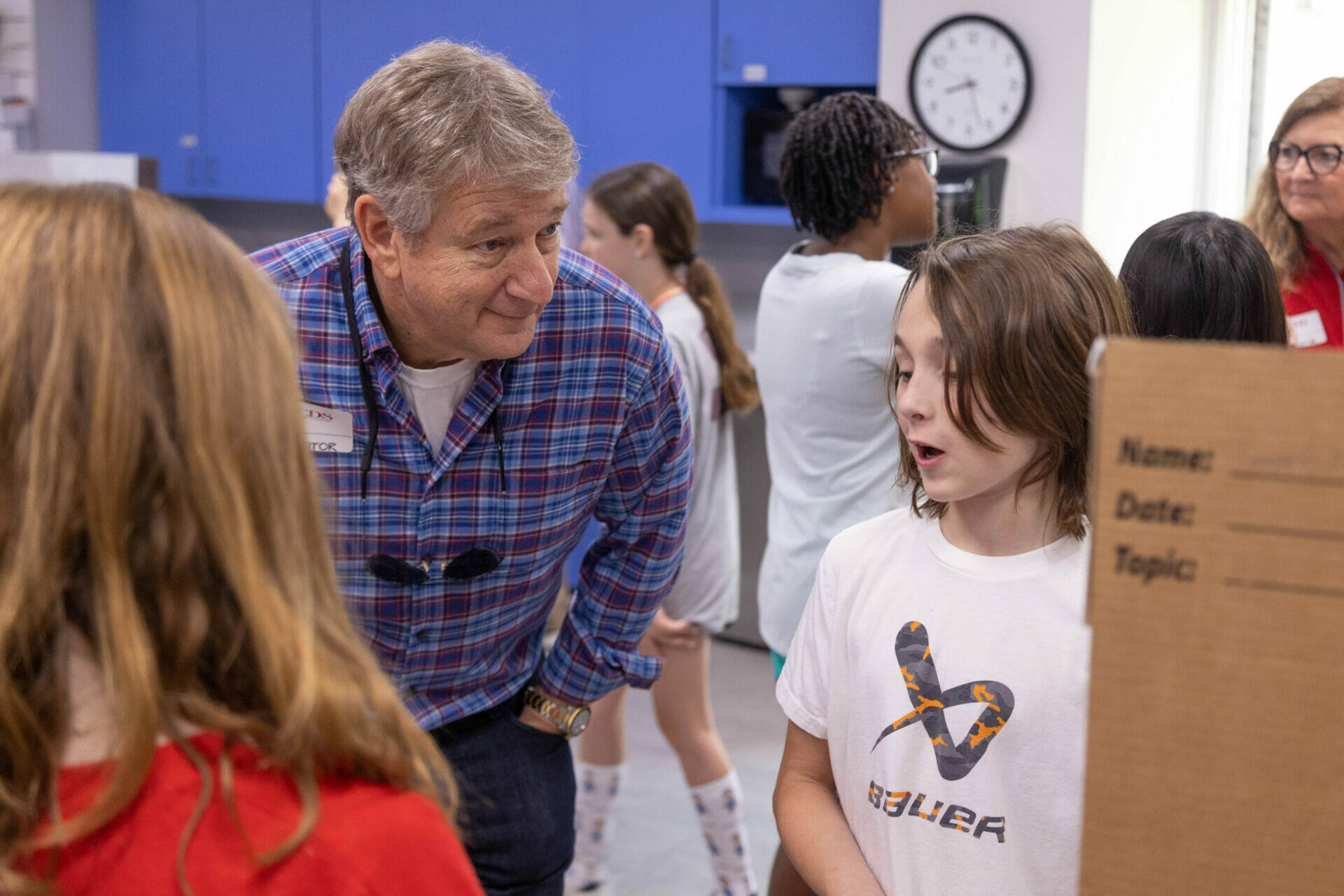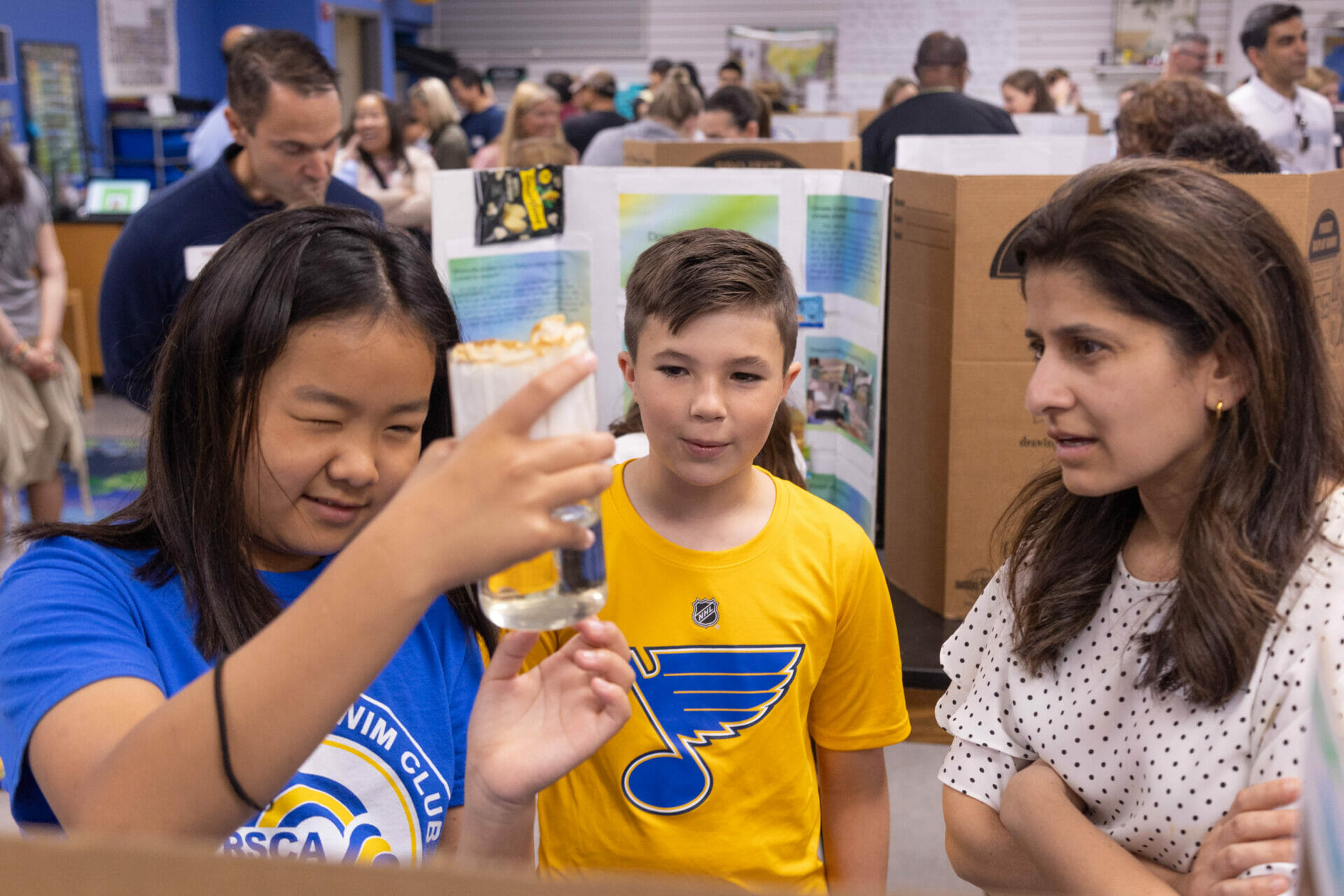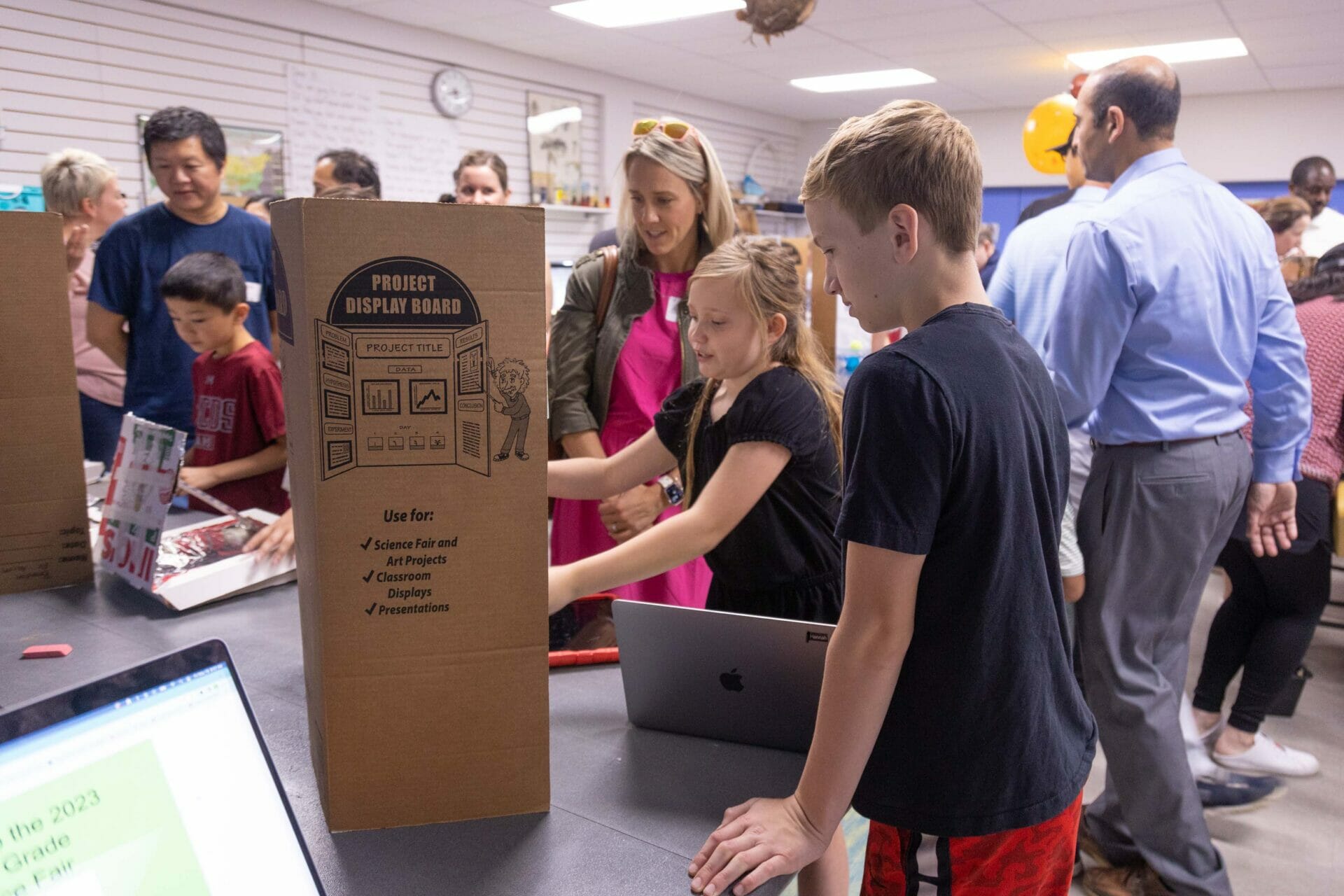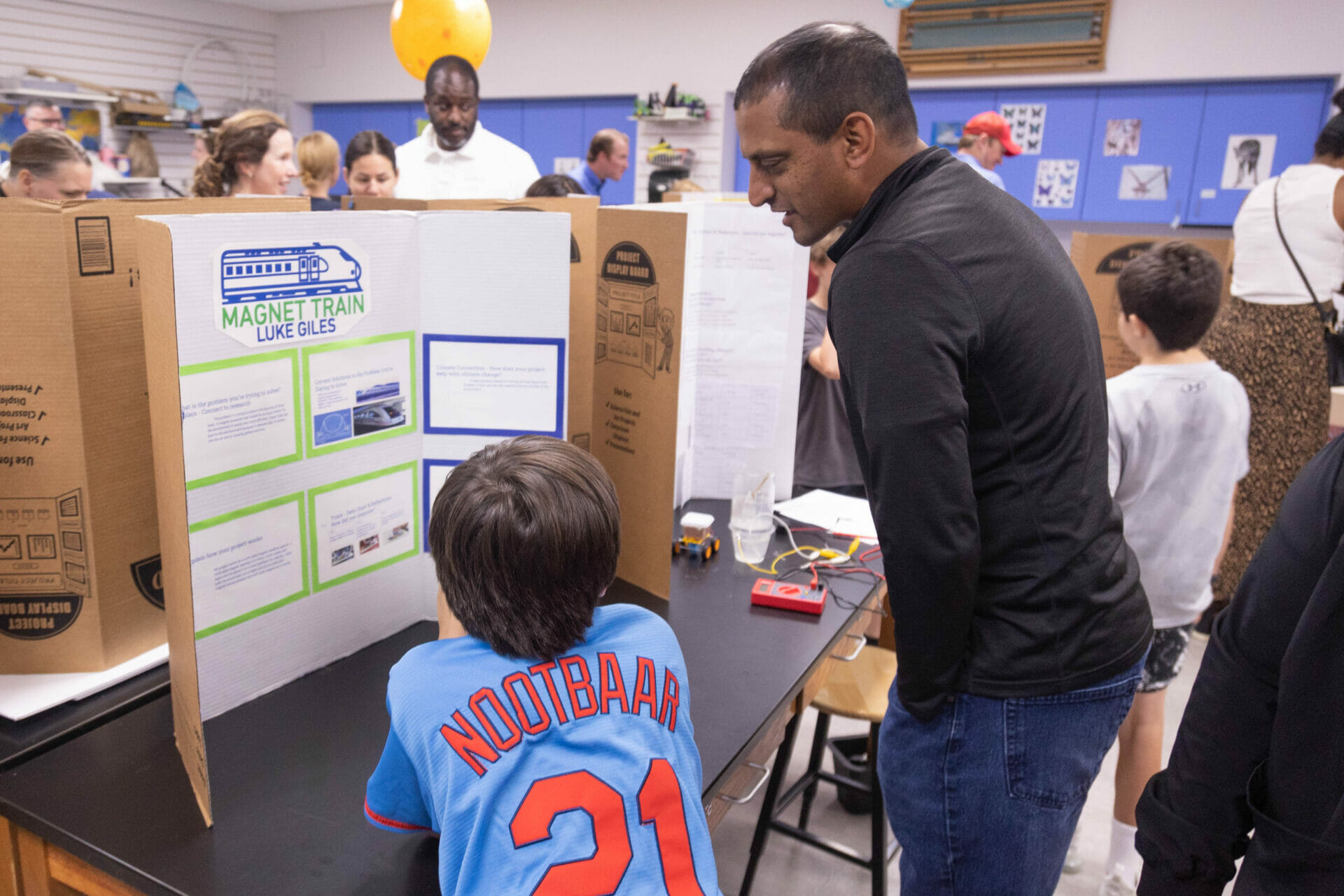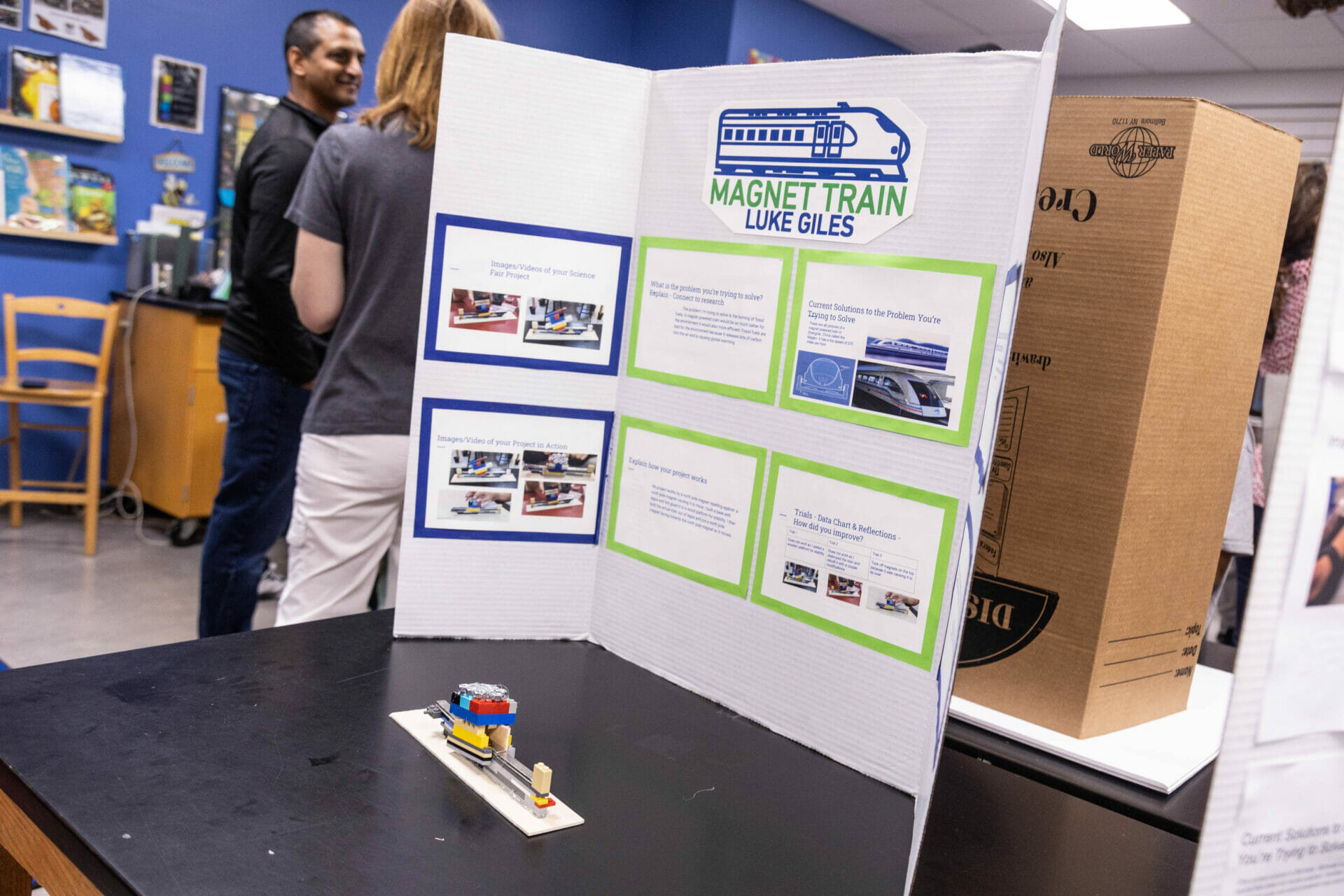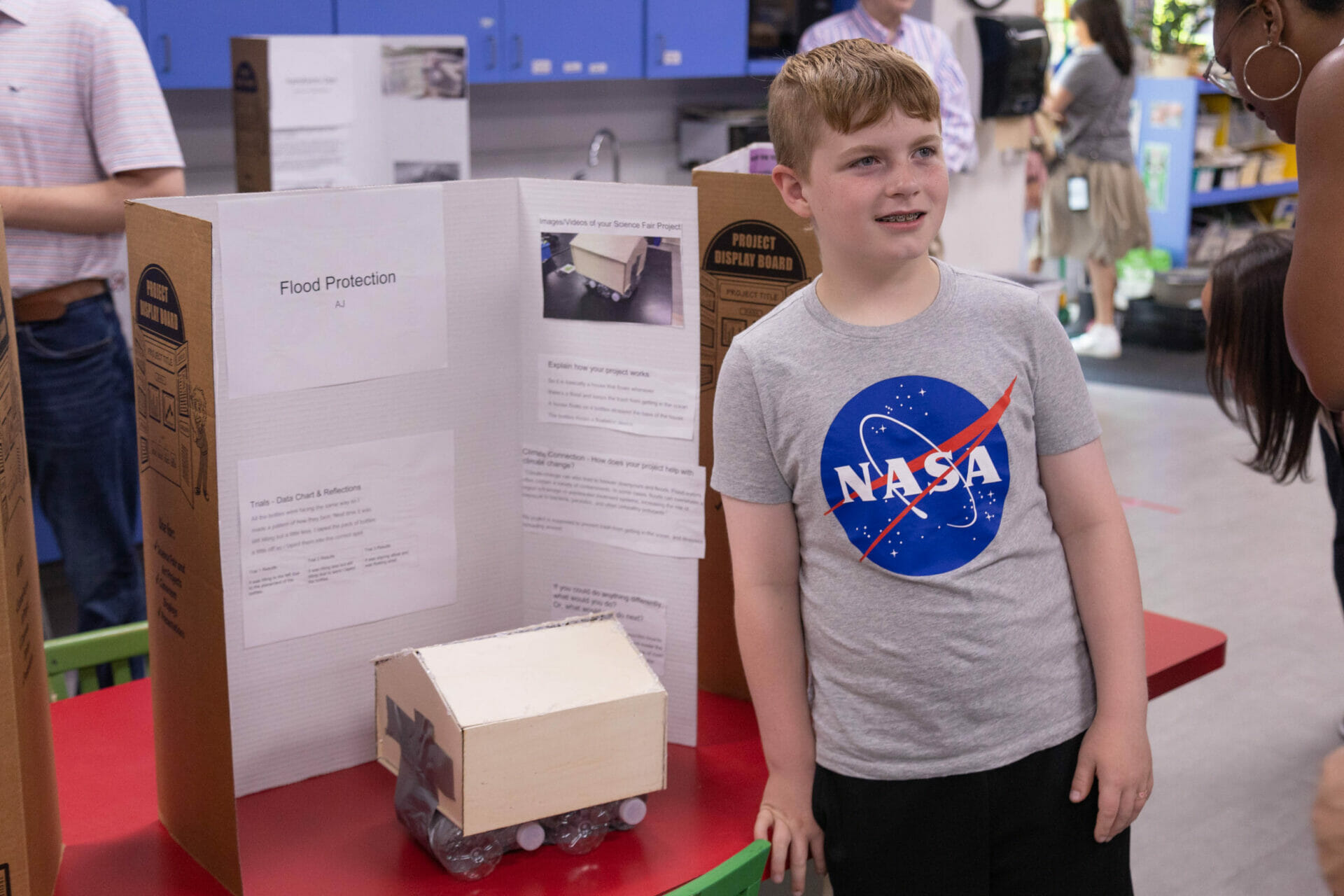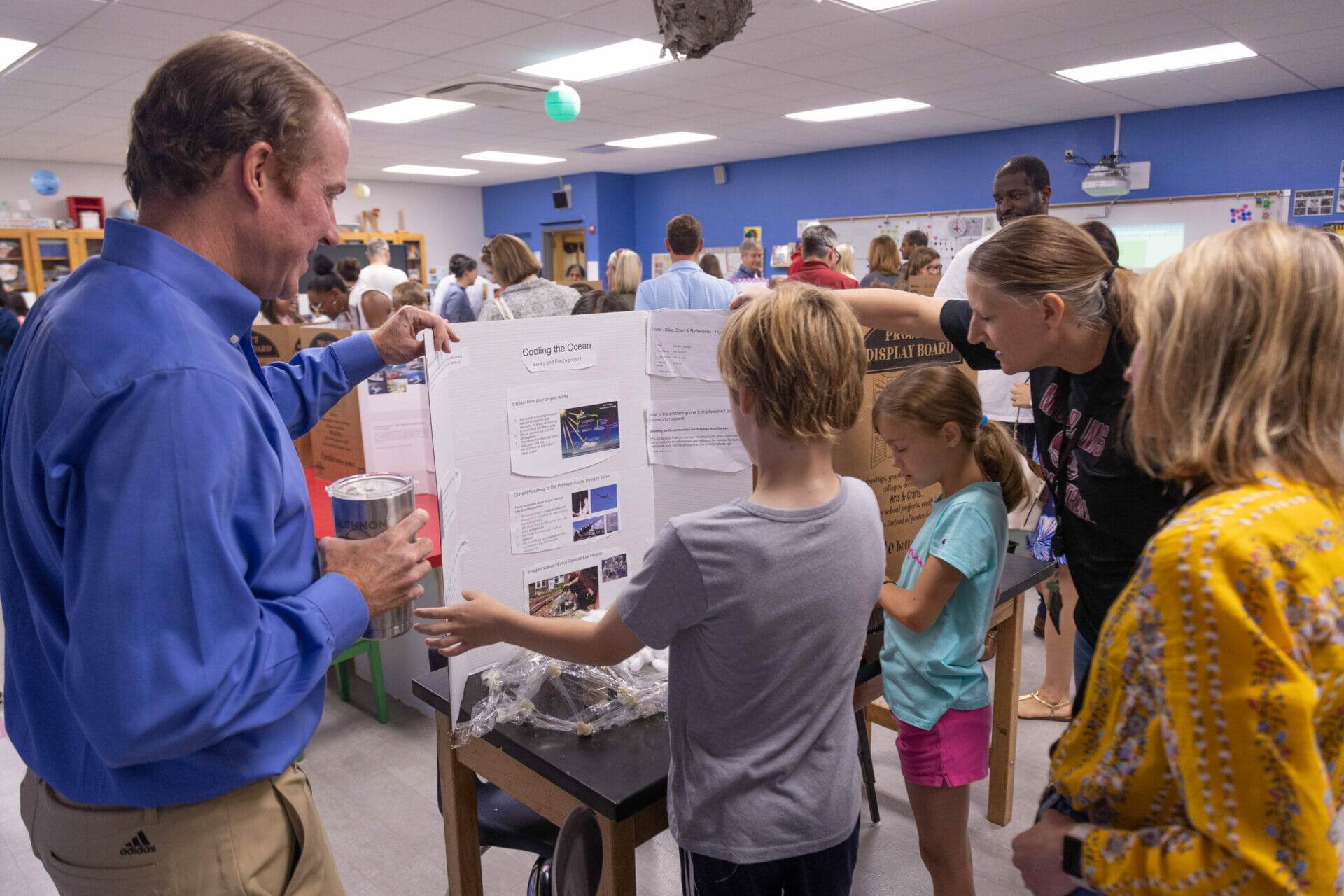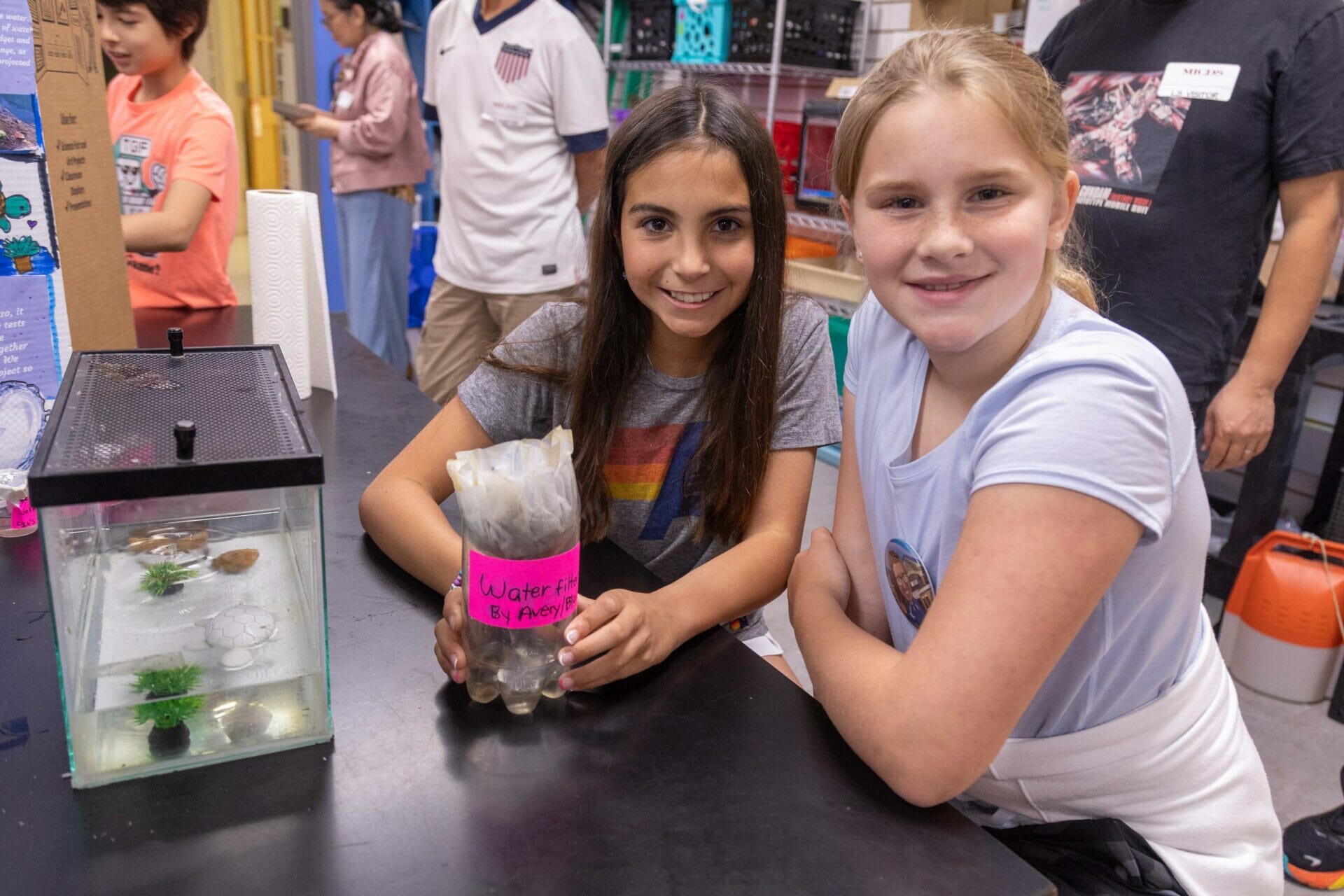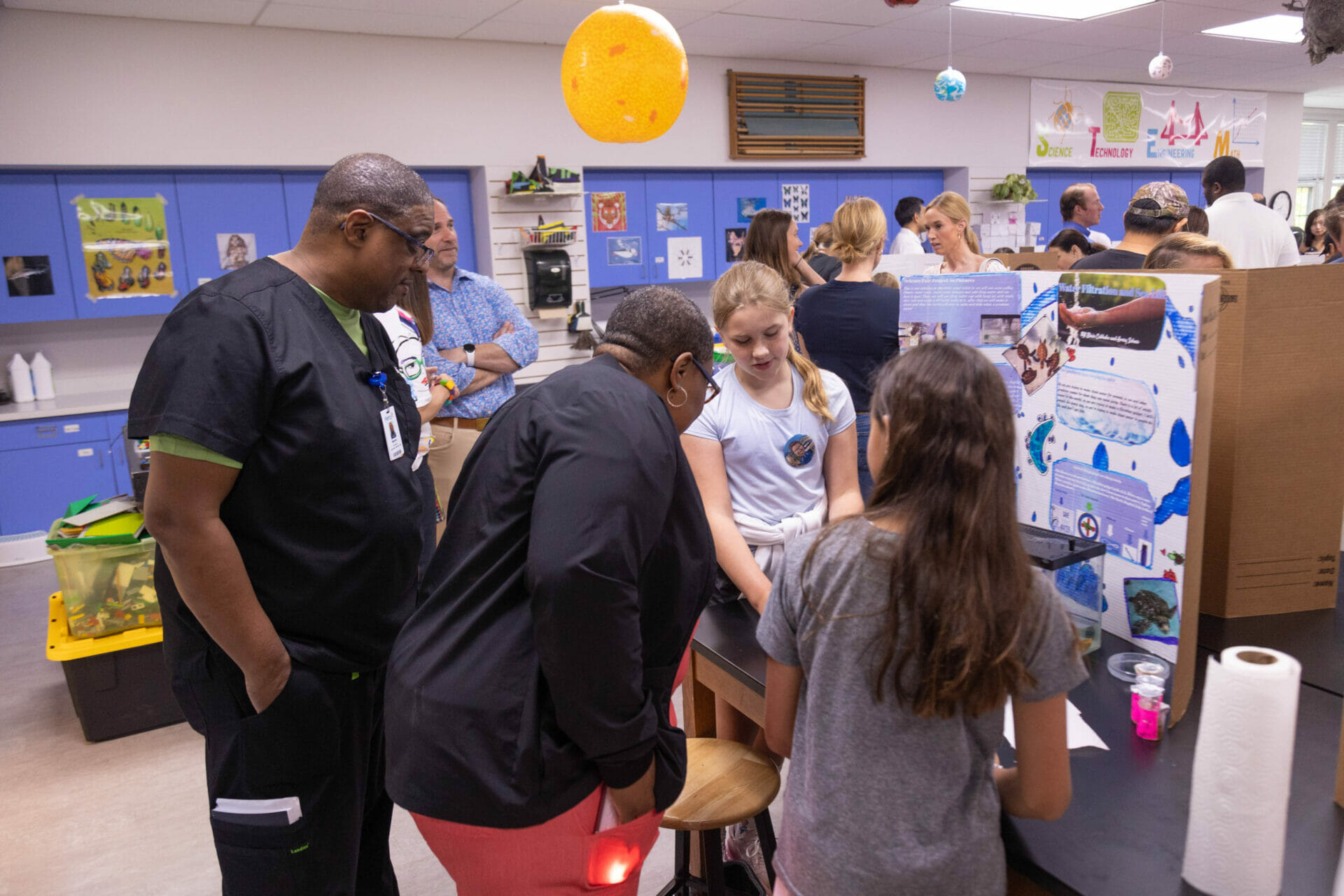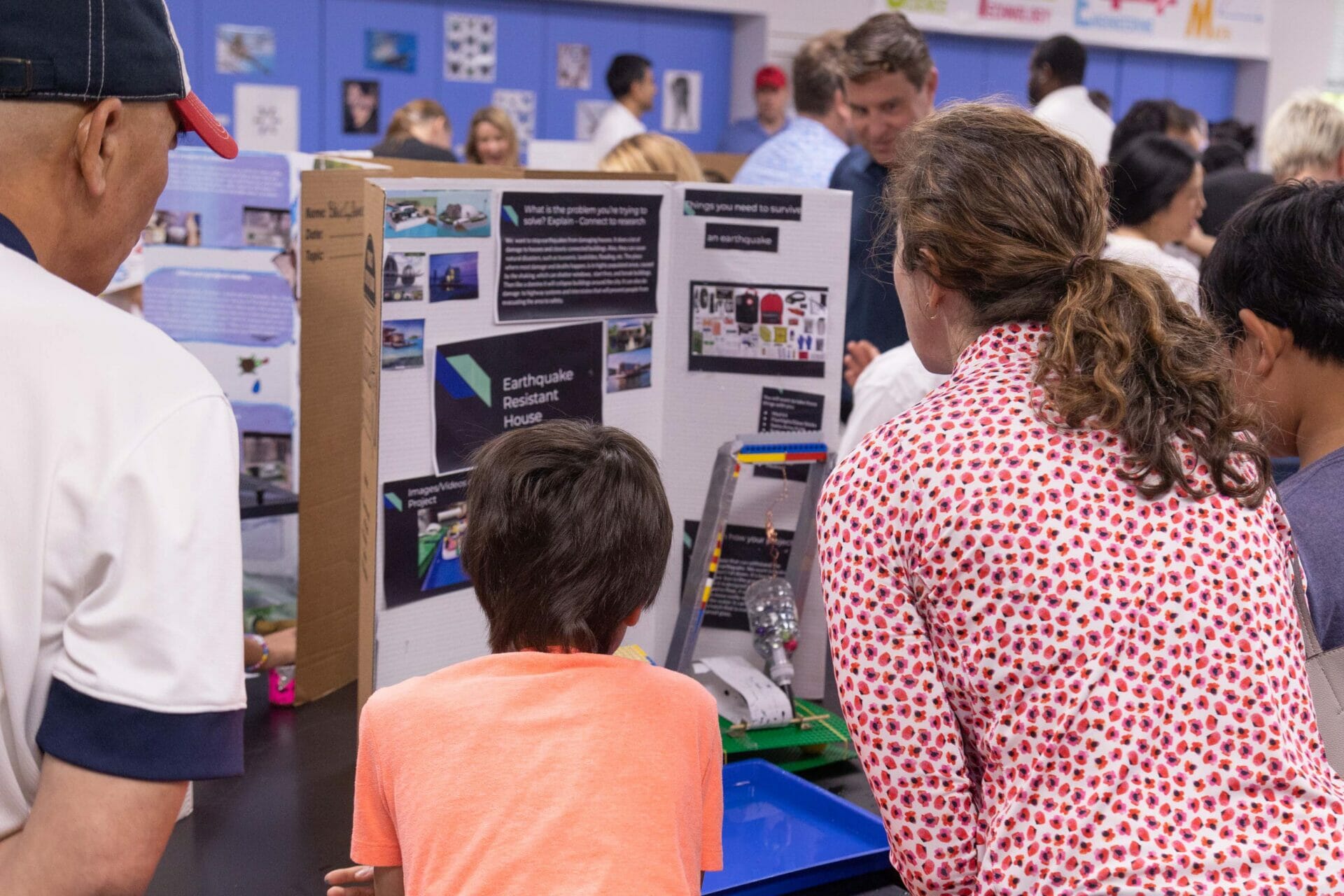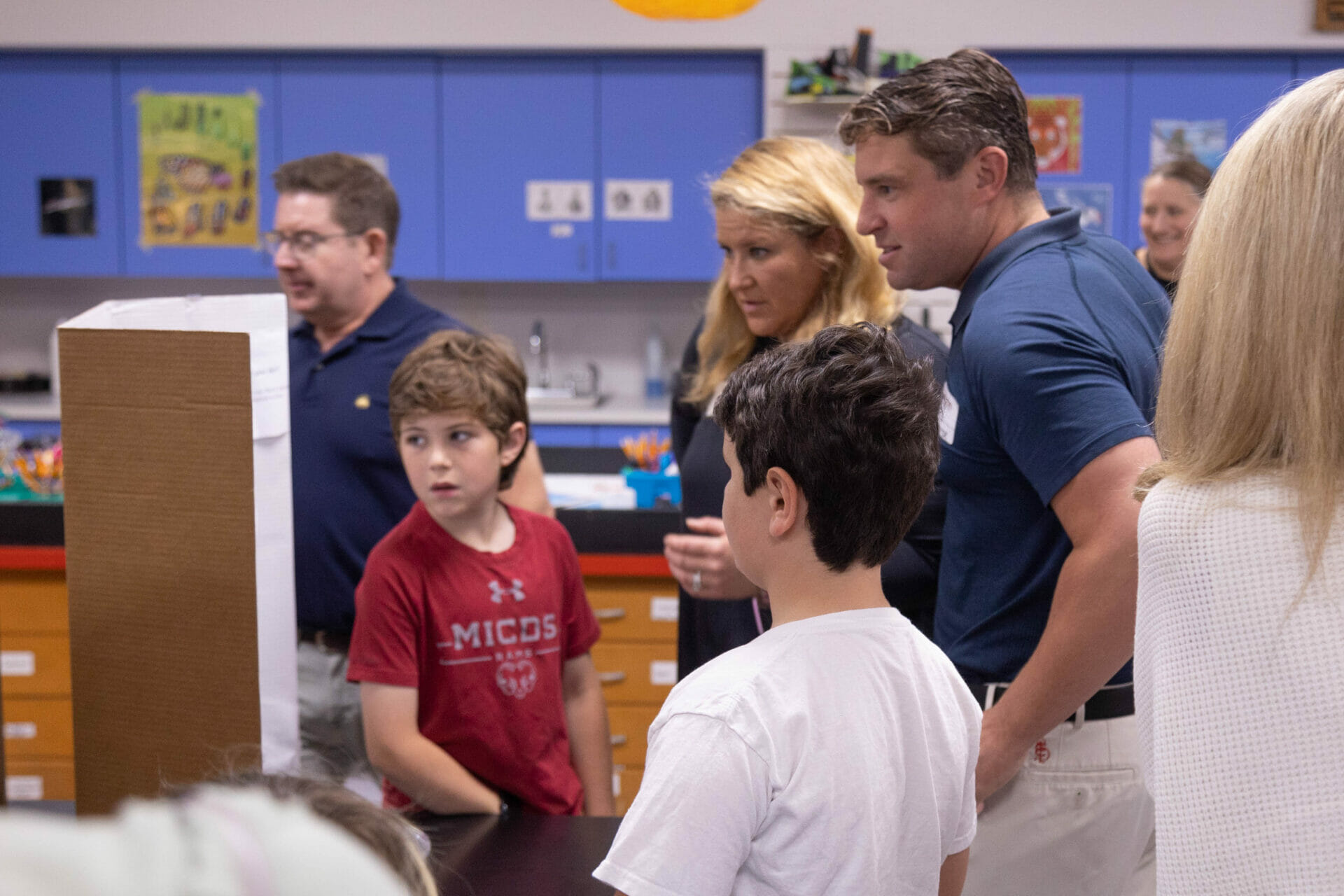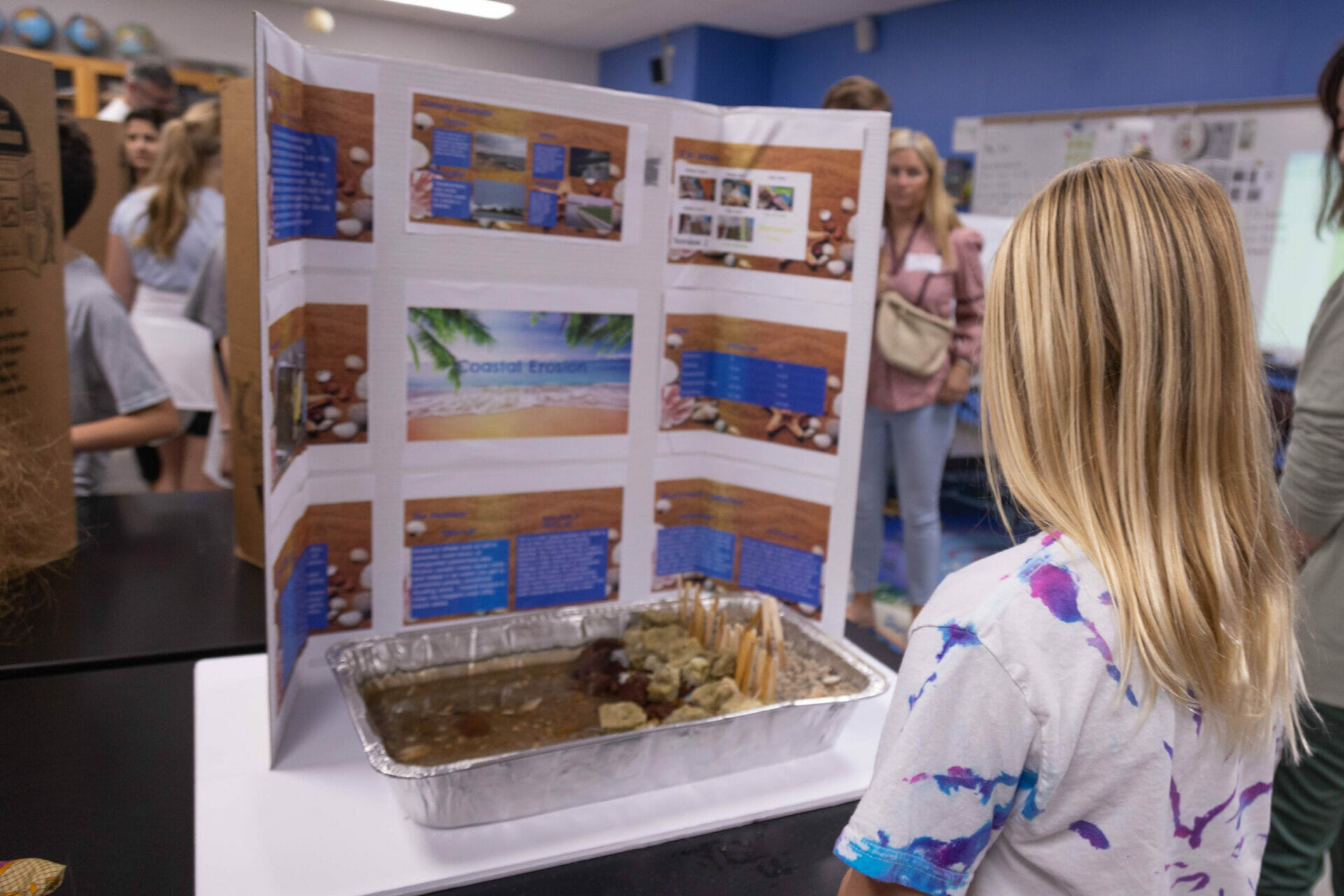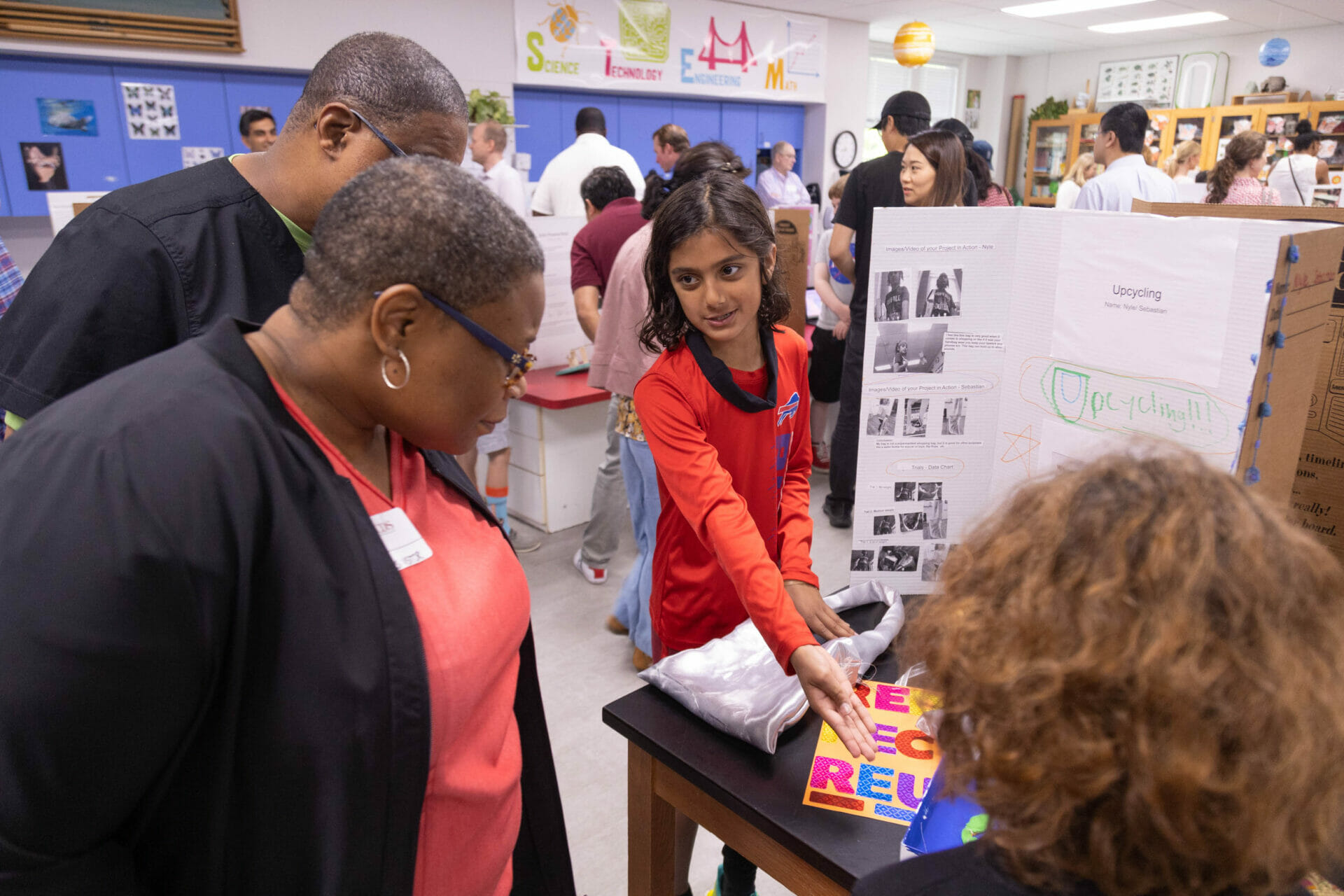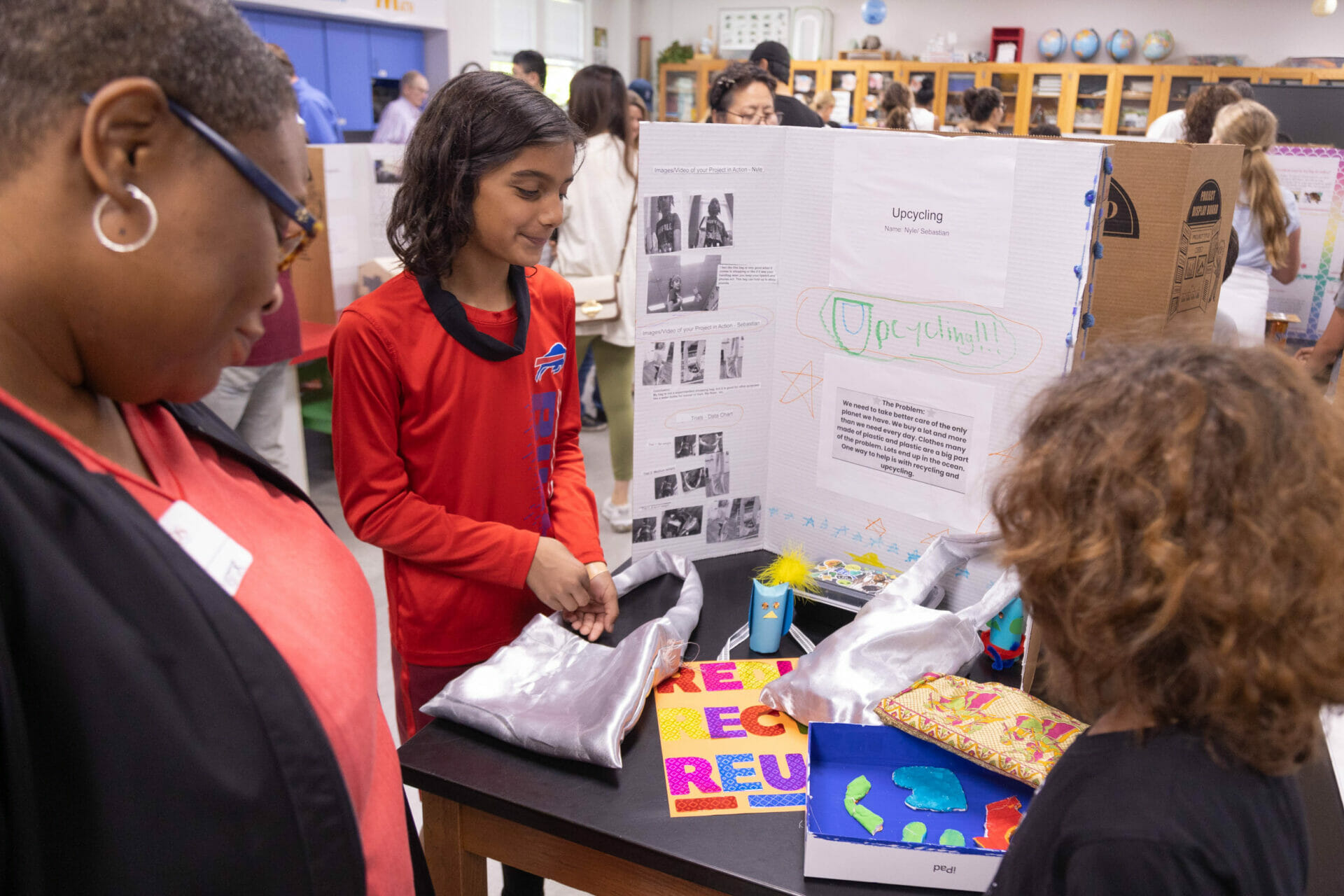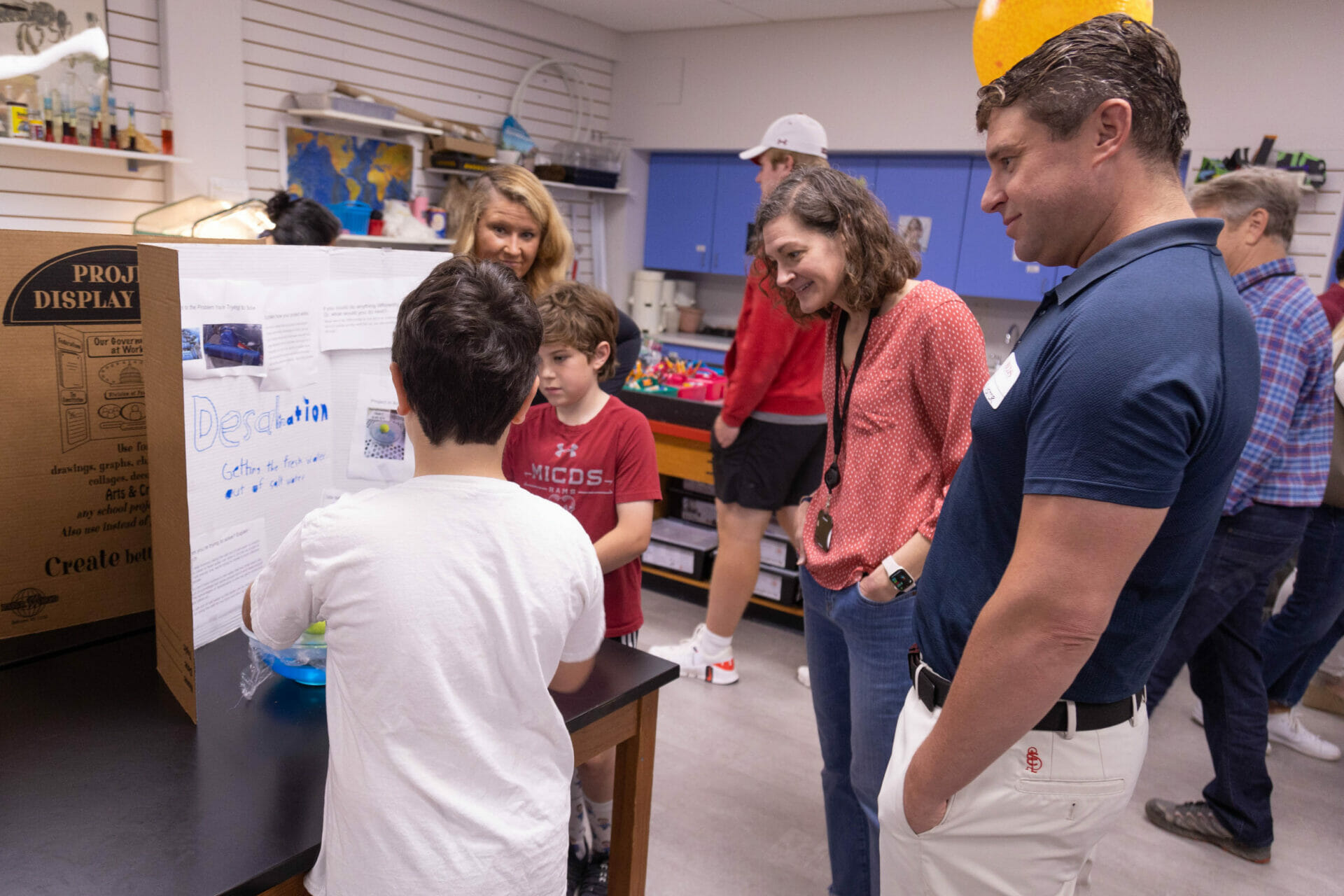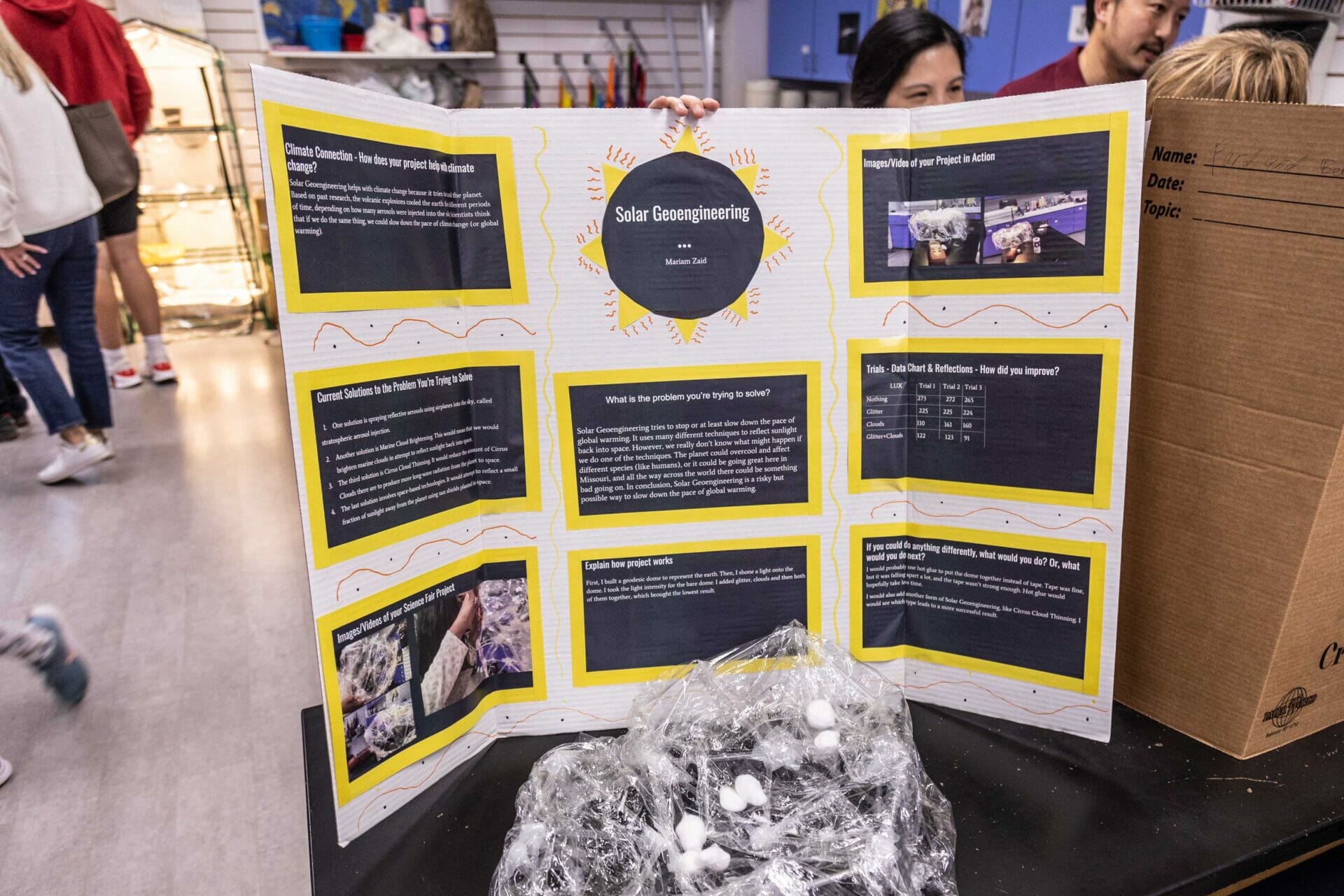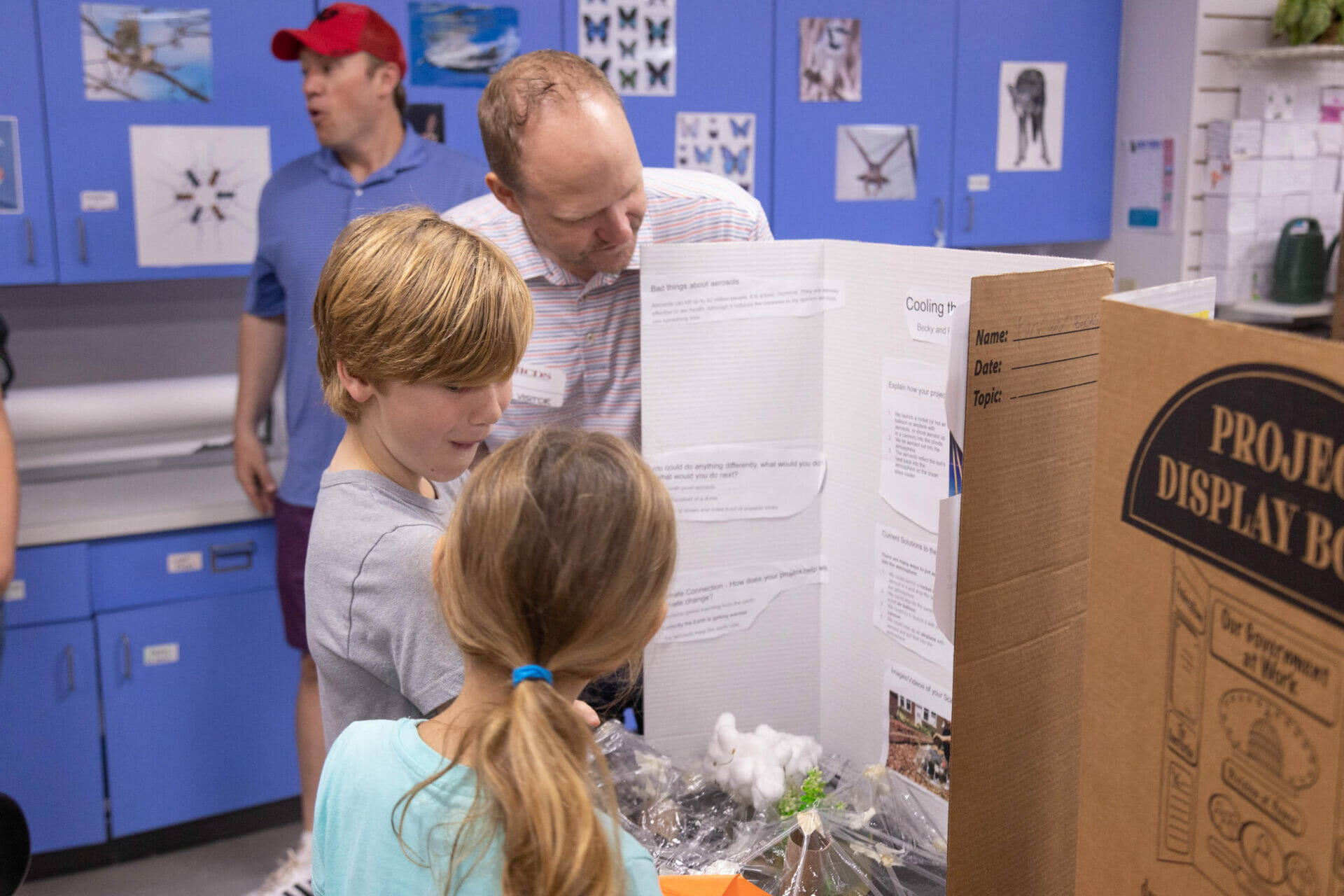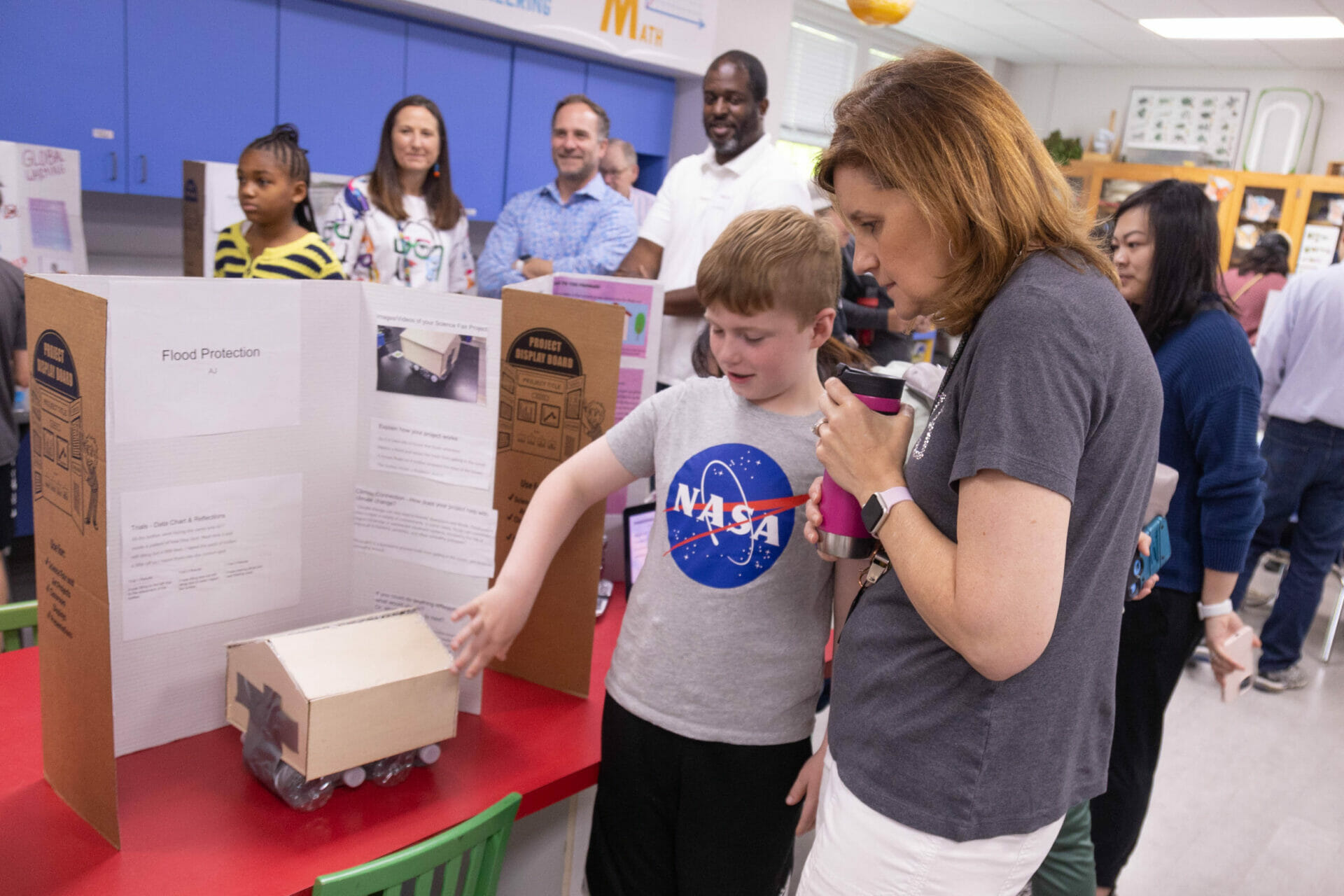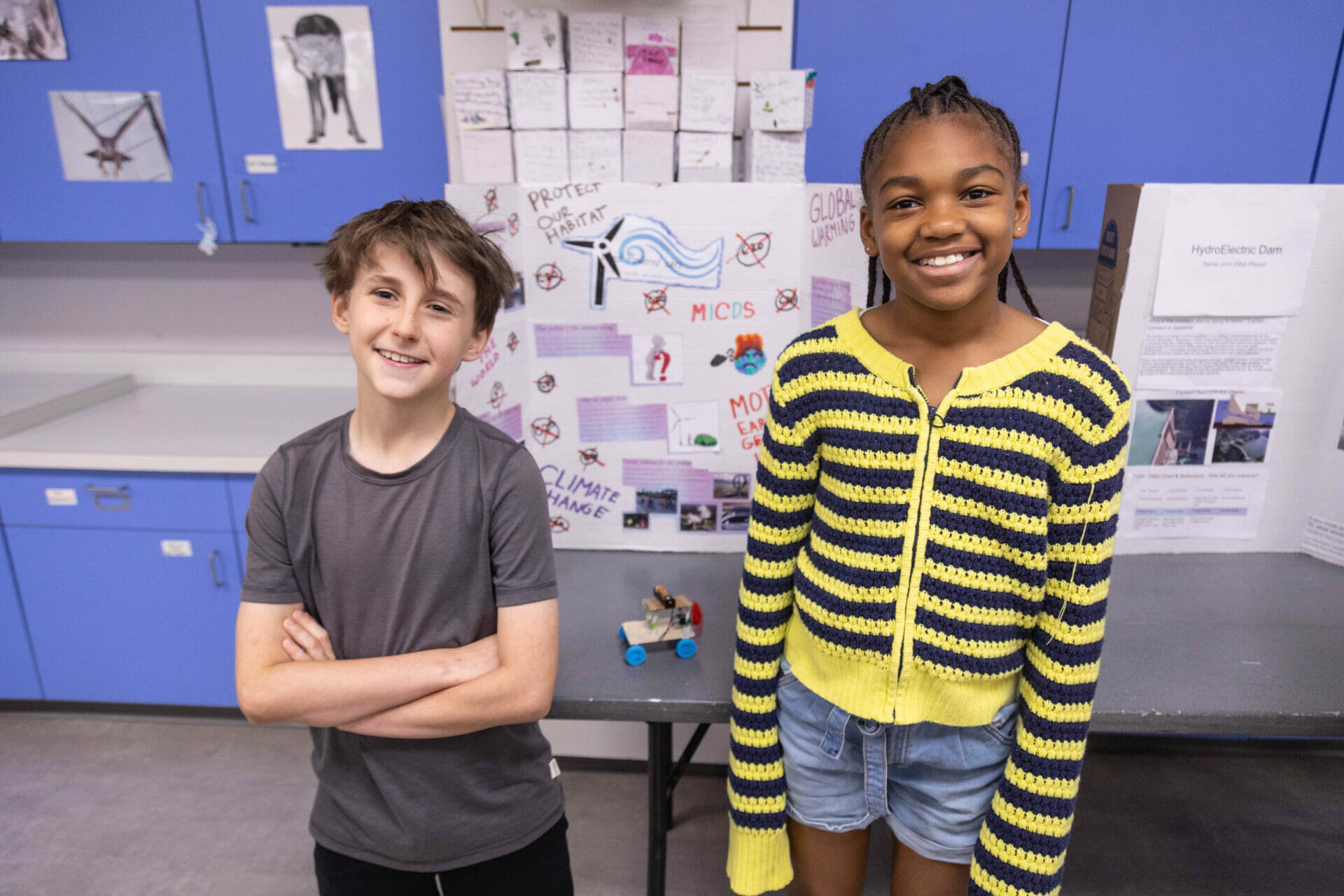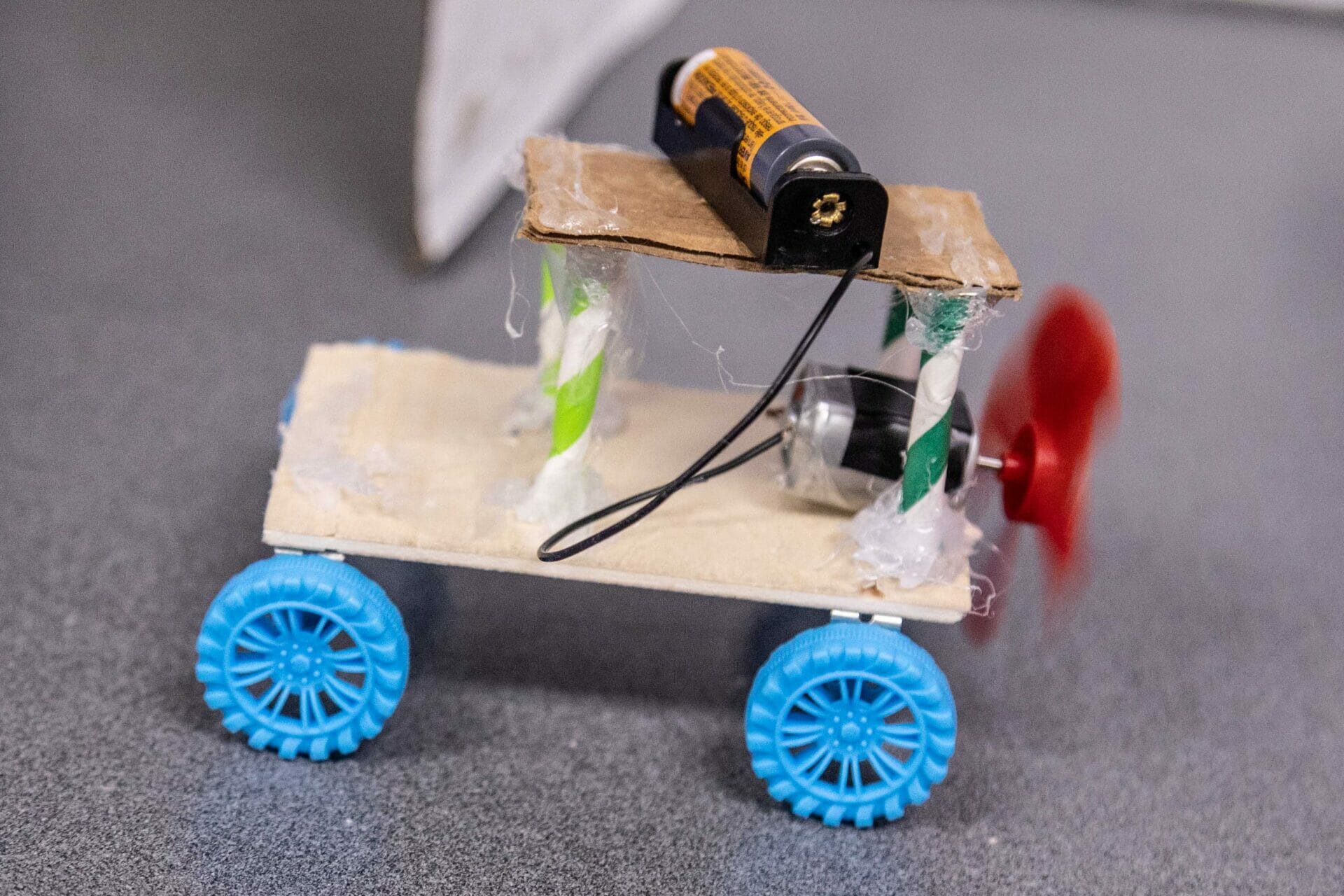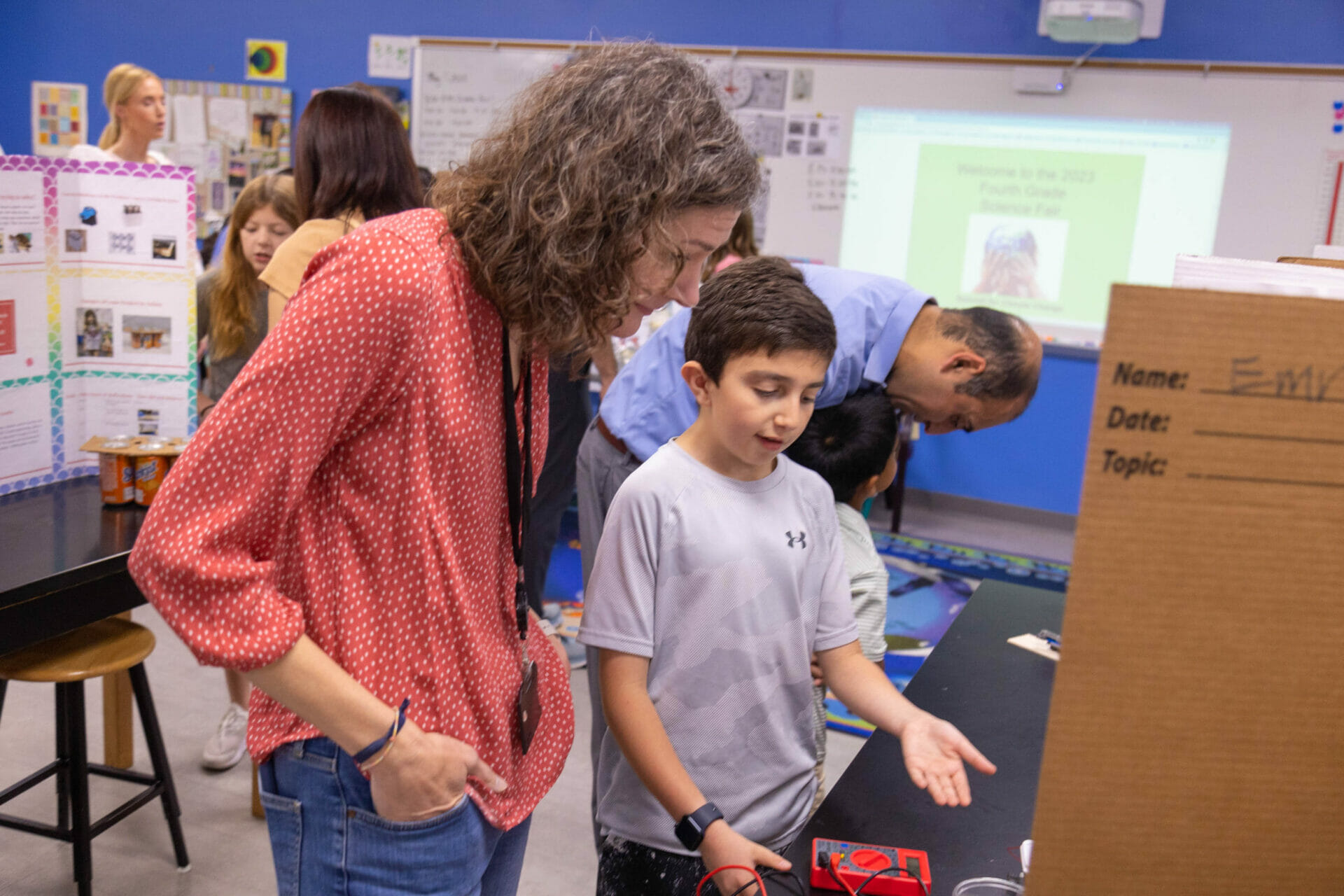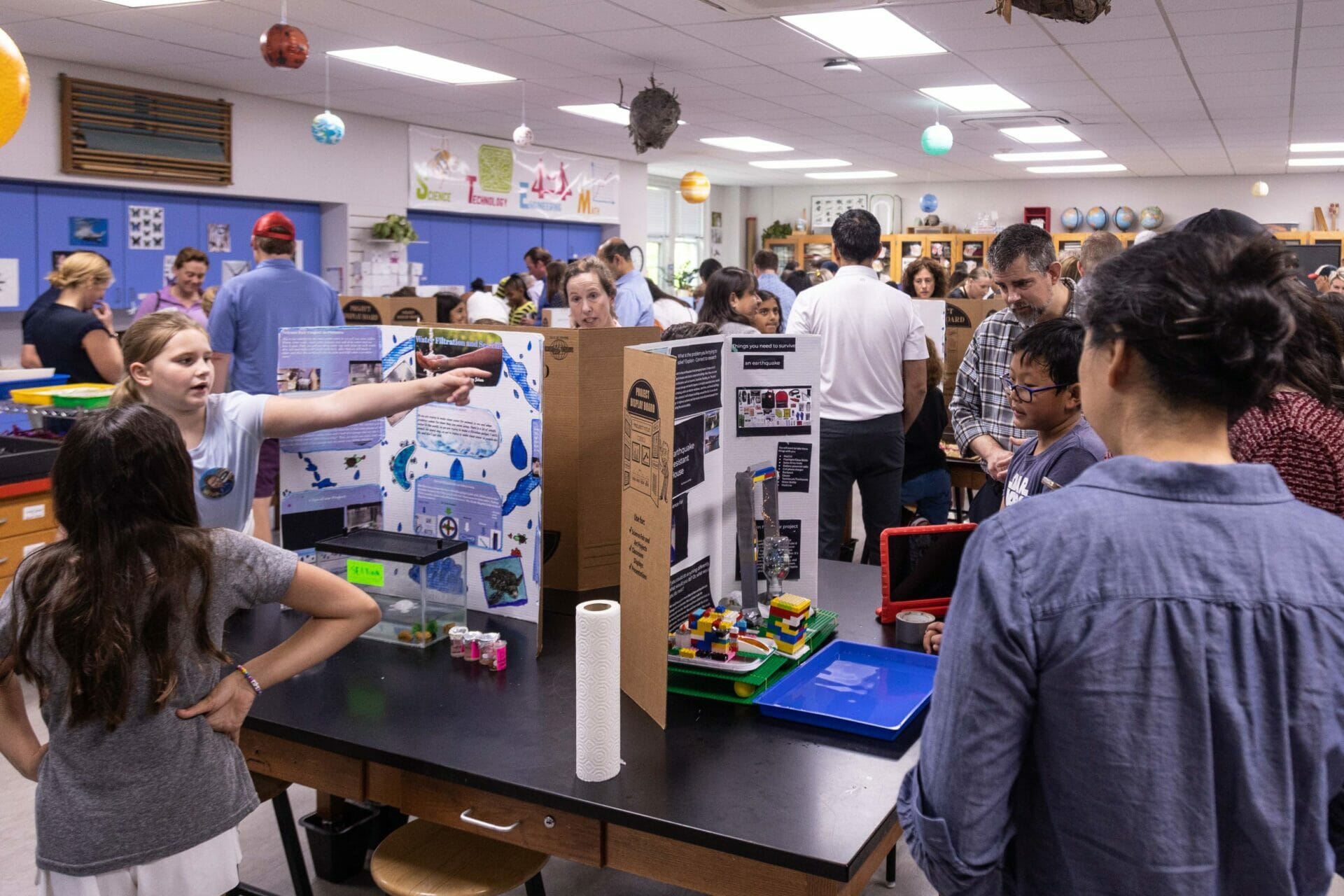The Lower Schoolers were back at it last week with their third and final cross-curricular, themed week of the school year. After a Pumpkin Week in the fall and a Winter Wonderland-themed week in February, they had a weeklong Summit for Climate Change which mixed together lessons in science, math, and literacy.
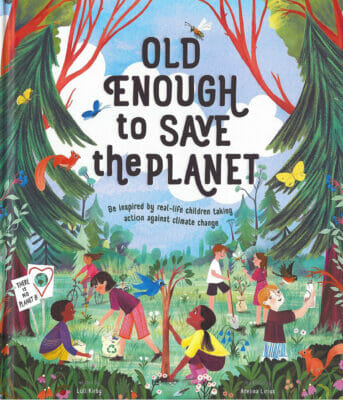 To kick off the week, in the library, every Lower School class read the book Old Enough to Save the Planet by Loll Kirby. This book showcases 12 young activists from across the world who are taking action against climate change. It harkens to the idea that each of us, no matter what our age, has the potential to shape the future of the planet—an idea demonstrated throughout several cross-curricular activities and tasks at MICDS Lower School all last week.
To kick off the week, in the library, every Lower School class read the book Old Enough to Save the Planet by Loll Kirby. This book showcases 12 young activists from across the world who are taking action against climate change. It harkens to the idea that each of us, no matter what our age, has the potential to shape the future of the planet—an idea demonstrated throughout several cross-curricular activities and tasks at MICDS Lower School all last week.
For the math portion of the lesson, “Students enjoyed exploring math with measurement outside of their classroom doors,” said Diane Broberg, JK-12 Mathematics Department Chair. “The math goal for each grade was to have some experience with measurement and graphing as we tied it into climate change.” How this was accomplished varied among the grade levels.
In Junior and Senior Kindergarten, classes talked about soil and the role of worms. Each student had their very own worm. They talked about the number of hearts worms have and learned a song. They counted the rings on their worms and measured their length using Unifix cubes. Each class graphed the data using a dot plot.
In first and second grade, students studied trees and their role in the environment. They measured the height of trees using indirect measurement and they graphed the heights using a “human” graph. Some classes even created a pictograph.
One student shared how measuring the tree height was challenging. “Measuring the trees was complicated but fun because you needed to concentrate, and it took a lot of teamwork and cooperation. I would love to do it again,” said Barrett E. ’33. The height of the trees was also remarkable to some of our Lower School students. “It was surprising how tall the trees were,” said Alexander O. ’34. “It made me want to measure more trees.”
In science, Beasley students explored ways to take care of the planet. In JK, they learned about chicks and how chicken manure is a sustainable way to fertilize gardens. They also learned about vermicomposting worms and explored worms found in the composting worm bin.
In SK, students observed chicks in our School garden and learned about different ways that chickens help with sustainable agriculture. Chickens are great at eating weeds, eating pest insects, breaking down compost, tilling soil, and leaving behind natural fertilizer with their manure.
First-grade students explore biomimicry and engineered their own biomimicry prototypes to help solve a problem. In addition, they dug their hands into the soil and explored the insects and worms living in our garden as they dug up their tulip bulbs and planted tomato plants. Also, first graders have been studying the trees in the courtyard all year by drawing the same tree each season. Students finished their tree study with their spring tree portraits.
Finally, over the past month, the fourth-grade students have been hard at work with their science fair projects. They have become experts on their topics and are ready to tackle climate change. They shared in class the value of presenting what they learned and shared how they felt like they were actually teaching adults something new.
Last Friday, the Summit for Change concluded with the Fourth Grade Science Fair. “I can’t give enough credit to Laura Pupillo and her fourth-grade students for their sustainability-themed engineering solutions. These projects were presented on Friday to parents and guardians, and they were showcased for students to see during the rest of the day,” says Paul Zahller, JK-12 Science Department Chair. “This was a tremendous way to culminate the week in science. I saw a solar-powered boat, hydroelectric turbine, atmospheric albedo geoengineering, trash collectors, denim building insulation, vermiculture, and many more innovative, sustainable ideas!”
“In order to repair the world, we have to first have a relationship with it and see ourselves as capable change makers,” said Laura Pupillo, Lower School Science Teacher. “At MICDS, even our youngest students get involved with making the world a better place. The best part of my job as the Lower School Science Teacher is seeing our students tackle real-world problems and share their learning with others.”
